

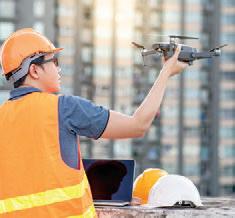
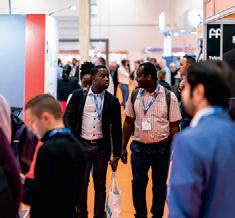

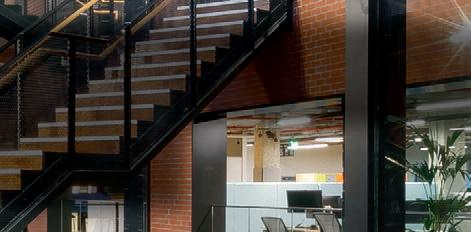

FACILITIES MANAGEMENT JOURNAL VOLUME 30 | 05 MAY 2022 FACILITIES SHOW Return of the world’s leading FM event WASTE MANAGEMENT Results of the FMJ/Grundon survey 42 38 MAINTENANCE Drones for façade inspection 32 O cial magazine FM Clinic: The challenges and opportunities of integrating ESG into organisations WELCOME TO DUBLIN The crown in Flutter Entertainment’s European real estate
HydroTap
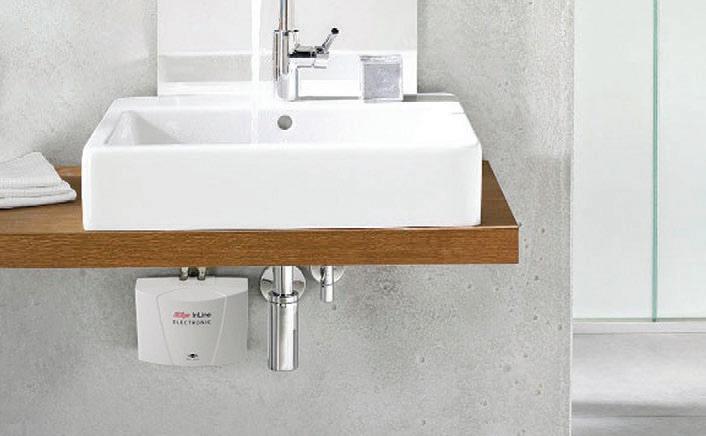

Drinking water
• Lux sensor and sleep mode to power down in the hours of darkness
• Programmable timer to help conserve energy during periods of low or non-usage

HydroBoil Plus
Drinking water
• PowerPulse technology to maintain the water temperature without wasting energy




• Inactivity and low light sleep modes to conserve energy during periods of low or non-usage
• Innovative bare wire heating technology to ensure energy is only consumed when the product is in use, saving up to 85% versus stored water heaters
• ERP rating: A

Contact us to find out how our products can help you reduce your energy consumption and take the sting out of energy prices. Call 03456 005 005 for more information Scan the QR code to find out more
Save energy with Zip
save your budget
to help
instantaneous
InLine
water heaters
kpm media Unit 1 Mill Place, Platt Business Estate, Maidstone Road, Sevenoaks, Kent TN15 8TB Tel: 01322 662289
Editor Sara Bean sara.bean@kpmmedia.co.uk
Assistant Editor & Social Media Development Sarah O’Beirne sarah.obeirne@kpmmedia.co.uk Tel: 01322 476815
Director & Designer Warren Knight warren.knight@kpmmedia.co.uk Mob: 0780 1947757
Sales Director Danny Grange danny.grange@kpmmedia.co.uk Mob: 07867 418994
Business Administrator Sami Smith sami@kpmmedia.co.uk
Accounts Trish Boakes accounts@kpmmedia.co.uk Group CEO Nigel Copp nigel.copp@kpmgroup.co.uk

Editorial steering committee
Alan Hutchinson, Facilities Director, Howard Kennedy LLP
Charles Siddons, Head of Operations, NHS Property Services
Darren Miller, Head of EMEA Facilities Operations, PayPal
Ian Wade, Head of UK Estates, British Medical Association
Lucy Hind, Senior FM Lecturer, Leeds Beckett University
Marie Johnson, Head of Workplace & Wellbeing, Nominet
Russell Wood, Facilities Manager at Dentsu Aegis Network
Russell Burnaby, Head of FM, Regeneration and Environment, Brent Council
Simon Francis, Principal Lead, Estates and Masterplanning, ZSL
Simone Fenton-Jarvis, Workplace Consultancy Director at Relogix
Stephen Bursi, Facilities Lead, BAE Systems
Stephen Vagg, Head of Estates and Strategy, National Express Group PLC
Vicky Thorp, Head of Facilities Management, CLSH Management

kpm media adopts a sustainable policy of using paper from managed forests. Printed in the UK by The Gemini Print Group www.gemini-print.co.uk
© Copyright 2022 kpm media
The publisher does not necessarily agree with the views and opinions expressed by contributors. No material may be reproduced in part or whole without written permission from the editor. Editorial contributions are accepted on an all-rights basis only. Letters to the editor may be published in their entirety or in edited form and remain the property of kpm media. While due care is taken to ensure the accuracy of information contained in this magazine, the publishers cannot be held responsible for any errors in editorial articles or advertisements. Subscriptions are available to non-qualifying and overseas readers at £120 p.a. (UK), £160 p.a. (EU countries) and £240 p.a. (overseas-other).
this month...
comment
Welcome to the first Facilities Show guide edition since 2019. It marks a return to London’s ExCeL for the leading event aimed at the facilities management sector. On page 42 we hear from a cross section of exhibitors on what they are showcasing on their stands, what they’re most looking forward to at the show and their views on the current state of the FM sector.
As one exhibitor put it, to say that plenty has changed since the pandemic would be an understatement. We’re facing a much-changed workplace landscape since we last got together, and there will be a lot of conversations both on the stands, at the seminar sessions and while networking on how FM has weathered the pandemic and must continue to adapt.
An important area of discussion will be how to transform building occupancy in response to the growing expectations of employees for engaging and appealing work environments that support hybrid work patterns. This was the basis of my interview on page 52 with Despina Katsikakis the Global Head of Workplace for Cushman & Wakefield who has over 35 years of experience in researching and implementing transformative workplace environments.
She is optimistic about the future of the o ice, revealing that few corporate clients have plans to cut their o ice sizes. Many are looking to manage their existing real estate di erently. So historically where around 60 per cent of space in an o ice was dedicated to individual desks, this will reduce to about 30 per cent of individual workspaces, sustained with a range of alternative areas such as focus rooms, booths, quiet areas and libraries.
Significantly, she also recognises the role the FM sector plays in helping to deliver transformative workplace experiences, something positive to reflect on as we return together for the show. You can visit FMJ on stand FM 1410.
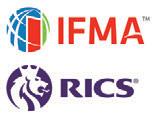
As always, we’d welcome your feedback about any aspect of the magazine, together with your insight into what’s happening in the FM sector.
sara.bean@kpmmedia.co.uk
MAY 2022 3 FMJ.CO.UK
Total Average Net Circulation 10,641 July 2020 to June 2021 SUPPORTED
BY
FACILITIES MANAGEMENT JOURNAL JOBS Find your next role with the FMJ Jobboard Visit jobs.fmj.co.uk for hundreds of roles in FM and associated industries jobs. fmj.co.uk EDITORIAL COMMENT






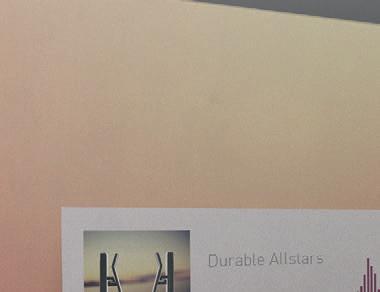








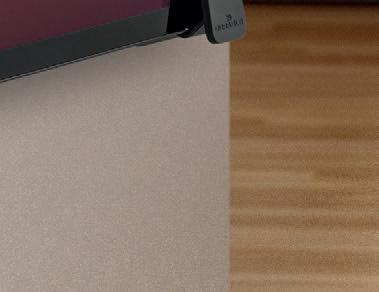








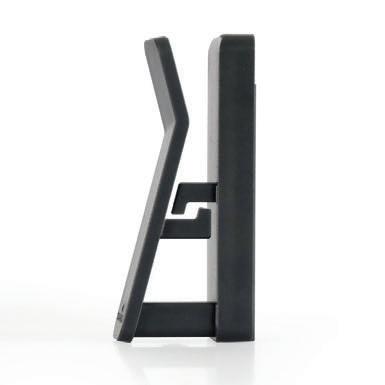
UNIVERSAL WALL BRACKET FOR SPACE-SAVING INSTALLATION OF TABLETS AND SMARTPHONES DURABLE‘s NEW Tablet Holder Wall Dock VISIOCLIP creates a space-saving and simple design which blends discreetly into any environment. With self-adhesive & permanent fixing options included, the dock can be used in portrait or landscape format, for complete versatility. For More Information: 01202 893799 | hello@durable-uk.com | www.durable-uk.com
FMJ NEWS
This month’s summary of everything that has hit the headlines in the FM sector.
ASSOCIATION NEWS

Comments from IWFM CEO and the former CEO of The Institute of Hospitality.
ADVICE AND OPINION
NEWS & ANALYSIS 12
OPINION
Understanding di erent working styles can help us to rethink the very nature and purpose of the o ice says Giles Fuchs. COMMENT 12
Laura Clare Davies, Sustainability Specialist at Inspired Energy, discusses how using the latest technology and data analytics can bolster energy management initiatives.

COMPLIANCE
Buildings that wouldn’t typically experience shutdowns may have increased the risk of legionella warns Waterborne Pathogen Risk Reduction Strategist Eric Myers.
FAST FACTS
Remote Monitoring o ers users the ability to gain insight into a range of asset’s health status, performance and behaviour patterns says John Roe.
BLOG & SOCIAL MEDIA

Sustainability is about making good decisions, you just need to dig a bit deeper says Owen George of Grundon Waste Management.
FM CLINIC
Meeting Environmental, Social and Governance (ESG) criteria is now an essential part of the FM remit. What are the challenges and opportunities for FMs in integrating ESG into their organisations?
MAINTENANCE
MANAGEMENT
Management Survey, carried



out by FMJ in partnership with Grundon Waste Management.
FACILITIES SHOW GUIDE

As the Facilities Show returns to ExCeL for the first time in three years, we hear from some of the leading exhibitors on what you can expect to see and do at the world’s leading event.

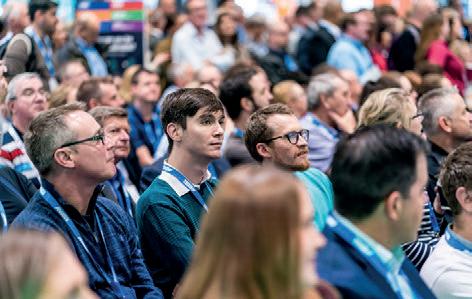
ENERGY MANAGEMENT


Paul Walsh of CIM, looks into the ways a smart building analytics strategy can help monitor high energy use on industrial sites.
INTERVIEW
Despina Katsikakis, Global Head of Workplace at Cushman & Wakefield, and a pioneer in workplace consultancy services on how FMs can play a critical role in the transformation of building occupancy.

SUSTAINABILITY
Andy Sparrow, Head of Energy and Sustainability at Platinum Facilities explains the energy and cost saving benefits of turning your building BMS into a BEMS.
HEALTH & SAFETY
MIFM

60 New product and service launches and company news from the FM industry.






Next Edition
In the June issue, there is a practical guide to signage for the workplace and the role of risk assessment and site surveys to determine a best practice approach to safety and communication. Our interiors focus delves into the design and management elements organisations need to explore to lure back sta to the o ice and takes a look at the latest trends in o ice interiors from the Clerkenwell Design Festival. We look at the contribution ‘cobots’ can make to the e iciency and manpower needed in cleaning services and assess the other technologies available to automate cleaning and complement the role of the cleaning sta . And Raj Krishnamurthy, CEO at Freespace discusses the trends driving the boom in hybrid working, how employee preferences and needs are shaping the future, and why dynamic capacity planning holds the key.
sara.bean@kpmmedia.co.uk
To register for your free copy of FMJ visit fmj.co.uk

MAY 2022 5 FMJ.CO.UK
THIS MONTH...
42
50
52
56
58
PEOPLE 71 Find out who’s moving where in the facilities management profession. RECRUITMENT 72 Steve
and Industries, on creating a diverse and inclusive workplace. TRAINING 73 Peter
Director
apprenticeship
organisations meet sustainability commitments. CAREERS NEWS 74 A brief roundup of the latest careers news in the facilities management sector. CASE STUDY 26 Flutter Entertainment has realised its vision for a collaborative, sociable, knowledge-led and desirable workplace with its move to a
million global headquarters in Dublin.
Neglecting Digital Screen Equipment (DSE) assessments may have le millions with homeworking set-ups that could damage their health says Guy Osmond.
Butler, author of Inclusive Culture: Leading Change Across Organisations
Behan
of Group Horizon, says the firm’s Junior Energy Manager
programme can help
€15.5
32
34
WASTE
38
Dave Peacock on an innovative approach to façade inspection using drones and artificial intelligence (AI) to check up on building façades.
Shane Betts, Head of Corporate, Integral UK looks at maintenance for the digital age.
Transparency is key, as FMs put environmental targets above compliance, finds the latest Waste
FEATURES 42 FM CAREERS 72
10
14
16
18
20
06
08
CONTENTS Follow us on Facebook and Twitter @FMJtoday
LEGAL VIEW
THE P&O CASE AND WHAT IT COULD MEAN FOR FUTURE REFORM OF THE LAW
Greg Burgess, partner in the employment law team at DMH Stallard

The sackings by P&O of 800 staff without consultation and the bringing in of agency staff from overseas on lower hourly rates has caused a media storm and significant political condemnation. The question that arises is whether it was lawful of P&O to ‘fire and rehire’.
The backdrop for the P&O case is of a business under huge financial pressure. With huge COVID-related losses, and a pension scheme in deficit, in an industry with tight margins anyway, it came as little surprise that drastic action was needed to save the business.
Most employers making large-scale redundancies in the UK must consult with their staff or the unions for at least 30 or 45 days, depending on how many redundancies they are making. P&O used a loophole in the law that applies to staff on foreign-registered ships, which meant that strictly speaking they did not have to follow the UK rules on redundancy consultation.
That meant P&O could make hundreds of their staff redundant by a pre-recorded video message on 17 March 2022 without the consultation required under UK law. P&O say that they have compensated their staff for this lack of consultation.
Employers have been able to fire and rehire staff under UK law for many years. It is a relatively common tool in an employer’s armoury, although it should usually only be used as a last resort.
Typically, an employer will want to persuade staff to agree to a change in their terms and conditions, such as a change in benefits or a pay reduction if the business is in financial difficulty. If staff agree, then the change can be made. We saw a lot of this during the COVID crisis, where staff were agreeing to often significant pay cuts just to keep their jobs. But if staff do not agree then the employer can consider forcing the change through.
We have seen scenarios where an FM business has inherited groups of staff under TUPE from different contracts and a few years later they want to bring staff on to the same terms and conditions. Persuading them to agree to move on to new terms and conditions can be a challenge. In such circumstances, the business may serve notice on their staff to terminate their employment and offer them a new employment contract on new terms immediately after their notice period runs out. This is an area where employers do need to tread carefully, but it is achievable.
With there being such a strong outcry about the actions of P&O there is now talk of the government bringing in new legislation to crack down on this. In fact, new guidance was published only last year to deal with fire and rehire. The government’s advisory service ACAS published new guidance in November 2021 which encourages employers to make every effort to get staff to agree to changes before resorting to fire and rehire. That guidance did not take us much further.
In late March 2022, shortly after the P&O redundancies were announced, the government confirmed it was going to introduce a new statutory code of practice, which will set out practical steps employers must follow to ensure they are meaningfully consulting with their staff.
The risk of a failure to follow the code leading to an increase in compensation for the individual of up to 25 per cent will deter some employers, but the reality is that UK employers need to have the ability to reshape their organisation and change terms to ensure they retain their competitiveness, particularly in industries such as travel and FM where margins are typically tight.
BCO HONOURS LONDON’S BEST WORKPLACES
Six London workplaces have been recognised at the annual British Council for O ices’ (BCO) Regional Awards.
The awards recognise the highest quality developments in the Capital, which are setting the standard for excellence in the o ice sector across the UK.
The winning workplaces include:


• 80 Charlotte Street (Commercial Workplace)
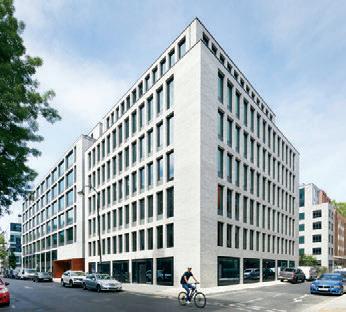

• Plumtree Court, 25 Shoe Lane (Corporate Workplace)
• Dojo, The Brunel Building, 2 Canalside Walk (Fit Out of Workplace)


• ASOS HQ, Greater London House (Refurbished/Recycled Workplace)
• Pennybank , 33-35 St John’s Square (Projects up to 1,500m2)
• 1 Triton, 1 Triton Square, Regent’s Place (Innovation)
Highly Commended workplaces:
• 1 Triton, 1 Triton Square, Regent’s Place (Highly Commended – Refurbished/Recycled Workplace)
London winners will now compete with those from other regions at the BCO National Awards in October 2022.
CIWM RESPONDS TO DEFRA’S PROPOSALS TO TACKLE WASTE CRIME
CIWM, the leading professional body for the resource and waste management sector, has published its formal response to Defra’s (Department for Environment, Food and Rural A airs) two recent high-profile consultations to tackle waste crime.
The first was on the reform of the waste carrier, broker, dealer registration system (CBD) in England. The current system requires any person or business that transports waste, buys and sells waste, or arranges the transportation of waste in England to be registered with the Environment Agency as a waste carrier, broker or dealer.
The Independent Review into Serious and Organised Crime in the Waste Sector in 2018 highlighted “the extent to which waste is handled by an increasing number of, o en opaque, intermediaries” and recommended that “Registration and duty of care requirements for carriers, brokers and dealers should be reformed’. This consultation sought feedback on Defra’s proposals designed to ensure that controlled waste in England is moved or traded by permitted and technically competent operators.
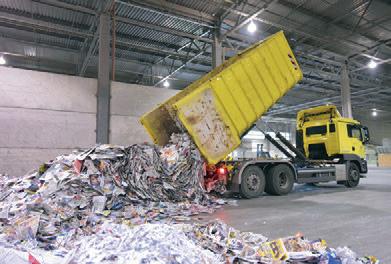




The second of these consultations was on the introduction of mandatory digital waste tracking. Currently, over 200 million tonnes of waste is produced in the UK each year but there is currently no single or comprehensive way of tracking it from cradle-to-grave. The ability to collect and collate large amounts of data will make it much easier for legitimate waste companies to comply with regulator reporting requirements whilst at the same time making it harder for rogue operators to do business and distort the market.
In general, CIWM has welcomed Defra’s proposals and remarked that they were taking a step in the right direction.
Lee Marshall, Policy & External A airs Director of CIWM commented: “We hope that these proposals, if enacted, will be accompanied by enough funding that will allow the regulators to make the most of these new tools, so that they can further clamp down on waste crime. However, the CIWM was disappointed to note that the proposals for Carriers, Brokers and Dealers did not cover the whole of the UK.”
The full CIWM response to both Defra’s proposals can be found at https://www.ciwm. co.uk/ciwm/knowledge/consultations/consultation_responses_for_2022.aspx
MAY 2022 6
NEWS & ANALYSIS FMJ.CO.UK
Met Police awards property services integrator contract to



RICS SAYS DEMAND FOR UK OFFICE SPACE IS MOUNTING AS OCCUPIERS PLAN RETURN
Sodexo has secured a £45.3 million contract with the Metropolitan Police to manage its estate and property related services across London.
The seven-year property services integrator contract, with an extension opportunity for a further three years, will see Sodexo’s property professional services team work with the UK’s largest police service to manage its estate. This includes: police stations, New Scotland Yard, communication facilities, residential and training centres as well as air and marine support units that support the broad spectrum of activities performed by the Metropolitan Police.
The team will provide a range of services including strategic property advice, provision of IT systems, financial management, procurement, contract and supply chain management, and operations and service continuity planning.
This new contract is the first to be procured through the Mayor’s Office for Police and Crime’s new property services integrator framework. Sodexo was recently appointed sole supplier for the framework which is available to all UK public sector organisations providing direct access to a range of property-related services and support.

Mobilisation of the contract started in April and will be complete with full services live on 1 November 2022.
The start of 2022 saw a jump in new tenants looking to rent UK commercial property, with the upli particularly prevalent in prime o ice spaces, according to the RICS Commercial Property Market Survey, Q1 2022.

Respondents to the survey saw a notable increase in UK o ice demand in Q1 2022 with the net balance improving to +30 per cent from a flat picture at the end of 2021. A considerable change in sentiment was also seen in the retail sector, as occupier demand moved into relatively neutral territory (-1 per cent net balance), the first time this reading has been neutral or positive since the beginning of 2017.



Looking at commercial property as a whole, for the first time since 2015 a net balance of +32 per cent of respondents reported an increase in occupier demand at the all-sector level (retail, o ice and industrial uses). With the jump in occupier demand for new o ice space, rents are expected to rise with a net balance of +19 per cent expecting a rise, compared to +7 per cent in the last quarter.
Regionally, rents for prime o ice space in central London are anticipated to outpace most other UK regions, while the South East is interestingly the only region in which secondary o ice space is predicted to see growth. The latest research published by RICS in March has shown that highquality and well-managed commercial real estate – such as prime o ice space – is integral to levelling up UK towns and cities, and one of the asks of the research is that UK Government support CRE, and promote investment in it, to secure levelling up across the UK.
10-13 MAY 2022 Interclean Amsterdam RAI Amsterdam, The Netherlands www.intercleanshow.com/amsterdam 11-13 MAY 2022 Health Estates and Facilities Management Association Forum 2022 Stadium MK, Milton Keynes https://www.hefmaforum.co.uk 01-02 JUNE 2022 World Workplace Europe Hybrid Event https://worldworkplaceeurope.ifma.org 07-09 JUNE 2022 FOOTPRINT+ A zero carbon future Brighton https://www.footprintplus.com/ 08 JUNE 2022 IWFM Conference 2022 30 Euston Square, London, NW1 2FB www.iwfm.org.uk/iwfmconference.html 27-28 JUNE 2022 Facilities Management Forum Radisson Blu Hotel, Manchester Airport www.facilitiesmanagementforum.co.uk 14-15 SEPTEMBER 2022 RWM & Letsrecycle Live NEC, Birmingham www.rwmexhibition.com 18-20 SEPTEMBER 2022 The Flooring Show Harrogate Convention Centre, Harrogate www.theflooringshow.com 20-21 SEPTEMBER 2022 Workplace & Facilities Expo RDS Dublin, Ireland www.workplaceandfacilitiesexpo.com 17-19 MAY 2022 www.facilitiesshow.com DATES FOR THE FM DIARY MAY 2022 7 If you have any knowledge of FM news from across the world, please feel free to get in touch with our assistant editor Sarah O’Beirne email
sarah.obeirne@kpmmedia.co.uk
Sodexo
FMJ.CO.UK NEWS & ANALYSIS
THE IMPACT OF WFH ON THE HOSPITALITY INDUSTRY

impact of COVID accelerated the trend towards working from home in an unprecedented way. Now even with remaining restrictions fully li ed, polling indicates there is a general consensus that we will never see workers return at the same rate as before.
The shi to WFH means that many hospitality businesses are just not seeing anything like the business patterns that were the norm before the pandemic. Many businesses have adopted a hybrid o ice format, with either two or three days at home and the rest in the o ice. While some mandate that either Monday or Friday attendance is required, many do not – so the impact is larger at the beginning and end of the working week. What’s more, with prime o ice space so costly in city centres, some businesses have taken the opportunity to dispense with physical o ices altogether.
TheThe contract catering sector is wrestling with the challenges – half empty o ices are obviously going to have lower footfall in the sta restaurants. Many are finding their contracts unviable and are having to remodel their o erings to remain sustainable. So how can hospitality businesses survive these challenges? The answer in any business is to focus on the things you can change, optimise them, but never tick the ‘job done’ box, because it never will be.
Many are putting their voice to support UK Hospitality’s campaign for a reduced VAT rate to 12.5 per cent, although given the state of the public finances many feel that this will be a long battle. Everyone is, of course looking at their opening times and sta ing models, it is estimated that WFH has reduced the hospitality headcount by in excess of 90,000 people.
Some businesses are having success renegotiating terms with landlords. Others have redesigned their menus, opening times and processes to improve e iciency. Ours is a resilient, savvy and agile industry, used to meeting and overcoming challenges. Businesses are matching rotas to forecasts more closely, using the smart technologies that have evolved over the last decade to add science to the process.
Design and layout matter greatly now, and so, of course, does a sense of cleanliness and hygiene. Post-pandemic these are no longer minor concerns, they are, and will remain high on people’s consciousness. We all recognise both that people must feel safe and protected, and that they are more aware of the risks of poor hygiene than ever.
So, despite the challenges there are reasons to be optimistic. Our industry has a long history of reinvention and innovation. In my lifetime the quality at every level, from the sandwich and co ee shops through to the luxury hotel has improved beyond measure. We are more in tune than ever with meeting and exceeding customer expectations. This is also true when it comes to cleaning and hygiene practices.
Businesses must create a clean, hygienic and fresh-smelling environment for the best customer experience possible. P&G Professional has trusted brands that help by providing innovative products and systems that are simple to use, streamline cleaning practices to get the job done right the first time, while helping hospitality establishments instill confidence in their clientele through the use of trusted, quality products.
Whatever the future holds, hospitality businesses must demonstrate their agility and above all, their quality in order to stave o their competitors and truly thrive.
THE WORKPLACE OPPORTUNITY LAID BARE

WFM’s latest Market Outlook research, released last month, has provided a clear picture of the state of our sector and where it goes from here, highlighting some intriguing and encouraging shi s amid continuing challenges and uncertainty.
With the caveat that our research preceded the Russian invasion of Ukraine, the general outlook could be described as one of recovery and optimism as the six in 10 expecting an improved outlook for 2022 remained consistent with 2021, with fewer expecting it to worsen.
Earlier research has revealed that the workplace and FM profession has o en felt pushed into the background, marginalised by the C-suite and excluded from strategic decision-making; it’s therefore very encouraging to note that more than one in three professionals surveyed say they are now better positioned within their organisation.




IOf course, correlation doesn’t equate to causation, yet the findings align with what we’ve been hearing anecdotally for the past two years: the impacts of the pandemic, and our profession’s crucial management of and responses to them, were key in highlighting the value and influence of workplace and facilities management.
From an awful crisis arose the chance to shine and our profession seized it. We are seeing multiple opportunities appear at once, chief among them being the opportunity to reimagine the workplace.
Our findings echo the impact that COVID has had on the client organisations of survey respondents: 79 per cent have changed their working strategies to cover working from home or elsewhere, 56 per cent have included working flexibly. Importantly, almost half (44 per cent) reported having reduced occupied spaces, indicating a wide adoption of the midpandemic workplace lesson that work is an activity, not a destination.
There are, however, di ering views on what these changes mean for our profession’s future. On the one hand, a recognition of the changing requirements

to manage this new working environment comes through as a negative impact, as concerns that reduced o ice footprints and increased home and hybrid working will reduce the demand for FM services.
On the other hand, there is acknowledgement of positive impacts in the shape of improved positioning for the FM team. Perhaps among them are the third of respondents who saw their ‘professional focus’ as ‘enabling work wherever it happens’ rather than ‘managing spaces in which people work’.
It has been said that opportunities for the workplace profession to see through transformational change have previously been hampered by cost and board level ambivalence. As our research suggests – at least for some - C suites have been attuned to hybrid working as business owners have seen workers adapt easily to sudden relocation, causing them to reconsider long held perceptions of what ‘o ice work’ is.
MAY 2022 8 ASSOCIATION NEWS
Peter Ducker, a member of P&G professional’s expert advisory council and former CEO of the Institute of Hospitality
NEWS & ANALYSIS FMJ.CO.UK
IWFM CEO, Linda Hausmanis
Poorly maintained smoke control systems can be deadly. Whilst fire grabs more headlines, smoke is the real killer. More than twice as many people die from smoke inhalation than from burns. Often, smoke incapacitates so rapidly that victims are unable to make it to an otherwise perfectly accessible exit.

Why a ‘smoke test’ is not a service

There is no substitute for a proper service. If your current servicer is not conducting full motor resistance and load tests, checking battery charge rates and identifying cause and effect of any failures, then your system is not being tested robustly enough to ensure that it will work in the event of a real fire.


Competency and certification are crucial Colt carries out thorough, notarised testing on each system we maintain and our engineers receive full technical training on all system types when they join. This is refreshed regularly and


supplemented whenever important developments or updates to the legal requirements occur. Colt has 60 fully trained engineers and is the UK’s first company to be awarded certification to both IFC SDI 19 and SDI 05.

Furthermore, nearly a quarter of our engineers have been with us for over 20 years. That’s truly unparalleled experience. Small wonder then that, when looking for reliable servicing for their smoke control systems, more and more people are turning to the most competent. Colt.
To find out more, visit us at: coltinfo.co.uk/service&maintenance call us on 02392 491735 or email service@uk.coltgroup.co.uk
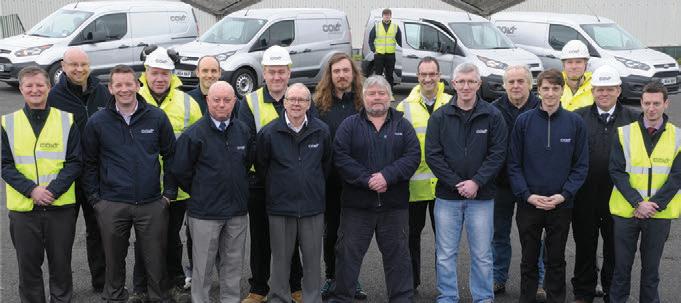
Don’t discover the hard way that a Smoke Test is not a Smoke Control Service.
Choose Colt Service Expertise built on proven experience.
WORKSTYLES GUIDANCE
boon for workers and businesses.
“SEMOB” WORKING
Perhaps a fundamental question underlying all this is, what is the o ice and what purpose does it serve?
Historically, the o ice was somewhere you went to work and then went home. But the nature of work and how we do it has changed fundamentally. The modern working day balances social activities and time to use services that aren’t available to us during our leisure time.
To accommodate this the o ice is evolving beyond its traditional functions as a mere workspace. At OSiT, for example, our Service-Enhanced, MultiOccupancy Buildings (SEMOB) aim to provide a service alongside a space, and the possibilities are almost endless.
As employees increasingly return to o ices, many companies are rightly asking themselves what exactly the future of work holds. In the two years during which the majority of people worked from home, we have learned important lessons: we are social creatures that thrive o in-person interaction and many of us are more productive and happier working collaboratively in an o ice. However, our working behaviours and o ice environments must adapt to a post-pandemic desire for flexibility and highquality spaces.
So, as we tip-toe towards a new normal, companies must make the most of the new opportunities to re-engage remote workers, to rethink the very nature and purpose of the o ice. Understanding the di erent working styles that have emerged will be vital to this.
HYBRID WORKING
The concept of hybrid working was popularised during the pandemic. It is o en confused with flexible working but actually refers to how an employee splits their time between working in the o ice and remotely – which may be from home or satellite o ices or even co ee shops and flexible working spaces.
Anecdotally, it seems to be how most companies and employees see the return to work happening, at least initially. Although how companies choose to implement the model varies enormously.
For employers, hybrid models can o er an answer

to some of the negative issues of permanent home working like a loss of productivity, isolation and mental health issues. But they aren’t right for every situation. Many work interactions require people to be face-to-face more o en.
For example, the best creative work happens when a team is in full flow and everyone is focused on solving a collective problem. That is best done when teams are together in the same space. For situations like this many companies have implemented activity-based working.
WHAT IS ACTIVITY-BASED WORKING?
The idea here is that employees are more productive when they have the right spaces in which to complete certain tasks. And, as the name suggests, it allows people to choose their work setting based on what they are doing at a particular time.
While this sounds like a great solution it is not without challenges. Some of the amenities which are being expected by businesses include: entertaining spaces, breakout areas and even recording studios to accommodate a variety of activities such as client meetings, team brainstorms and even podcast production. For high quality o ice buildings this is the standard, but others are being le to catch up.
Another challenge this presents is dealing with di erent levels of occupancy, as some spaces will be used more than others, and some days of the week will inevitably see greater footfall. But, if these challenges can be overcome, the result will be a
O ice spaces could include everything from gyms and shops to doctors surgeries, dentists, hair salons and more. In recognition of how people are increasingly travelling for work and important meetings, our Monument centre includes bedrooms, ideal for stopping over a er important meetings or simply late-night social events.
The SEMOB model reflects the move to a more holistic working environment. It is important to recognise that professionals travel to the city centre for more than just work, so a space which prioritises convenience and actively meets the needs of occupiers will be popular with both employees and businesses.
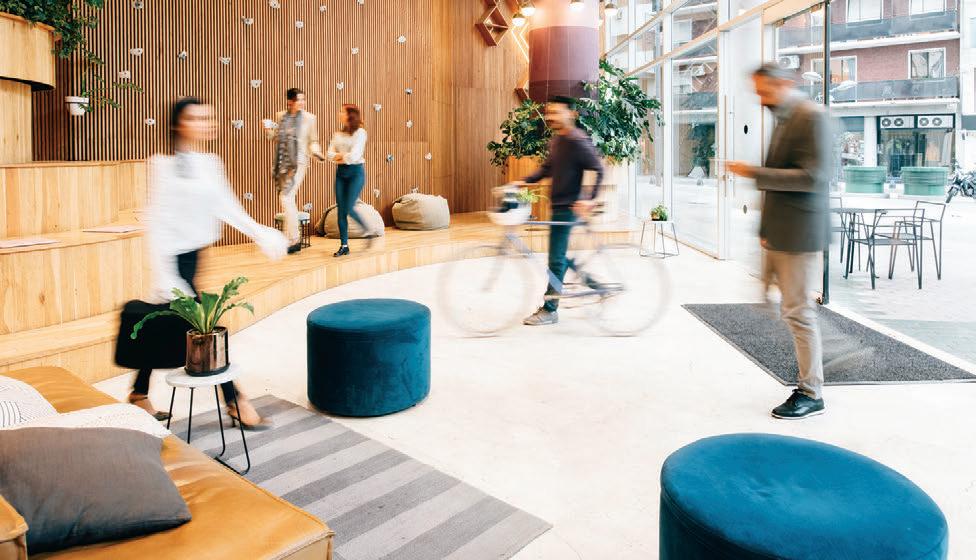
NAVIGATING DIFFERENT MODELS
The pandemic has taught us many things. We have learned how much we value time with our families and the time to do things we really love. But, it has also taught us that workplaces are vital to many e icient work practices and to worker wellbeing, as well as being an important driver of economic activity in cities.
This evolving discussion on the work environment reflects a real need for businesses to take the changing priorities of their employees into consideration. Making informed decisions about work strategies will be essential for a stronger business and workforce.
And, while the adoption of new work styles and settings present unique challenges, there is an exciting opportunity for companies to reimagine how they want to engage with their employees and the spaces they share.
OPINION MAY 2022 10
ADVICE & OPINION
Demystifying di erent workstyles that have emerged over the past two years is vital for postpandemic organisations to thrive, says Giles Fuchs, CEO of O ce Space in Town (OSiT)
For thrii-thinkers in washroom design
















































Introducing the new 3-in-1 washroom tap. Delivering soap, water and air touch-free from one source, the deck-mounted ThriiTap+ is the smarter way to design hygienic washrooms.








thriitap.com +44 (0) 1722 744 594
FRESH ENERGY
at Inspired
improvement and track their results to see if they are meeting or exceeding their goals and if the strategy needs further optimisation.
Organisations required to comply with regulatory schemes such as Streamlined Energy and Carbon Reporting (SECR) and the Energy Savings Opportunity Scheme (ESOS) will appreciate that sound data management is key. Those who have already submitted reports for SECR will tell you that data collation can be challenging, which means that starting data collection early is crucial.
HARNESSING THE BENEFITS OF ON-SITE GENERATION

Businesses that want to reap further sustainability, site resilience and cost benefits are turning to installing on-site generation. Energy management systems are vital in helping facilities managers harness the benefits of on-site generation, giving more control over all aspects of energy use.
Today, solar PV is a popular, robust renewable energy generation option and installing solar panels on the roof of a building for a project of <1MW in size shouldn’t require planning permission. Most solar panels will provide a good level of generation even on low light days and as they have a low degradation rate, could last up to 40 years.
As we all navigate volatile energy prices, the transition to a low-carbon future is one that many businesses are looking to accelerate where possible. Energy management is central to this and as energy prices continue to rise, for many businesses successful energy management is critical in order to thrive.

Most organisations have started their journey to a low-carbon future with ‘quick win’ energy e iciency measures. These may include switching to LED lighting, using timers for appliances and adjusting heating controls. These measures are important, low cost and simple to implement and something everyone should be doing. But to move closer to a low carbon future and reap greater e iciency and cost saving gains, businesses must take the next step and adopt an integrated approach. This should look at energy optimisation and behavioural change, as well as reducing usage.
This holistic approach to energy management will not just focus on how much energy a business is using but also when and how they are using that energy. Digital technology has an important role to play here.
POWER OF DATA
To make e ective change, data is key. Put simply, you can’t manage what you don’t measure, so businesses should start measuring their energy
consumption before they begin their optimisation journey. Here technology will pay dividends, as data will show where, when and how a facility is using energy. This can be achieved with an energy management system (EMS), which will collect energy measurement data through a series of smart meters and collate it so users can monitor and ultimately manage their energy.
Smart metering can also help businesses to keep on top of their costs by implementing an automatic meter reading (AMR) device for non-half hourly supplies or a data collection contract for half-hourly supplies. This can provide them with greater control with a managed rollout. Measuring half-hourly (HH) data, particularly for those with multiple sites can be challenging.
An EMS can include all aspects of an organisation’s energy, from procurement, to usage, monitoring and on-site generation. There are a number of ways organisations can better use energy consumption data to help inform business decisions, keep energy costs in line with budgets and help with future planning. Firstly, they should review data regularly to understand how it can be used to support their energy strategy. Businesses should work from a baseline of their energy performance and then identify how factors such as production levels, behaviour and seasonality influence their consumption. Then they can prioritise areas for
March’s Spring budget brought welcome news for those interested in on-site generation. The Chancellor brought forward an exemption making green technology, including solar panels, exempt from business rates from April 2022, which is set to save businesses an extra £35 million in 2022-2023.
O en alongside considerations for on-site generation, the question of battery storage and its benefits is raised. One of the key benefits for businesses is site resilience, and if you are managing a facility where back-up power is critical for operation, battery storage is worth exploring. Battery technology is still in the earlier days of development and we do see high levels of degradation, so it’s important to factor battery replacement into forward budgeting from 10 years onwards.
MAKING A DIFFERENCE TODAY AND TOMORROW
Now is the time to step up energy management initiatives to the next level to benefit from further environmental and cost saving benefits. Embracing digital technology should be central to this as it will allow for comprehensive data gathering and management and empower all facilities to make well informed decisions about how and where to make savings. Digitisation is also going to be key to embracing on-site generation technologies, which will all link to an innovative energy management platform. It’s time to see net zero as a goal which is essential for our climate and for business and focus on the importance of the journey - every little change is going to add up to making a big di erence.
COMMENT MAY 2022 12
ADVICE & OPINION
Laura Clare Davies, Sustainability Specialist
Energy, discusses how using the latest technology and data analytics can bolster energy management initiatives
If fi re or smoke damper maintenance is your responsibility, we can keep you legal.
Under the Regulatory Reform (Fire Safety) Order 2005, it is the legal duty of the “Responsible Person” to oversee the maintenance and testing of fi re safety systems. This includes fi re dampers and smoke control dampers, which are invaluable when it comes to maintaining the integrity of a building’s fi re strategy.
To ensure you meet the standards set out in BS 9999, your dampers should receive a full service once a year, be inspected at 6-monthly intervals and have 3-monthly functionality tests carried out by a competent servicer such as Kingspan Light + Air. Talk to us to arrange a visit.
The Kingspan Light + Air approach to damper maintenance
Proper, preventative, pre-emptive service work undertaken by our qualifi ed specialists not only ensures that BS 9999 standards are met in full, but offers considerable savings in time and money.
We will conduct the following procedures to ensure that successful and legally compliant damper maintenance is carried out:
Review and Advise

Our engineers will look over existing damper maintenance provisions, review maintenance processes and offer advice on how best to proceed.
Survey and Plan
We will survey the site, verify damper locations and locate dampers to get a clear picture of the scale of the operation and an idea of the existing maintenance schedule.
Service and Report


We’ll check each damper individually, ascertaining the operational status of the system and all HVAC controls on-site.
Repair and Replace
We will consider which dampers to repair and which to replace, creating a cost-effective and considerate strategy for moving forwards.
Assist with Asset Register

On completion of the damper review process, we will assist in the completion of all asset registers, including the location, specifi cation and maintenance history for all dampers covered by the service contract.

Light + Air
Mair Business Centre, Lamby Industrial Park, Wentloog Avenue, Cardiff
T: +44 (0) 29 2077 6160 E: info@kingspanlightandair.com www.kingspan.com/gb/en-gb/about-kingspan/kingspan-light-air
Kingspan
Mellyn
CF3 2EX
LEGIONELLA: THE HIDDEN RISK

In association with
https://en-uk.ecolab.com

disinfectant residuals and ideal temperatures for the growth of Legionella may drive the need for supplemental disinfection. Supplemental disinfection remains among the best strategies to limit microbial growth in a building’s domestic water system. Domestic cold and hot water systems can provide ideal conditions for pathogen growth, and system complexities can be challenging to address. However, current technology generates chlorine dioxide or chlorine onsite to help address these unique challenges and support proper control of the disinfectant application.
Point-of-use water filters can be a short-term fix Point-of-use water filters can be used in an emergency to allow time to implement remedial action or as a long-term control strategy for high-risk of critical areas. These filters are commonly used in showers, ice machines or other water fixtures.
Implement short-term remediation procedures

Many businesses around the world have had little to no occupancy during the COVID-19 pandemic. Low occupancy could potentially become a public health threat within commercial o ice buildings that have remained dormant. Many facility managers could be caught unprepared if these risks are not appropriately examined and addressed as businesses begin return-to-o ice plans.
One o en over-looked risk is Legionella. As buildings experienced reduced occupancy during the last two years, water flow within buildings has also decreased, which can increase the risk of a Legionella growth and spread. Legionella, a waterborne pathogen, can grow in stagnant water systems. When inhaled as an aerosol or water mist, it can have severe health risks - causing symptoms similar to pneumonia, high rates of hospitalisation and increased risk to the immunocompromised. According to the CDC, one out of 10 Legionnaires’ disease cases are fatal, making it a critical risk for facility managers to address.
WATER SAFETY MANAGEMENT PLANS
While many facilities have water safety management plans already in place, the last two years have presented a unique situation. Factors such as water stagnation, insu icient disinfectant and poor temperature controls can lead to conditions that allow the growth and spread of Legionella from common water access points like water fountains,
sinks and showers. Cases are projected to continue increasing with urbanisation, ageing populations, and water systems. Not only can Legionella cause severe health risks, the World Health Organisation estimates an outbreak can cost an average of $10.6 million in tangible expenses like remediation and lost productivity, plus so costs like damage to brand reputation.
Return-to-o ice plans should consider and address Legionella risks before building occupancy increases. The five points outlined below can help identify and mitigate the risk of Legionella in your building.
Review
or develop a water management
Short-term remediation procedures can be performed on many types of water systems including cooling towers, potable water systems, decorative water features and potable water storage tanks. Remediation involves not only cleaning and chemical disinfection, but also providing the proper documentation to verify the process was completed. Seek the help of an experienced and competent service provider to ensure proper procedures are safely followed.
Legionella monitoring using culture and molecular testing
plan
- Taking a water system inventory, developing process flow diagrams, and assessing
risk
It is important to create a written plan for the water systems first. The plan should include identification of at-risk water systems, specification of proper operation parameters and control measures, and guidelines for maintenance. Technology such as 3D TRASAR™ Cooling Water Technology gives facility managers the platform to measure and monitor risks. Further, Water Safety Intelligence , powered by ECOLAB3D, enhances traditional water risk management by providing 24 / 7 visibility to help identify and mitigate potential risks.
Give consideration for long-term supplemental disinfection - Choosing the optimal solution Complex water systems, lack of potable water
Molecular-based tests for Legionella identify the presence of Legionella DNA in water and provide results in genomic units within one to four-days. Monthly test results can show if Legionella bacteria are increasing and can complement quarterly Legionella culture testing to ensure the e ectiveness of a water management plan. The molecular-based test can also be used to confirm the e ectiveness of remedial cleaning and disinfection procedures.
With varying occupancies and operational changes, the conditions facing facility managers are unlike any we have experienced before. It is now more important than ever for facility managers to view water safety as a continuous process of assessing, acting, analysing, adjusting, and repeating. Identifying water risks is an essential step before o ice employees can confidently return to a new version of business-as-usual.
14 MAY 2022 ADVICE & OPINION
COMPLIANCE
Eric Myers, Senior Industry Technical Consultant at Ecolab and a Waterborne Pathogen Risk Reduction Strategist, on how the unique circumstances for buildings that wouldn’t typically experience months-long shutdown may have increased the risk of legionella and how to mitigate that risk
Thrii-up your washroom space














































Introducing the new 3-in-1 washroom tap. Delivering soap, water and air touch-free from one source, the wall-mounted ThriiTap+ is the smarter way to design hygienic washrooms.
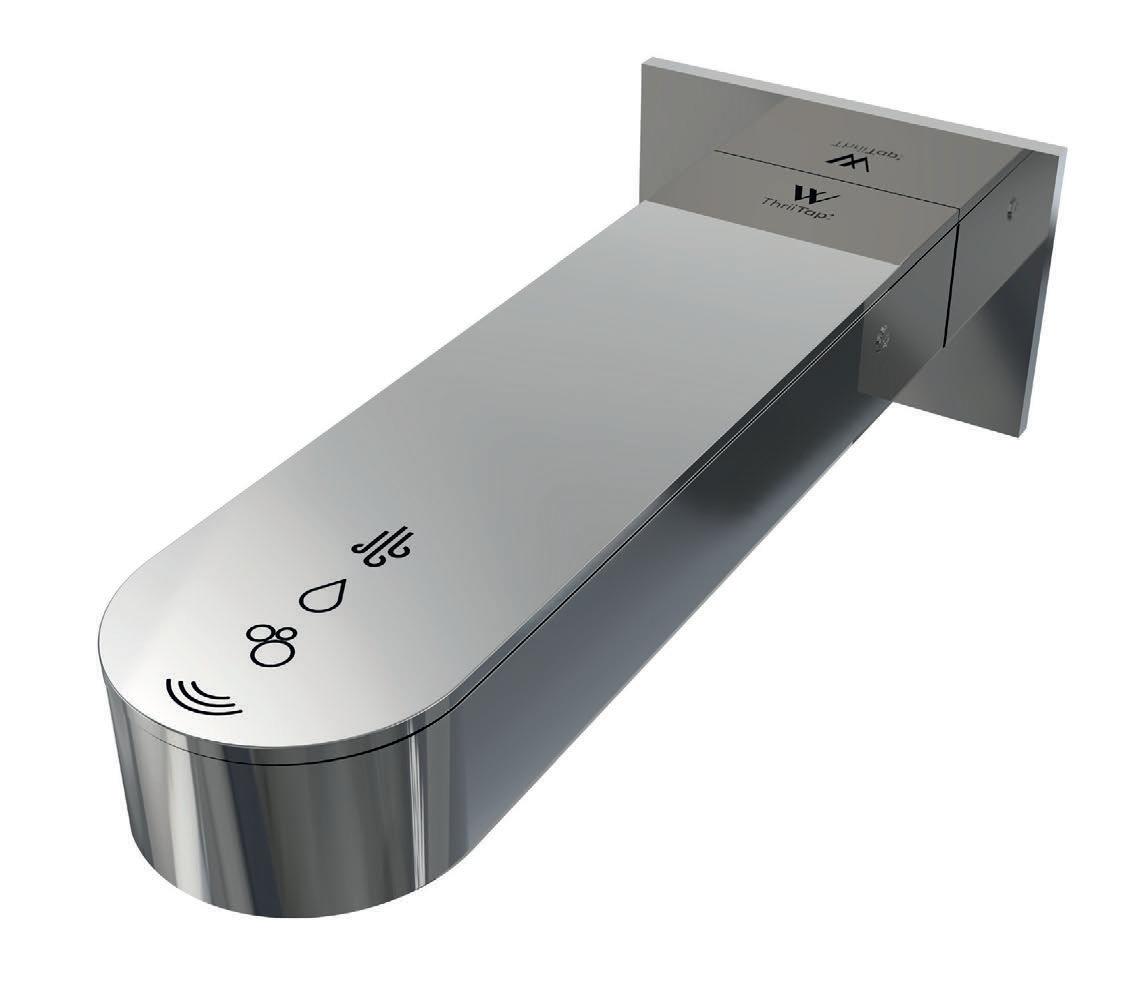
thriitap.com +44 (0) 1722 744 594
REMOTE CONTROL
FMJ AIMS TO SUPPORT TECHNICAL EXPERTISE IN THE FM MARKET
John Roe, Sales Director at Promptus explains the use of remote monitoring in helping FMs manage sites
optimise ventilation and save on energy costs.
4. Enhanced environmental benefits including energy savings and improved asset life cycle
RM of spaces is key to optimising energy consumption and e iciency. Remote data collection can be used to ensure systems such as air conditioning, emergency lights or auto flushing units are operating to their maximum capability.
This reduces the likelihood of equipment wear and sudden need for replacement, as well as lowering energy bills. RM boosts the environmental performance of buildings and enables FMs to implement e ective sustainability programs.
5. Minimises disruption to sta , visitors and building users
There are constant advancements in how FMs can use Remote Monitoring (RM) services for their site(s) by o ering users the ability to gain insight into a machine and / or equipment health status, performance, and behaviour patterns. This is typically achieved through a combination of Internet of Things (IoT) technology and cloudbased computing, all done from a considerable distance, hence the “remote”.
RM services can be broken into a series of steps, the first being Data Collection, where devices periodically capture the required information, streaming this data instantly. Access and management of data is where users can visit an online cloud-based portal to analyse information and alter elements of site alerts, as well as control site systems and reports. The user can access the portal from anywhere via internet connection.
GROWTH OF RM
The emergence of RM for FMs has accelerated in the past few years, with 67 per cent of UK FM businesses increasing their IoT and technology investments to boost e iciency. This in turn enables the responsible individuals to monitor assets and spaces through sensors that transmit information for real-time,
remote management.
The need to manage various scales of facilities brings several responsibilities, such as stock management and access control. Services can be made completely bespoke to a specific workplace depending on the requirements.
There are a multitude of ways FMs can use RM. For example, a popular service over the past couple of years has been sensors that can monitor air quality, which allows the responsible facility management individual to reduce the spread of COVID-19 in their spaces.
FMs can obtain constant and transparent data through RM sensors and therefore better understand the condition of their managed assets. When data is clearly displayed in an online portal, this allows for analysis of the facility environment, and in turn higher operational e iciency through conditionbased maintenance.
RM can bring a number of benefits for facility managers;
1. Cost savings with predictable payback in saved labour time
RM of assets is a key requirement for the implementation of conditionbased maintenance. Through RM, you can analyse data and information of assets and receive maintenance works
recommendations without even having to visit the building or consult anyone. Investment in IoT is likely to bring returns on investment in less than two years.
Furthermore, the data obtained, from a couple of devices to thousands, allows for an e ective predictive maintenance approach. This in turn means equipment quality is optimised and the downtime of assets is limited.
2. Systems monitored 24/7 FMs o en own or manage assets that are sensitive to environmental conditions, such as temperaturesensitive products like food fridges. The 24/7 aspect allows managers to maintain excellent conditions or enhance security, with services such as CCTV monitoring providing alerts.
RM significantly reduces the number of personnel that must be deployed in physical locations, for means such as testing and inspections. This reduction of labour allows managers to maximise the site for other uses. FMs can also have more flexibility in planning future processes.
6. Varying solutions depending on facility type and size
RM allows FMs to monitor the use of di erent areas more e ectively.
Managers can take advantage of a wide range of data on space usage, and ensure these areas are utilised to their maximum potential and wastage is reduced.

7. System automated pro-active compliance recommendations, suggestions and alerts
3.
‘No Touch’ Management supports infection control
RM allows FMs to monitor and analyse indoor and outdoor air quality, or use UV light to detect issues. Improving the health and wellbeing of spaces directly impacts productivity and energy e iciency. An online cloud can provide alerts, advanced analytics, and reporting. Furthermore, the FM can compare and export data and receive tips to reduce indoor air hazards,
Monitoring enables FMs to combine information about various assets and processes, regardless of time due to the 24/7 feature, and regardless of the location of the assets as users can access from anywhere. This gives the responsible person a transparent view of their operations from top to bottom. The FM can gain real-time visibility on the status of assets and services.
It is important that users can quickly detect and respond to issues that require attention and apply mitigation plans without delay. By using RM, FMs can react fast to any problems, o en reducing costs by preventing complications from escalating.
www.promptusltd.com
MAY 2022 16 ADVICE & OPINION
FAST
FACTS
Bidvest Noonan is a people business, operating in the facilities services sector. We employ over 27,000 people and operate nationwide across the UK and Ireland.


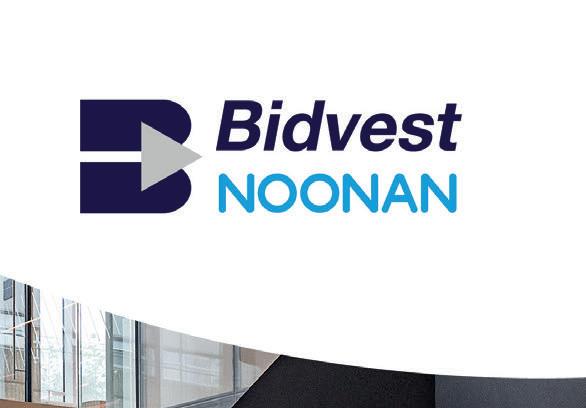
Our well-designed award winning solutions deliver exceptional value to thousands of businesses.




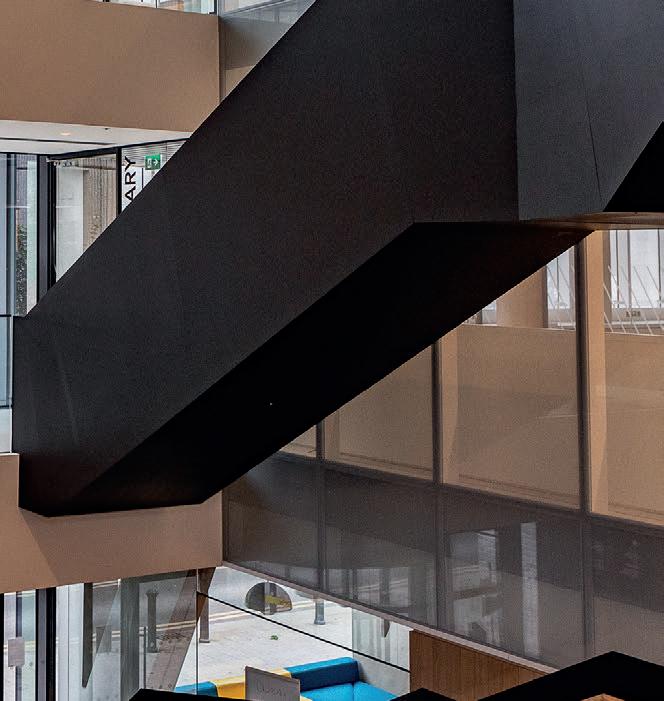
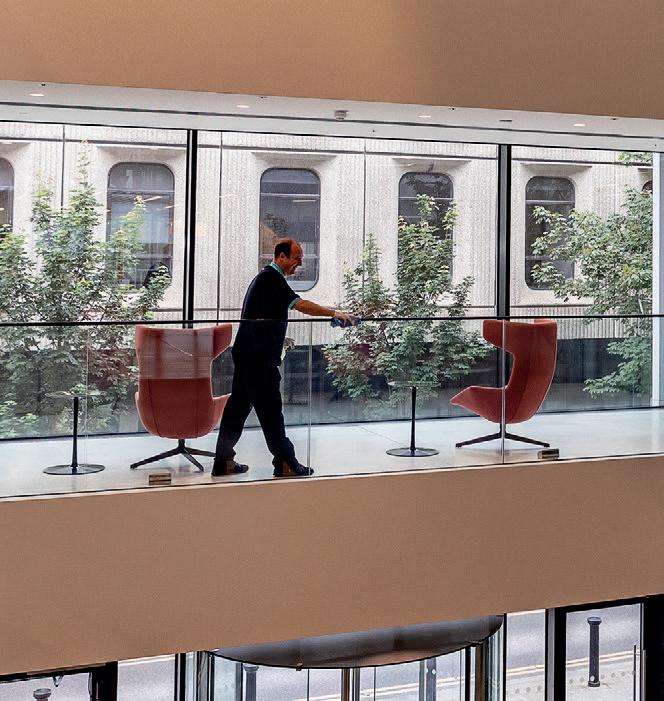
Our well trained people deliver better customer experiences, they raise standards for our clients, while using the latest technologies.

Our Services Security Guarding Cleaning Services Front of House Electronic Security Specialist Services Service solutions for the modern workplace T 00 44 (0) 203 319 1750 E info@bidvestnoonan.com www.bidvestnoonan.co.uk
IWFM Rising FMs - On the 18th May, in celebration of Facilities Show and all things FM, Rising FMs are hosting their own networking event at the Novotel Hotel, just a stones throw from the Excel! To book your ticket please follow https://lnkd.in/ ePCTzpeE
@CIBSE What does the Building Safety Bill mean for you? CIBSE launch new training designed to support building services professionals in preparing for and complying with the most significant reform to building regulations in 50 years. Find out more via https://buff.ly/3KsnM24
Nigel Lucker linkedin.com/in/nigel-lucker21a45914 Director of Estates and Facilities at the University of Suffolk WORLD FM DAY 2022 What are you planning to do to celebrate this year’s #WorldFMDay2022 on 11 May?? This year looks at #Leadingasustainablefuture to acknowledge the fabulous role facilities managers play as change agents in this area. World FM Day on 11th May gives you all the chance to celebrate with your front line FM teams and senior leadership teams and to thank them for the great work that they do. Don’t let the chance pass you by…. Get planning…
@mitie Mitie has launched its new @ MitieCleaning Centre of Excellence. Made up of six zones, it demonstrates best practice in the sector, from UV light disinfection systems and robotics to enzyme cleaning products. http://wearemit.ie/mrR750IUkiB #MitieCleaningHygiene | #Innovation | #CHCE
Neil Usher @workessence It’s funny how the office is the easy target – everything that’s wrong with an organisation – and the easy fix, renovate it and everything will be alright – when in reality neither is true.
ICE @ICE_engineers We’re joining @theCIOB, @talklandscape, @RIBA, @RICSnews, and @RTPIPlanners in committing to collaborate to create more #diversity, #equality and #inclusion in the #BuiltEnvironment sector. Find out more about the signed memorandum of understanding. https://bit.ly/38rYl3k.
BLOG FROM OWEN GEORGE, DIVISIONAL COMMERCIAL & RESOURCE STRATEGY MANAGER AT GRUNDON WASTE MANAGEMENT
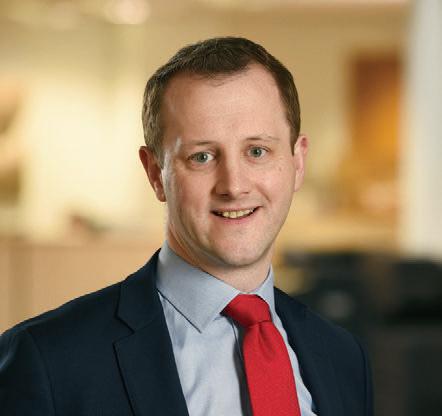
SUSTAINABILITY IS ABOUT MAKING GOOD DECISIONS, YOU JUST NEED TO DIG A BIT DEEPER
When facilities managers are tasked with how best they can meet their organisation’s environmental goals, they will invariably be shown a plethora of interesting and innovative options that promise the earth – in all senses of the word. As with many things, it’s not always that simple.
Long-term changes that really deliver practical solutions are about so much more than signing on the dotted line and embracing new ideas – compostable, biodegradable or disposable packaging and products to name just a few. These products may be made from materials such as sugar starch, palm leaves, wood pulp or other plant-based materials, but how easy is it in reality to dispose of them?
If you do your homework first, you’ll actually find out that limited treatment facilities do exist, but they may well be hundreds of miles away – adding, of course, to your carbon footprint as you have to transport the products to take them there. And what about the value of those materials? You are presumably paying a premium price to ‘go green’ but then you’re dipping into your budget for their waste treatment, both financially and environmentally. Not as viable a solution on either count.
Contrast that with products made from PET (polyethylene terephthalate), one of the most commonly used plastic packaging materials in the world. Right now, PET is worth around £550 per tonne – its value has doubled recently, driven by supplier demand and the plastics tax. The beauty of PET is that it is 100 per cent recyclable and it can be used over and over again. Even better, depending on volumes and providing the plastic is clean and correctly segregated, it can earn you money back from your waste collector in the form of a rebate.
As a waste management services provider, we are not evangelical about plastic – and of course we tread the fine line of self-interest – we too are on a continuing journey towards improving our own environmental credentials, something we take very seriously. What we do know and understand however, is that sometimes using a product which is tried, tested and totally recyclable may provide a better solution.
Packaging is another hot topic right now and it will be interesting to see what happens with the arrival of next year’s Extended Producer Responsibility (EPR) legislation (part of the
Government’s new Environment Bill). Designed to reform existing UK Packaging Waste Regulations, it means packaging producers will pay the full cost of managing packaging once it becomes waste. The idea is to encourage producers to use less packaging and more recyclable materials, thereby reducing the amount of hard to recycle packaging on the market and cutting the amount of fossil fuels used to produce it.
Depending on the recyclability of the packaging used, businesses will have to pay a modulated fee to take account of its higher (or lower) level of recycling di iculty. Much of the packaging we see currently features materials such as multi-polymers and inner and outer labels that either can’t be recycled or requires very specialist treatment. Remember the fuss over what became known as the ‘waste mountain of co ee cups’, which highlighted the fact some seven million takeaway paper co ee cups are thrown away every day because their waterproof lining means they can only be recycled at specialist facilities.
I see EPR as being the most significant change in recycling governance since the introduction of the Landfill Tax and the impact it is likely to have on both the types of materials and the value of recyclables in the marketplace will be profound. It is so radical that it is causing a huge amount of uncertainty, and there’s no doubt additional investment will be needed in sorting and capturing facilities to handle the increased collection streams. As a business we continue to invest in new and innovative ways to handle such changes.
For facilities managers, the decisions they have to make in the drive towards improving sustainability will continue to become more complex and the challenges of making the right decision will be many and varied. Very o en there is no completely right answer – which is why it’s important to ask questions, to talk to the real experts who really understand the best way to treat all these fancy new materials, and invest in long-term solutions rather than quick hits.
Owen George will take part in the Facilities


Show workshop session: Sustainability in FM and achieving Environmental, Social and Governance 3:00pm - 3:45pm Wednesday 18th May.


SOCIAL - BLOG MAY 2022 18
ADVICE & OPINION
Owen George, Grundon Waste Management
RE DEFINING PRODUCTIVITY(n)



 BY KÄRCHER PROFESSIONAL*
BY KÄRCHER PROFESSIONAL*
(noun) the rate at which cleaning equipment and support services provided by Kärcher Professional drive positive results across your business; the satisfaction of achieving quality results through greater efficiency.
* As leading industry experts, building a partnership with Kärcher Professional will help define a better future for your business. We understand the challenges businesses face and have the solutions and services in place to help improve productivity and efficiency, whilst minimising operational disruption. Re-defining professional cleaning for your business. Kärcher.co.uk
FM CLINIC
Meeting Environmental, Social and Governance (ESG) criteria is now an essential part of the FM remit, encompassing as it does the many strands of sustainability, from achieving net zero to supporting the supply chain. It also incorporates the core goal of FMs in achieving compliance. What are the challenges and opportunities for FMs in integrating ESG into their organisations?
with education settings, showing care for the elderly or addressing crime rates for instance.

A healthy community that is being upskilled and encouraged to flourish will ensure that there is a greater choice of talent, a more resilient workforce and ultimately, a more e icient business.
The real estate sector is unique in that it always has a ‘place’ and contributes to our communities not only physically but also through occupier engagement - a building is simply a vacuum until the occupier arrives, at which point it becomes a positive contributor.
In FMJ's regular monthly column, our team of FM experts answer your questions about the world of facilities management


SOCIAL VALUE EXPERT’S VIEW














 GUY BATTLE, CEO, SOCIAL VALUE PORTAL
GUY BATTLE, CEO, SOCIAL VALUE PORTAL
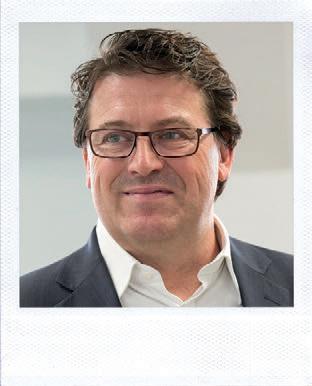
Environmental, Social and Corporate Governance (ESG)’s origins lie in compliance - it is all about the need to minimise risk, avoid harm, meet regulations and disclose the metrics. It is therefore no longer su icient for facilities managers just to be good at rent collection and environmental building performance. I think the FM industry needs to place its focus on three things; People, Place and Planet. If that happens, meeting ESG criteria will come naturally.
The health and wellbeing of the people who make up an organisation is now recognised as a key issue that drives productivity, culture and ultimately the success of an organisation. The FM lead needs to ensure that they understand the role they have to play in promoting a healthy workplace.

Guy Battle
By improving the lives of local people, FMs have the unique opportunity to develop a better performing asset.
Put simply, a flourishing community leads to increased land prices, the asset value goes up and that means FM fulfils a fiduciary duty to the investor while also meeting ESG criteria.
The climate crisis is a global emergency and we all have a duty to address this. Buildings are responsible for over 25 per cent of world carbon emissions due to the energy they use to heat, cool and light.
Procurement decisions are therefore vital to reducing emissions. Through increasing access to renewably sourced energy, no longer purchasing from global suppliers and tasking your supply chain with contributing to net zero goals, every area of the FM role has a part to play.
By acting locally but thinking globally, it is possible to identify opportunities to reduce emissions whilst committing to reducing overall emissions at the same time.
The climate crisis is a global emergency and we all have a duty to address this. Buildings are responsible for over 25 per cent of world carbon emissions due to the energy they use to heat, cool and light.
There is also a big opportunity for FMs who actively promote community engagement and this starts with finding out what the local community needs. For instance, knowing where the most deprived areas are, what is understood about the issues faced by the community and how its needs can be met. This could be by creating more local jobs, improving relationships
–GuyBattle
at same time.
If minimising risk is the ESG side of the coin, maximising social value sits on the other side to complete the picture. Social value is about how a business meets its social purpose, contributing ‘net positively’ to society.
maximising social value sits on the other side to complete the picture. Social value is about

Since the Public Services (Social Value Act) 2012, private sector organisations are seeing the positive results social value has brought to public sector work and are increasingly bringing it into their own decision making as a result. So, without a solid social value policy, FM outsourcers will not now easily win new work - or meet ESG obligations.
My advice for the FM industry is to extend your scope, reimagining your role to include culture, ‘doing good’ in the local community. Do that, and ESG should seamlessly integrate into your organisation.
Cont. p22 MAY 2022 20
ADVICE & OPINION
STRUT SHEAR HEAD
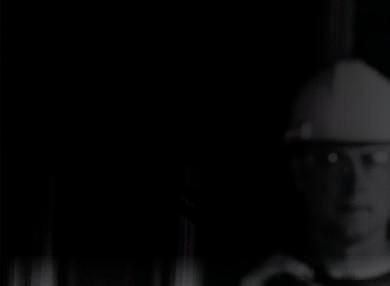



Fab Shop Quality: burr-free cuts eliminate the need for extra filing;




Increased Efficiency: clean, consistent cuts in 5 seconds or less; Shear cut: reduces noise and eliminates trailing leads;







Portable: easy to move around the job site and mounts to RIDGID TRISTANDs; Built-in Measuring Guide: allows accuracy of cut on job site; Cuts 41×41 mm & 21×41 mm profiles.
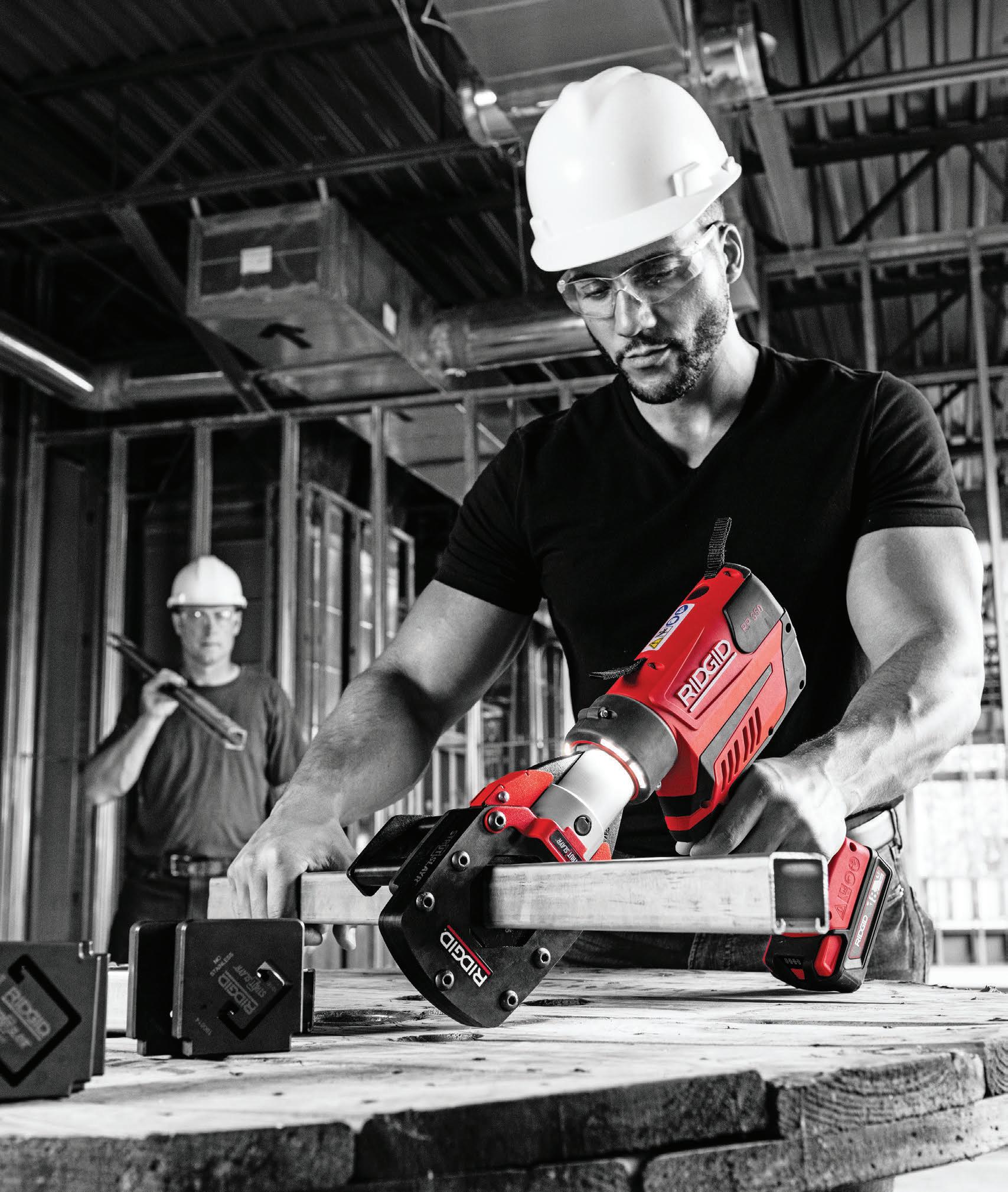
RIDGE TOOL UK c/o Emerson Electric UK Ltd, 2nd Floor Accurist House, 44 Baker Street, London, W1U 7AL T: +44 (0) 808 238 9869 UK, T: +353 1 800 936 397 Ireland, RIDGID.gb@emerson.com, RIDGID.co.uk FY22 06TA_UK
NO GRINDING OR SAWING SPARKS!
Just a clean, consistent SHEAR cut with a pull of a trigger.
CHIEF OPERATING OFFICER’S VIEW
 JAMES BRADLEY, COO AT CHURCHILL GROUP
JAMES BRADLEY, COO AT CHURCHILL GROUP
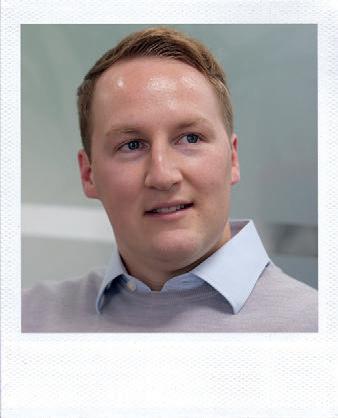
ESG covers such a wide array of factors that the optimist in me believes there are almost endless opportunities. Even if a company is excelling in a number of ESG objectives, there will be others where it needs to do more. FM can touch on every part of ESG so there will always be a place for our sector to advise and act.
There are a couple of key challenges that I’d like to touch on. The first is staying on top of ESG goals in the face of changing legislation and company priorities. For example, the Department for Business, Energy & Industrial Strategy (BEIS) is expected to soon launch a new building energy rating system for large commercial buildings that could eventually replace EPCs. The new system would focus on the current energy use of a building rather than theoretical future performance.
FMs need to keep up to date on such changes and help prepare their clients in advance. Those that stay on top of updates and share with their clients will position themselves as key counsel for ESG strategies.
A second key challenge is embedding long-term planning and goals into ESG strategies. It can be very easy to constantly look for quick wins –these are great for sharing with customers and employees, as well as for reporting back to senior management.
While quick wins are useful, the focus must be on the long-term, even if we won’t be there to see the results of our work. The contract lengths we work with can feel restrictive in that we might only work on strategies for the length of that contract. We may worry that if we can’t evidence some success during this time – the quick wins – it might look like we have not achieved any ESG goals.
We owe it to our clients to set them up for success in the long-term. Only then will they be able to achieve their lo iest ESG goals.
If we can develop strategies that show the benefits of long-term objectives, as well as a roadmap of how we get there, clients may commit to longer contracts. If not, they will still have a strong strategy in place regardless.
A er I spoke about the need for long-termism in ESG at the recent Workplace Futures conference, I suggested we start an industry-wide committee to tackle various issues – anything from energy e iciency to employee wellbeing.
Let me be clear – this is not a Churchill initiative, but a chance for anyone in FM to collaborate. We had our first roundtable in late March and have identified refugee employment as our first project. We all know the many challenges of hiring refugees, from visas to language barriers. We believe that by coming together we can tackle this issue and make a genuine change across the whole FM industry.
CLEANING SECTOR LEADER’S VIEW
DOMINIC PONNIAH, CEO,
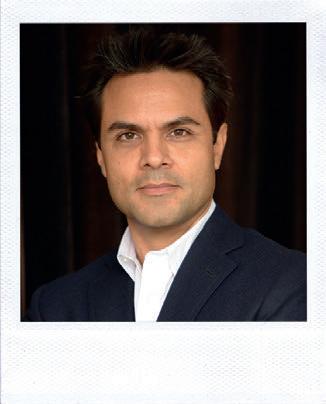
CLEANOLOGY



Business has the power to do good. Every company measures its financial health, but the health – and impact – of a business goes far beyond the balance sheet.
While the scale of Environmental, Social and Governance (ESG) criteria can appear daunting, it helps to break things down. The recipe to meaningful change is to monitor, and to follow a policy of continuous improvement. This is also the key to certification to environmental management systems like ISO 14001.
A robust environmental policy will include the obvious elements like o ice recycling and energy use but genuine ESG strategies should also consider sta wellbeing. In an industry not known for high pay, to improving pay. Sixteen of our top 20 clients are signed up to the Real Living Wage, and we actively promote the scheme to new business and existing clients, as well as investing in PR to raise awareness.
We are accredited as a Recognised Service Provider (RSP) by the Living Wage Foundation, and recently joined the RSP Leadership Group. In 2021, we won the Living Wage Foundation’s Company of the Year award. This shows our sta that we care, and are actively working to make a di erence.
With one fi h of the population living in poverty, it is also important to look beyond our own four walls. The Hygiene Bank, supports the one in three people who has had to go without hygiene essentials. Recent appeals generated a tonne of hygiene products.
ESG is becoming increasingly more important and we can expect to see it incorporated in many more tenders and requests in the future. However, we need to remember that, in the same way that as individuals we lead full, complex lives, our companies also span di erent areas. And with the right planning, we can make business a force for good.
FM CLINIC ADVICE & OPINION MAY 2022 22 Cont. p24
James Bradley
FM and Property technology to power your organisation and build a sustainable future Coming together to change the future of FM, Real Estate and Workplace software: download our guide Or visit us at The Facilities Show, 17-19 May, ExCeL London CAFM Property Management Workplace Management Mobile Workforce Energy Management
Dominic Ponniah







We’re not your usual waste company To find out how we can help you achieve sustainability success, visit us on Stand FM1650 at the Facilities Show We work with you to create value Engaging education programmes Innovative waste technologies One supplier for all your waste streams Earn thousands of pounds from your recycling
WELLBEING SUSTAINABILITY AND ASSURANCE DIRECTOR’S




VIEW
JONATHAN GAWTHROP, EXECUTIVE DIRECTOR EMCOR UK
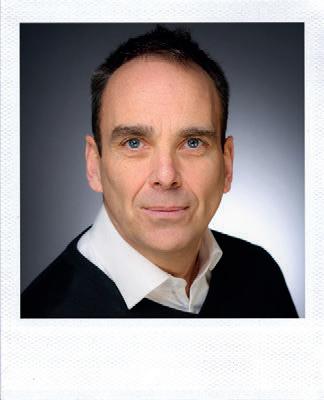
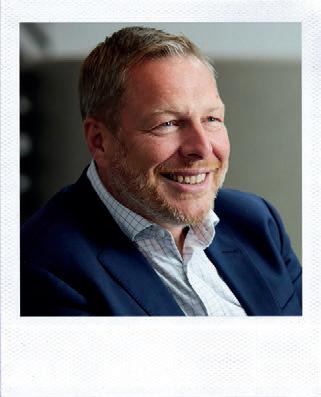
ESG is incredibly broad so one immediate challenge is the definition. When one organisation talks about ESG it might be focusing on the route to net zero; another might be concentrating on social value.
A good anchor point for all businesses are the UN’s 17 Global Sustainability Goals. They encompass everything from health and wellbeing to gender equality, and clean energy to sustainable communities. The goals are a blueprint for running an organisation with purpose and a great frame of reference.
Not every organisation can touch all the goals, but all organisations can touch some of them. The challenge for business leaders here, and the opportunity, is to identify which goals are relevant. It will be much more impactful to work on the achievable goals rather than trying to meet too many.
Resources are another challenge – both people and finances. A successful ESG strategy requires an individual or a group that can take the company on the journey. There needs to be a level of seniority so that the strategy has an influence within every facet of an organisation. This can be easier at large FM companies but tougher at SMEs. Business in the Community can be a great help here.
There must be overall corporate ownership of activities so that it doesn’t just become the responsibility of one person or group. However, it can also be impactful to make sure that all employees have some kind of ownership or buy-in, perhaps at a local level.
People care about ESG. The trick is to find the balance between corporate ownership while ensuring that all employees have a stake.
The FM relationship model presents yet another challenge and opportunity. Our sector relies heavily on supply chains – in some cases, up to 50 per cent of work within a contract might be carried out by partners. It’s vital that we keep a constant dialogue with our customers to ensure that we choose partners with the right ESG credentials. This links closely to Global Goal 17, which calls for strengthening partnerships for sustainable development. As we work with more supply partners that are leading in ESG, we
can learn from them and apply this to other contracts. Some of the customers that we work with are quite mature in their ESG strategies; others not so much. We can learn from the mature businesses and educate the others. Not only will this help FM companies improve their ESG work, but it can also be a selling point into new business.
While ESG is about running a business with strong ethics and purpose, there are of course financial considerations. We are currently experiencing a demand for talent in the sector and younger generations want to work for an employer with a demonstrable purpose and credentials in ESG.
For those at the start of their ESG journey, my advice is to review the UN Sustainability Goals, determine who can take responsibility for your strategy, and give them the resources to achieve their goals.
INTEGRATED FM PROVIDER’S VIEW MAURO ORTELLI, MANAGING DIRECTOR OF 14FORTY
The ESG journey, does not come without its challenges. Incorporating new technology across the industry, although o en appearing costly, is key to progressing sustainably.
In FM, some of the biggest industry-wide di iculties come from managing buildings with changing headcounts. This has especially been the case since the pandemic with many companies now opting for hybrid working systems. Ordering the correct quantity of food and supplies to avoid excess waste can be complicated when the number of people attending a workplace is unpredictable. To mitigate this, our teams continually analyse past food waste against sales and uses this data to rebalance menus. We are also promoting the use of pre-ordering technology for which we have a proprietary mobile app to facilitate.
With catering playing a key role in so FM services, providing planet-conscious menus is crucial. Our new menu concept, ‘Plenty’, is designed to reduce food waste by using a root-to-tip and noseto-tail approach to cooking. Our chefs use perfectly edible parts of vegetables or animals that would normally be thrown away, to create recipes such as broths, soups and sauces with those o en discarded items.
At Compass our eco-labelling project was the first of its kind, labelling dishes A-E, highlighting to consumers which meals have a higher (E) or lower (A) environmental impact. This allows consumers to make conscientious choices for the environment, just as they do with the reference intake labelling for nutrients. We’re also proud to be able to say that 84 per cent of food in our workplace restaurants is sourced and produced in the UK, with a company-wide ban on air-freighted produce.
In 2022, 45 per cent of our menus will be made up completely of plant-based recipes in a bid to inspire healthier eating and to reduce our carbon footprint.
Do you have a question that you’d like answered by the FMJ Career Clinic?
Email: sara.bean@kpmmedia.co.uk
MAY 2022 24
FM CLINIC
Mauro Ortelli
ADVICE & OPINION
Jonathan Gawthrop
RENEWING WORN HEALTHCARE FLOORS






IMPROVED HYGIENE FOR HEALTHIER SURFACES


DESIGN CUSTOMIZATION

to
and
92% LESS CARBON EMISSIONS 41% COST SAVINGS 90% ENERGY SAVINGS Request your free floor evaluation here! WE CALL IT BONA RESILIENT SOLUTIONS, YOU COULD CALL IT A BRAND-NEW FLOOR. RETHINK RESILIENT FLOOR REPLACEMENT Bona Resilient Solution Come and see us at Stand FM1260 17th – 19th May, ExCel London TREATED WITH BONA PURE UNTREATED SURFACE
Bona’s unique process along with our coatings creates a monolithic surface that seals against microorganisms thus resulting in a fl oor with the highest level of hygiene standards as mandated by The Technical Rules of Biological Agents (TRBA). Bona.com/ warranty RESILIENT FLOORING SOLUTION WEAR-THRU WARRANTY
Is it possible
achieve hygienic
safe floors without having to replace the old one? Yes, with the innovative Bona Resilient Solution, there is a complete, long lasting, effective system to restore, renew and upgrade resilient floors. The process could be repeated over and over again – throughout the floor’s lifetime.
The Bona Resilient Solution offers numerous design options from changing the colour and design of a fl oor, to adding decals, graphics and logos. The possibilities are endless. RESTORE & ADD COLOUR SIGNS & SYMBOLS ADD CHIPS FOR EVEN MORE OPTIONS Bona L imited Rohit Sharma - 07775 844 581 01908 525150 i nfo.uk@bona.com bona.com
Totalling 164,000 sq. , spread across seven floors, the o ice in the Dublinsuburb of Clonskeagh now o ers a breadth of experiences, facilities and opportunities to appeal to the typically digital talent on which its business depends.
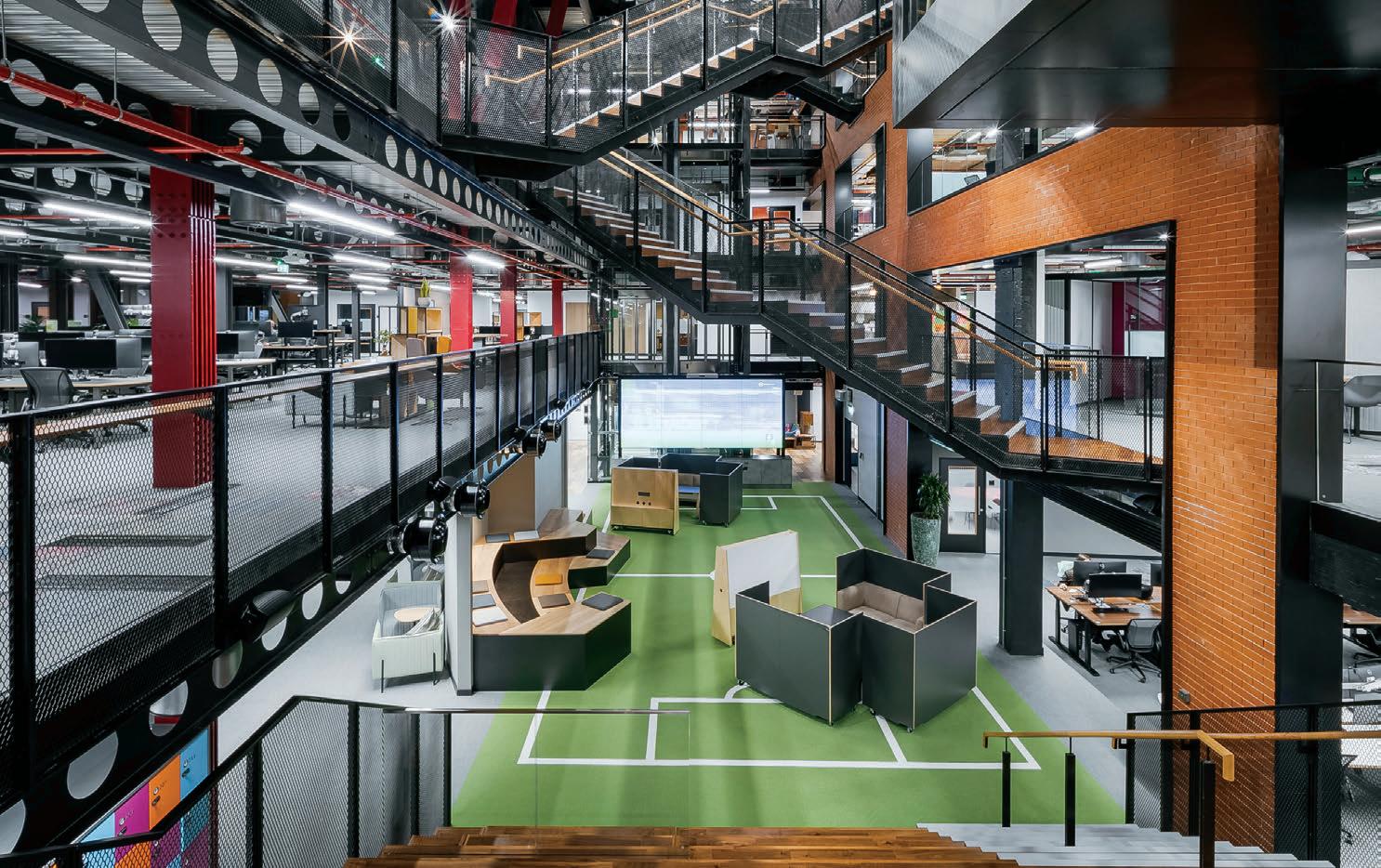
Home to 1,700 employees working in sports trading, technology, product development, innovation, marketing, HR, and customerfacing roles – the new o ice is a perfect example of how design can encourage people back into the workplace and facilitate hybrid working. The building includes 110 meeting spaces, 227 agile spaces and 1,070 seated positions. Despite COVID halting construction work in Ireland for four months, the project was completed six weeks ahead of the altered schedule.
UK-based interior design and fit-out business Claremont had the task of helping Flutter realise its vision for a collaborative, sociable, knowledge-led and desirable workplace – a project that has been its most ambitious and challenging to date. More than three years in the making, it called on all aspects of Claremont’s expertise, from workplace consultancy through to interior design, fit-out, furniture and AV.
Ken Bundy, who’s designed numerous compelling interiors for big brand employers over the last 30 years, led the project.
He said: “We started working with Paddy Power, one of Flutter’s brands, back in 2018 with a workplace consultancy project centred on helping to establish its teams’ spatial needs in London, Yorkshire and Ireland. As
our relationship developed and we learned that Flutter wanted to rethink its Dublin presence, we knew there was opportunity to create something quite special – a true destination workspace that would be rich in social interaction, team-work and crucially – fun.
“Of course, we also had to adapt to the shi ing demands of the pandemic – in particular to reflect hybrid working. Because of that, we knew the o ice needed to o er the experiences that home-working just couldn’t. We knew our design had to encourage people back into the workplace.”
BUILDING CHALLENGE
But before thought could be given to the
MAY 2022 26 CASE STUDY FLUTTER ENTERTAINMENT
A SURE BET
Flutter Entertainment Plc, the global business behind brands such as Paddy Power, FanDuel, Sky Bet and Betfair has opened its €15.5 million global headquarters in Dublin, providing a truly stand-out destination o ce for a progressive and people-orientated business
interior of the new HQ and how its occupants would use the space, the very fabric of the 1960s red-brick, corridor-led and U-shaped building required an overhaul.


Bundy said: “The original building was rife with limitations. Most of its usable spaces were centred around narrow corridors and the shape of the building meant it promoted separation, rather than unity. Our vision was to add square footage to the building so that we could create deeper floorplates which, in turn, would o er more usable space and the ability to unify di erent departments and areas with ease.”
Claremont’s plan was to add a new glazed atrium to the front of the building – which has resulted in the building being 72 per cent glazed. The addition of this architectural feature has e ectively filled in the building’s U-shaped footprint, transformed its façade and added 33,987 square feet to the building. This space serves a variety of very important purposes. It o ered space to create the on-brand welcome Flutter wanted – with a ground floor football pitch, complete with football tunnel and pitch-side bleacher style seating. It also created space to address connectivity and movement throughout the building – which was achieved with the addition of four customdesigned, zig-zag industrial style staircases to connect the seven floors together.
Bundy said: “The atrium has vastly improved the building’s connectivity and sense of cohesion. It gave us the space to add these impressive walkways – while they certainly deliver a visual wow, they are crucial to creating frictionless movement
between the floors. And, thanks to the widespread use of glass, the atrium also o ers visual links to all floors.
By adding just this space – it’s unlocked the value of the building as a whole.”
Built to exacting environmental standards, the newly renovated building also includes a range of accessibility and sustainable features which
aim to make the work environment healthier for colleagues, while also reducing the carbon impact of the building. Some of its most unique features and facilities include intuitive A-rated air conditioning and a cascading watering heating system, solargain thanks to the widespread use of glass and a live green roof which includes three hives supporting thousands of bees. The
honey
Bundy added: “Flutter could have walked away from this building in favour of something easier and that didn’t need so much work to the building’s envelope. But they chose to be brave and progressive. The end result shows what a bold vision and a fresh approach to space can do for a business and also, how it is the occupier that really brings a space to life.”
FLOOR PLANS
Each of Flutter’s seven floors has a clear purpose. The first floor is a team space with formal meeting and quiet rooms. The second floor is for more technical work with studio spaces and a mock-up shop to replicate Flutter’s di erent retail environments, while the third and fourth floors are home to collaboration settings and individual touchdown spaces. The fi h floor houses a hugely modernised café complete with a relaxation and gaming area, while the sixth floor, which boasts striking views of Dublin’s Wicklow Mountains, is a collaboration zone for meetings, company gatherings and social activities alike.
Ó Ríordáin, Chief Legal O icer & Group Commercial Director of Flutter and the Executive Lead for the Dublin o ice said: “This building encapsulates our vision for the future of work. The o ice will always be the hub for a business like ours because that is where you get people together – when you do that, you unlock more innovation and connection, which means better teamwork. That said, we are in a totally new world now and while we expect hybrid working to remain a central feature, exactly what that means in the long term is still to be seen. The main focus is to make sure that what we o er
MAY 2022 27 FMJ.CO.UK FLUTTER ENTERTAINMENT CASE STUDY
produced is even available at some of Flutter’s on-site dining areas.
Pádraig
This building encapsulates our vision for the future of work. The o ce will always be the hub for a business like ours because that is where you get people together – when you do that, you unlock more innovation and connection, which means better teamwork.”
works for everybody.”
One of the fundamental ways that Flutter’s new o ice accommodates more varied needs and working styles is by dispensing with owned desks. Instead there are spaces and resources that prioritise shared experiences, collaboration and inclusivity. One of the distinct upsides of activity-based working, where individuals choose the space for the task, is that it can also help to build capacity and flexibility into a space. Bundy added: “One of the biggest legacies of the pandemic is the way it’s changed how we all work and consequently what we expect of the workplace. Employers need their workspaces to o er what home and remote working simply cannot.”
FLEXIBLE FLOURISH
Flutter’s new home o ers no shortage of
choice. Huddle spaces, kitchen-table settings, studios and tech zones – all help to create neighbourhoods. Desking is included, but makes up just 29 per cent of the space compared with the 75 per cent it would have been previously. Areas for socialising and relaxation are plentiful too with an on-site café, a restaurant and gaming areas – which help to show that Flutter prioritises wellbeing and the power of a workforce rich in social connection.
Flutter’s Pádraig Ó Ríordáin wanted the workplace to allow people to flourish in their own way. He said: “Our people are our top priority, and we really feel this is an environment which people can come in and be themselves. It’s part of unlocking their talent but also putting them at ease. We’ve created an environment that really promotes wellbeing and interaction, so that people know their colleagues well and form strong
bonds with them. Fundamentally, we want people to love coming to work – that’s what keeps people happy and productive, and attracts other people like them to join us.”
The building is also home to an on-site Market x Flutter convenience store – Ireland’s first fully frictionless shop. It features more than 90 cameras and AI technology so that colleagues can literally ‘grab and go’. The shop is also open to anyone working in the Clonskeagh-based o ice park, which helps to make Flutter an important part of the local community.
For a business like Flutter, which maintains a keen eye on acquisition and innovation, it’s not surprising that the headquarters will also act as a centre of excellence for technology to help drive innovation across the Group. Consequently, the o ice has capacity for future growth built in.
Mark Mercer, Director of CRE & Workspace for Flutter summarised: “When we look at our culture and the building, we wanted the space to drive engagement and for it to be based around three principles which are collaboration, socialisation and learning. When you walk around this building you can see why we’ve done what we’ve done and how it delivers on those values.”
The role of the o ice has been one of the most hotly contested topics since the start of the pandemic. This workplace shows clearly, that for Flutter, the need for a shared workplace is integral to their success. It is a powerful and strategic tool for innovation, wellbeing and talent retention. No longer just a place for desk-based working, the workplace is now a purveyor of powerful employee experiences and a hub for innovation, inclusion, culture and sociability. www.claremontgi.com/flutter-main/

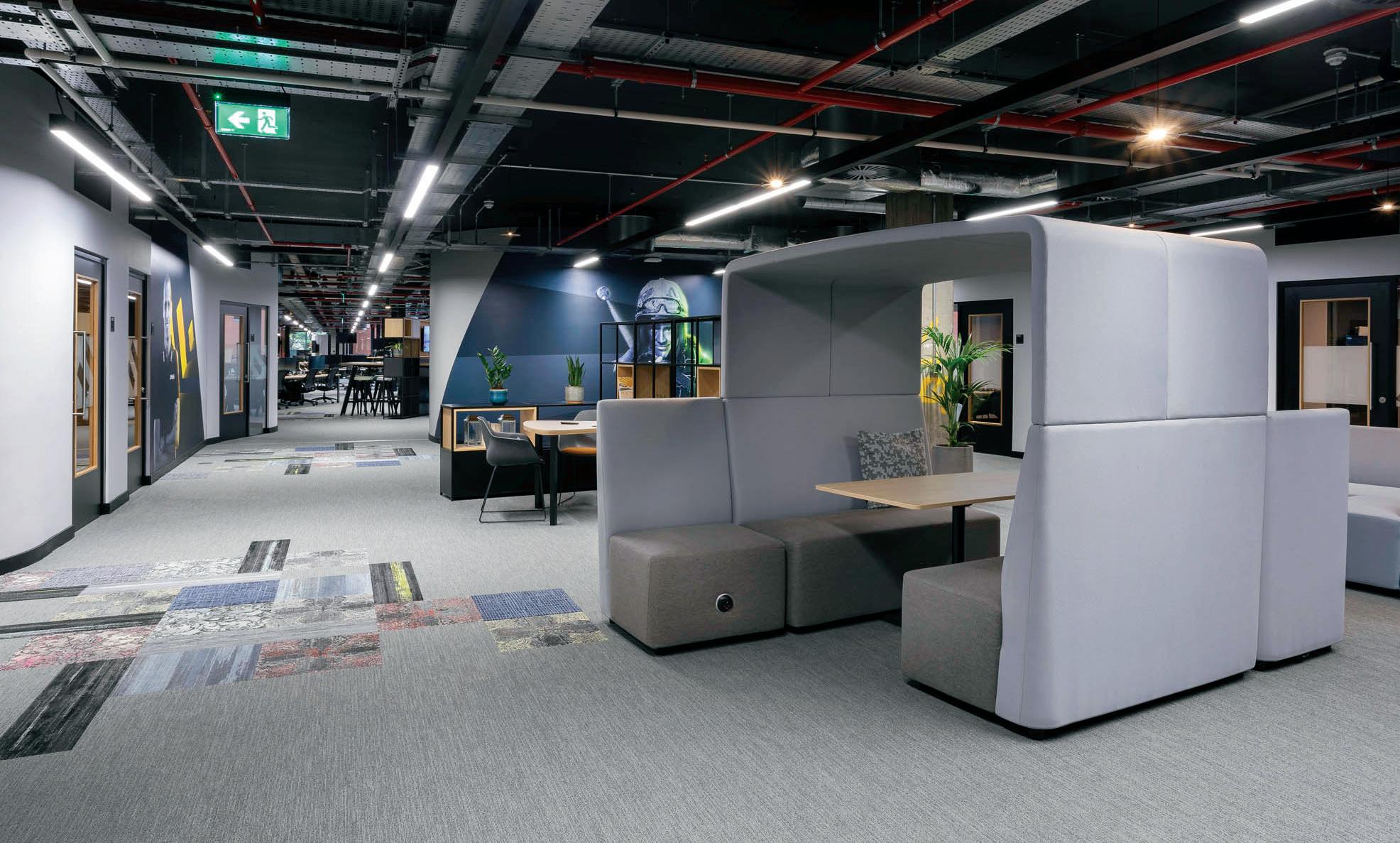
MAY 2022 28 CASE STUDY FLUTTER ENTERTAINMENT
A breath of fresh air









According to the WHO, Covid-19 is mainly spread through the air. Rensair’s portable, hospital-grade air purifier is making shared working spaces safer and encouraging a full return to the office.
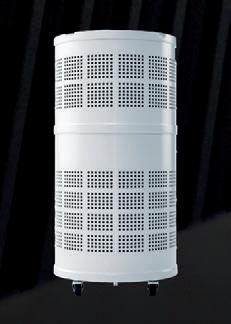
The company’s patented technology combines H13 HEPA filtration with germicidal UVC light, meeting the UK SAGE committee guidelines.







In a test to determine Rensair’s performance in reducing the concentration of Covid-19 surrogate particles in the air, a particle reduction rate of 99.98% was recorded in 15 minutes and above 99.99% in 30 minutes.











Like pure water from the tap, people now expect clean air at work. Rensair’s affordable, practical solution offers a breath of fresh air for companies of all sizes and across all sectors.










–CLICK –TYPE +44 (0)20 3973 8927 –TALK contact@rensair.com rensair.com
To find out more about our hospital-grade, antiviral air purifier:
Ostara offers a flexible interface with a rich set of functionality which can be configured to support almost any organisational structure.


Ostara continues to evolve by developing new functionality based on feedback from our ever-growing client base.
The interface for end users and engineers has been designed to be as intuitive as possible whilst still retaining the rich data set which provides greater clarity and improved analytics.
The system is provided with an unlimited number of users as standard.
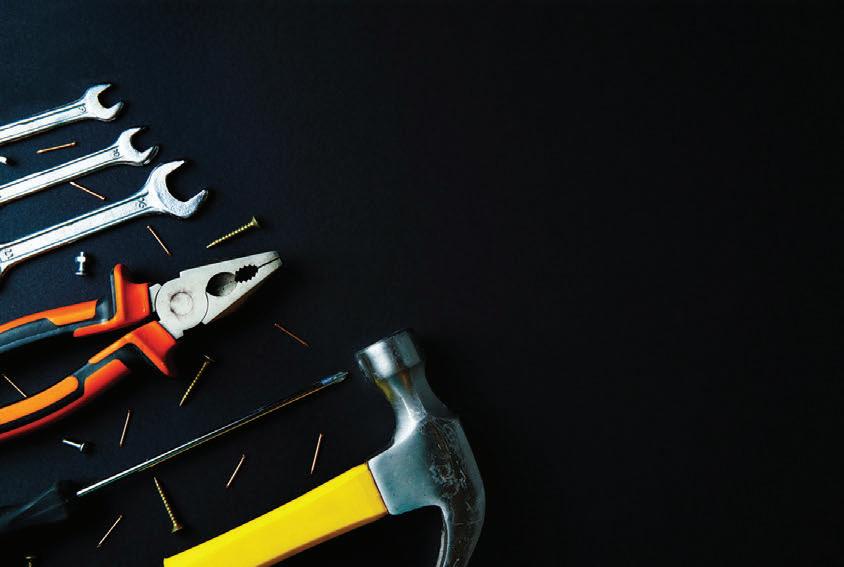
“CAFM Software to support your maintenance activity” “As your processes evolve, Ostara will evolve with you” Let’s talk. Contact us on: +44(0)844 880 2582 info@ostarasystems.com www.ostarasystems.com Move from... Limited Nonintuitive Uncontrolled Lack of clarity Inflexible
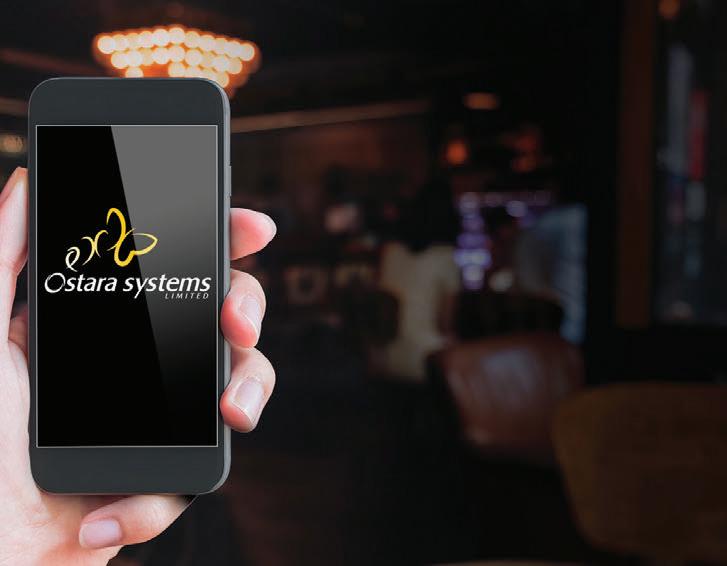


control:
Reporting aligned with clients’ finance periods
Budgetary control (revenue & capital)
Real time visibility of spend against budgets
Cost approvals can be configured to support all hierarchies
Electronic invoicing process, including multiple checks to automatically validate submissions.
management:
Ostara provides a mobile app that is free to use for contractors, as well as a dedicated contractor portal, for work order updating, invoicing, certificate uploading and quote provision
Clear and impartial contractor dashboards, visible to all. End users:
Simple user interface to create and view work orders Highly configurable client dashboard. Dedicated Helpdesks providing day to day operational management of maintenance to your sites • Admin support for data administration ranging from new users to contract/contractor turnover. Cutting edge technology:
Hosted in UK Tier III datacentre
ISO 27001 Certified
Encryption using Rijndael 256 (AES)
Proprietary bluetooth beacon technology. Asset management:
Full lifecycle costing and asset replacement planning process.
Warranty management
Asset tagging and updating using the Ostara Mobile Application. • Real-time accurate attendance data • Offline capability • Intuitive • Asset Tagging capability • Check in process (Bluetooth, GPS & QR) • Built In H&S (Asbestos & PTW)
Financial
•
•
•
•
•
Contractor
•
•
•
•
•
•
•
•
•
•
PPM schedules are plug and play, with minimal administration required following initial creation
Certificates uploaded ensure the system knows what certificates you have, and, based on assets and buildings what certificates you should have
“Dynamic Dates” determine next visit dates, based on certificate expiry
Real time visibility of compliance levels.
Supported from our UK offices, the Ostara System is timezone aware, along with currencies and tax codes
The portal and mobile are translated into 12 languages.
Ostara Mobile Application on Android and iOS provides: Move to... Unlimited Intuitive Controlled Clarity Flexible
Planned Maintenance and compliance: •
•
•
•
International: •
•
The
AERIAL ADVANTAGE
Following key proposals made by Dame Judith Hackitt a er the Grenfell Tower disaster, the UK’s Building Safety Bill is expected to come into force in 2023. This will ensure accountability for those involved in the lifecycle of high-rise residential buildings that are 18 metres high or have at least seven stories, and that have at least two residential units. These regulatory changes are likely to have major financial and practical consequences for the facilities management sector, especially as it is anticipated that the type of buildings included within the bill will broaden over the coming years.
Dave
Peacock, Technical Director
of TÜV SÜD Building Advisory Service on modernising building façade inspection with the use of drones and artificial intelligence (AI)

Under UK law, building owners and occupiers have a legal duty to ensure their building is safe, to mitigate injury or damage being caused to people or property. Since 1994 all new and refurbished buildings are also required to have a maintenance manual, which must be kept up to date and any necessary maintenance work carried out.
Insurance will also require building owners to show that the relevant maintenance needs have been met. Failure to maintain a building façade properly may result in increased insurance premiums, di iculty in obtaining insurance renewals, or the termination of insurance cover. It is therefore vital that those responsible for a building’s maintenance and upkeep can demonstrate to insurers that all reasonable steps have been taken by implementing appropriate risk management procedures. This should include periodic façade inspection.
FAÇADE INSPECTION
The degree of façade inspection and maintenance that is required will depend on the materials used and its intended life. In the UK, the necessary frequency of inspection is divided into three categories:

Routine – continuous regular observations that should be undertaken by the user as part of the occupancy of the building.
General – visual inspections of main elements.
Detailed – a full inspection of the façade by a suitably qualified person.
Periodic façade inspection will help to detect potential issues and underlying problems with a façade early on, such as cracks, corrosion and flaking. It will also help to identify the level of defect deterioration and minimise the risk of any compromised facades exposing safety risks.
Façade inspection is therefore vital to support facilities managers and owners of large high-rise buildings. As an integral
MAY 2022 32 FOCUS MAINTENANCE
part of any building survey, it helps to verify the integrity of the building structure and ensures safety for a building’s occupants and people within its vicinity. However, conventional façade inspection usually requires roof access and involves the use of gondolas all of which is time, labour and cost intensive. It is also highly disruptive for occupants, and dangerous for inspectors due to the di iculty of accessing high-rise buildings.
OPTIMISE ACCESS
Many building managers and owners will already have access to or will have invested in a façade access system for cleaning and other maintenance needs, such as checking lighting, photovoltaics, louvres and vents. A good façade maintenance solution should already optimise the access equipment against the complexity of the building’s façade. Such systems include suspended platforms, roof trolleys and dedicated platforms, and mobile elevated work platforms. So, the question is, why can’t these systems also be used to provide detailed building surveys?
For the outside of a building to maintain its aesthetic appeal, it must be regularly cleaned and maintained. Also, insurance warranties for facades usually mandate that cleaning and maintenance cycles remain una ected. Economical and e ective façade maintenance is therefore now a prime consideration within the overall building design process. So, existing façade maintenance systems cannot be diverted to dedicate time to more detailed survey work that could be easily completed by drones. Likewise, employers must ensure, so far as is reasonably practicable, the health, safety and welfare of their employees and to ensure that those a ected by their activities are not exposed to risk. Falling from height is likely to happen when operatives are getting in to and out of the manned platform, usually because safe access points are not provided. They can also sometimes become trapped in the manned platforms due to a mechanical or operational failure, and it has been known for equipment to accidentally tip when it snags on something protruding from the building. Using drones takes away this additional risk for the detailed surveying of façades.
For buildings that are 30 years or older, it is highly unlikely that any digital information about a building is available. Also, buildings of historical interest will not be able to use permanently mounted façade access systems for maintenance and cleaning. So, drones make sense in terms of reducing any complexities and costs when detailed surveys of the building are required.
SMARTER APPROACH
Smart façade inspection using digital twin technology can automate and improve façade inspection quality, as well as save costs and minimise safety risks. This innovative approach to façade inspection uses drones and artificial intelligence (AI) to check for deteriorating materials and underlying problems with building façades. As it is equipped with a smart piloting system, the drone ensures both operational safety and high-quality inspection. Highresolution visual and thermal cameras can accurately scan the exterior of buildings, with thermal cameras being particularly e ective for the detection of any hidden defects, capturing potential facade failure points.
An advanced AI model will also ensure that compliant inspection reports, which meet the highest industry standards, are delivered. This is achieved by using a drone to capture images along the façade of the building. AI can then be used to assist human inspectors with data analysis. Raw data, collected by the drone, is fed into the AI platform, so that the algorithms can be used to maintain privacy by detecting and masking people that have inadvertently been photographed by the drone. At the same time, they identify façade defects, classifying them by type (cracks, decolouration, corrosion, sealant deterioration etc) and severity, as well as giving recommendations for repair. As AI is not infallible, it is vital that a human inspector reviews the results and uses engineering judgement, giving feedback

that can be used to continually improve the AI algorithm.
This means that façade inspection can be conducted in a fraction of the time and cost, as compared to the traditional methods of inspection. The resulting 3D representation of the building façade is also helpful in better understanding the building’s structure and will also automatically update any detected defects. Inspection reports are also able to make use of an intuitive 3D model, so that the state of the façade can be visualised, and any necessary repairs tracked and managed. This is because the façade inspection platform constructs a 3D model of the building façade, which helps to better understand the building structure and automatically locate the detected defects on the building. As repairs and follow-ups can be seamlessly managed through the drone platform, along the lifecycle of a building, e iciency is improved, and costs saved.
Like all building elements, façades will age and be subject to soiling and structural deterioration, accelerated by exposure to man-made pollutants and other environmental factors. Damage or deterioration to façade elements can result in water penetration, falling debris and, in extreme cases, façade failure - all of which have the potential to cause harm. It is therefore vital that any risks are mitigated as early as possible in order to keep buildings safe for occupants and people within its vicinity.
www.tuvsud.com
MAY 2022 33 FMJ.CO.UK MAINTENANCE FOCUS
SMART ENGINEERING
critical assets when they may require more intrusive maintenance.
Sixteen years since the British mathematician and Tesco marketing guru Clive Humby declared data to be the “new oil”, many industries are now harnessing digital information to spur innovation and drive strategic decision-making. This is true even for building maintenance. The traditional view is that the discipline is cold, staid, and old-school. While maintenance has always been a critical function in facilities management, quantifying its value beyond statutory compliance has also been di icult, making it a prime candidate for cost-cutting measures.
But that’s all changing. The emergence of smart technologies to support existing BMS and static data sources — such as internet of things (IoT) sensors, artificial intelligence (AI), machine learning (ML), and analytics platforms — is transforming maintenance into a data-led discipline that can help drive both FM and broader business objectives, especially in the post-pandemic ‘new normal’.
RISE OF ‘SMART ENGINEERING’
Historically, maintenance was based on industry standards or the recommended frequency of planned inspections. Engineers attended customer sites on scheduled visits to check the status of building assets. This action allowed both the client organisation and the service provider to tick a box under the contract’s SLA or KPI agreement. While on-site, engineers performed planned or reactive maintenance, including statutory works.
Frequency-based maintenance is an e ective way of reducing downtime and saving on the costs associated with repairs and replacements. But this method also has its downsides. O en, for example, it forces engineers to tend to perfectly healthy assets while increasing the risk of unnecessary wear and tear on equipment that is routinely pulled apart and only carrying out routine inspections on essential /
Now, the technologies that underpin smart engineering are enabling a transformation from frequency-based maintenance into what can accurately be described as “insights-based maintenance”. By combining IoT sensors, AI- and ML-enabled analytics, and remote monitoring, smart engineering can significantly reduce operating and energy costs and increase e iciency by moving from routine frequency-based, labour-intensive maintenance to flexible, data-driven, predictive maintenance.
Once assets are equipped with sensors and gateways, data is sent to a smart building analytics platform. From here, technicians can either resolve a problem remotely by reviewing the report and liaising with the relevant contract manger or issue a work order through an integrated CAFM system for an engineer to investigate and resolve on-site.
By combining IoT sensors, AI- and ML-enabled analytics, and remote monitoring, smart engineering can significantly reduce operating and energy costs and increase e ciency by moving from routine frequency-based, labourintensive maintenance to flexible, data-driven, predictive maintenance.”
This capability takes away time-consuming, repetitive tasks from engineers so that they can focus on more technical or higher value tasks and reduces the number of necessary site visits by engineers, saving money and carbon on travel in the long run.

THE FUTURE OF WORK
Myriad mega trends are now driving this transformation. As the economy continues to recover from COVID-19, businesses are making changes to their property portfolios and implementing new workplace models in response to shi ing employee expectations. Last year, a JLL survey of more than 2,000 o ice workers from di erent organisations around the world found that 72 per cent want to work from home from time to time, while more than one in three (40 per cent) would like the option to work from third-party places, such as co ee shops and coworking spaces. As a result, many are implementing long-term hybrid working policies that give their people more freedom, while some are considering a more dispersed portfolio that incorporates a larger share of regional sites or flex spaces.
Building occupancy is likely to become
MAY 2022 34 FOCUS MAINTENANCE
The proliferation of new technologies has led to an explosion of data in recent years. Here, Shane Betts, Head of Corporate, Integral UK looks at maintenance for the digital age


















THIS SUMMER AT CEF Get set for summer with the latest issue of the CEF Trade Catalogue – grab a copy at your local CEF store or request yours at cef.co.uk/request OUR LATEST DEALS VISIT YOUR LOCAL CEF OR CEF.CO.UK TO FIND OUT MORE GRAB YOURCOPY IN-STORE OUT NOW CEF’s latest Deals Paper packed with great deals & special offers
far more fluid if these changes take place, thus impacting the demand on facilities, their assets, and the services that support them. Traditional frequency-based maintenance service followed the manufacturer’s recommendations for planned works. But these recommendations are less accurate in a hybrid environment. For example, the load on an air-handling unit will be much higher in a full-capacity or city centre building than it would be in a hybrid or regional site. In these instances, smart engineering can provide a more e icient maintenance service by using IoT sensors to read the air handling unit’s condition in real time. This data then enables engineering teams to spot trends, accurately project when the asset will fail and develop a more e icient long-term preventative maintenance schedule based on genuine insights rather than averages or guesswork.
NET ZERO OBJECTIVES


The stark warning at last year’s COP26 that climate change emergency has become a ‘code red’ emergency has also re-energised environmental e orts, mounting corporate and legislative pressure on organisations to commit to net zero.

It’s a well-known fact but one that bears repeating: the built environment contributes 40 per cent of the world’s carbon emissions. Recent JLL research suggests that this statistic is at least widely understood, with 56 per cent of occupiers reporting that they are addressing carbon reduction as part of their CRE strategy and a further 29 per cent looking to address
it by 2025. The study also revealed that many occupiers view data capabilities, including smart buildings and energy monitoring, as a way of improving their reporting and measurement capabilities.
That’s where smart engineering comes in. Tracking energy consumption data from equipment, lighting and energy meters within a single system gives organisations a clear sustainability baseline for active process improvement. In the short term, organisations can use this data to inform current OPEX based on optimising, recommissioning, and managing the existing infrastructure. Over the long term, it can be used as the basis for future strategic asset management plans and investments that lead to more significant carbon reduction.
Digitising maintenance also produces sustainability benefits through changes in the way engineers work. Fewer resources are consumed by engineering teams due to the eradication of labour-intensive manual tasks, such as Legionella testing, and the reduction in waste water, heating energy use, and unnecessary trips.
SMART ENGINEERING IN ACTION
In 2019, Integral transitioned a leading UK asset management firm to smart engineering















with a focus on carbon footprint reduction, energy optimisation, labour optimisation, asset optimisation and customer experience. During 2020, we were also tasked with aligning these e orts with the company’s COVID-19 closure and re-entry protocols.

To make this happen, we initiated a three-stage approach to connect, control and optimise. Firstly, we digitised the entire infrastructure and integrated predictive maintenance to the client’s BMS across eight sites. Doing this enabled us to view realtime and historical data for any equipment, device or sensor across all zones, floors, and buildings. We can save the data the customer wants to see in widgets for easy retrieval and download reports on Legionella, equipment operations, utilities and health and comfort factors.
We also utilise dynamic and

We also utilise dynamic and occupancy-based schedules rather than rigid schedules to maximise energy savings and maintain optimal performance.
By creating customised alerts and point actions based on conditions, we can automate repetitive tasks and reduce labour input, detect outliers, minimise via operational optimisations, and reduce equipment costs by extending assets’ operational life.
input, detect outliers, minimise via operational









Since deploying smart engineering with the asset management company, we increased asset performance by 24 per cent between March and September 2020, helped maintain an average employee health and comfort score of 71 per cent, reduced equipment runtime and maintenance requirements in all buildings, and made electrical savings of £183,331 across seven of the eight sites.


A GAME CHANGER
For facilities managers, maintenance has always been crucial to ensuring compliance, high health & safety standards, and business continuity. Now, however, smart technologies are transforming maintenance into a more complex and strategic service. By collecting more accurate data on asset condition and performance, facilities managers can play a more pivotal role in their organisation’s decision-making and strategy by supporting real estate and workplace transformations, net zero targets, employee experience or wellbeing initiatives, and more. That can only be a good thing for the reputation and continual evolution of the FM profession.
MAY 2022 36 FOCUS MAINTENANCE
Tracking energy consumption data from equipment, lighting and energy meters within a single system gives organisations a clear sustainability baseline for active process improvement...”
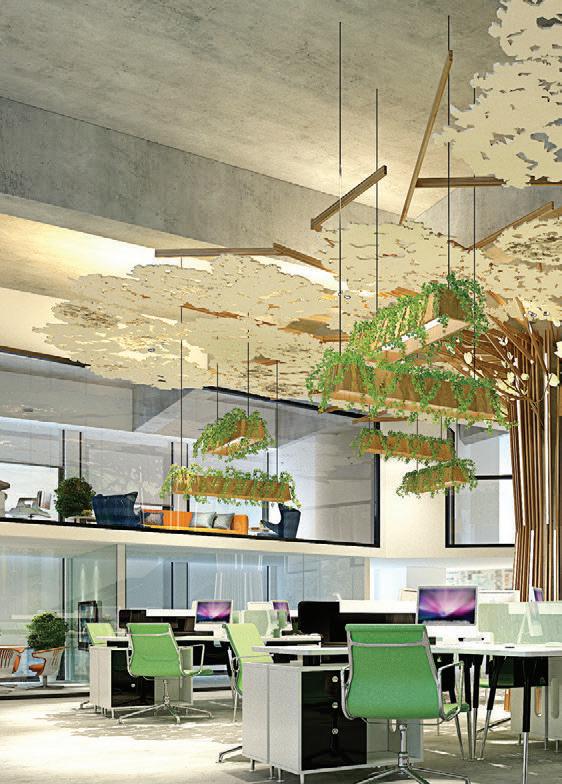



















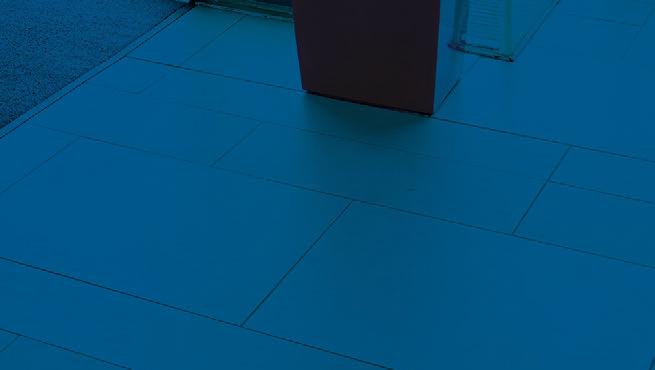
With more than 50 years experience in mat production and innovation, Kleen-Tex provides a wide range of products to reduce dirt and moisture from entering your premises. þ Keep dirt and moisture at bay þ Reduce slip hazards þ Cut cleaning costs MAKE MORE OF YOUR FLOOR For more information: +44 (0)1204 705070 www.kleen-tex.co.uk info@kleen-tex.co.uk
CLEAR ON WASTE
Transparency is key as FMs put environmental targets above compliance, finds the latest Waste Management Survey, carried out by FMJ in partnership with Grundon Waste Management

Managing waste and recycling has topped the table of priorities for facilities managers for the fi h year in a row, according to latest survey results of an exclusive survey undertaken by FMJ in partnership with Grundon Waste Management. Carried out every year since 2018, it is recognised as a benchmark in highlighting the topics and challenges that FMs face on a daily basis.
According to the results, now more than ever, when making a decision about managing their waste, FMs are demanding greater transparency in terms of how waste is treated and they are putting increased emphasis on understanding a waste provider’s commitment to environmental issues.
At the same time, FMs believe their
role in contributing to an organisation’s environmental targets is now more important than compliance – which has slipped out of the top three topics. Nearly a third said they were now less concerned about the risk of non-compliance with regulations than they were previously.
A higher than ever percentage (92.63 per cent) of respondents now say they believe their role actively mitigates reputational or financial risk, and Owen George, Grundon’s Divisional Commercial & Resource Strategy Manager, says it shows FMs are looking for even greater support to meet sustainability goals.


“I think what we’re really seeing is that a
lot of FMs now see compliance as a given as they know they are dealing with bona fide waste companies who are compliant with the fundamental elements, such as waste carriers notes and duty of care documentation,” he says.
“I also think waste management companies have become a lot better in explaining waste management and recycling processes, so FMs have the comfort of knowing what is happening to their waste now.
“In terms of needing to hit environmental targets, the emphasis that businesses are putting on facilities managers, who typically have responsibility for utilities and waste and all the things that generate carbon, is that we all need to be doing a lot more.
MAY 2022 38 FOCUS WASTE MANAGEMENT
“We are seeing companies come to us with new recycling materials and novel packaging materials, or they are asking us about how we collect our waste, for example if we are using electric or hydrogen vehicles.
“I think the big pressure they’re facing is how are they going to reduce their organisation’s carbon footprint in a meaningful way. In turn, we need to be able to demonstrate that we are playing our part in this overall climate challenge.”
A typical example of this would be Grundon’s own fleet of waste vehicles which is certified CarbonNeutral®, meaning waste collections don’t impact on customers’ own carbon footprint.
ENVIRONMENTAL ISSUES
Encouragingly, an increasing number of FMs now say they are now required to produce environmental reports. When the survey was first undertaken in 2018, only 50 per cent said this was part of their role, but for the last two years the figure has hovered around 80 per cent.
When it comes to the most important aspects of an FM’s role, over 45 per cent of respondents say contribution to environmental targets is their number one priority, closely followed by service delivery and return on investment.
Grundon’s Jack Yarrow, Regional Sales Manager, says customers want to work with businesses who can help push recycling up the waste hierarchy and bring in new ideas, such as, “our Paper Cup Recycling Service, which enables paper cups to be 100 per cent recycled at specialist facilities.
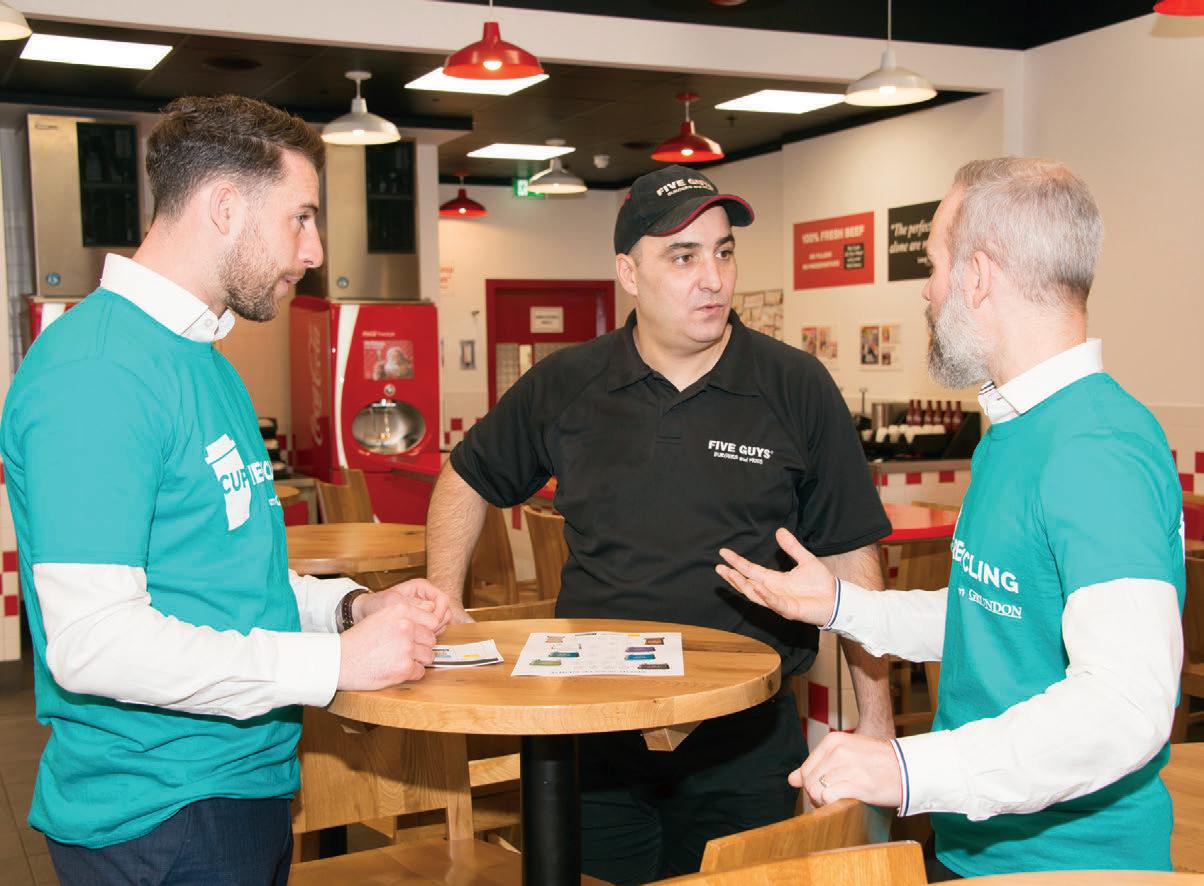
“What we’re seeing is customers who want to think outside the box in ways to increase their recycling,” he said. “It’s about waste audits – identifying opportunities for segregating out new waste streams from the general waste bins – using new technology to recycle those materials and, depending on the volumes created, to potentially then o er customers rebates in return.
“Customers are no longer content to aim for 50 per cent recycling, they are now looking at 70-80 per cent recycling levels and our employee education programmes and awareness days are a critical part of working towards these achievements.
“We’re also working hard to make sure
that these events are not just a tick box exercise where people think they can turn up, get a freebie and walk away again. It really is an education programme focusing on driving the recycling message and helping employees to understand that when they come to work, they cannot abdicate responsibility for what they do with their waste.”
Inability to engage sta is continually seen as the number one barrier to successfully increasing recycling levels, followed by physical restrictions, such as the lack of space for bins, compactors and other equipment.
ENGAGEMENT CHALLENGE
For the second year in a row, lack of senior management support/ understanding of waste management issues comes in at the number three slot.
To help demonstrate the importance of good waste management, the Grundon team o en invites customers to look round its treatment facilities and Yarrow says: “We find that when businesses come and see our level of investment and how technology is used to manage and treat their waste, it makes a real di erence.
they can see what happens to their waste it really hits home and then

they become the hands and eyes on the ground back in the workplace. If they see an employee putting a plastic bottle in a general waste bin instead of recycling it, they will pull people up because they have seen for themselves how much better it is for that bottle to be recycled rather than sent to Energy from Waste.
“It’s also really important to provide the monthly recycling statistics and reports to senior management teams to show where we are making a di erence, this helps them understand the benefits, both financially and environmentally, as it goes to their own sustainability credentials.”
According to the survey results, an increased number of FMs see improving waste and recycling as both a challenge and a headache – up from previous years – while the number who see it as an opportunity is dropping.
Countering this viewpoint is Ross Crook, Environmental Services Manager at Lakeside Shopping Centre in Thurrock, Essex, home to over 200 shops and some 40+ food and beverage outlets. In September last year Grundon took over provision of waste management services at Lakeside and Crook says what has been most eye-opening is the sheer volume of sustainability opportunities that have opened up as a result.
“We knew previously that we wanted to change the way we managed waste on site but at the same time, there was always a



MAY 2022 39 FMJ.CO.UK WASTE MANAGEMENT FOCUS
“Once
Inability to engage sta is continually seen as the number one barrier to successfully increasing recycling levels, followed by physical restrictions, such as the lack of space for bins, compactors and other equipment.”
little voice saying ‘is this the right thing to do’,” said Crook.
“What we’re realising is that, especially on a site of this size, the opportunities for recycling and reusing what we have here are endless – not everything has to go in a bin, there are so many other options available.”
disposal because collection fees are based on weight.
per cent v 23.1 per cent) said it would save money or cost more money – showing there is still an uncertainty amongst FMs about the best approach.
On the plus side, the number of people who believe a good waste management service won’t make a di erence has more than halved in five years.
from achieving rebates,













Lakeside has also benefited from achieving rebates, something that resonates as an increasing number of respondents (14 per cent) are now appreciating the opportunities to gain rebates on reprocessing and recycling.
In the first six months of its new contract, Lakeside achieved rebates of over £24,000 on cardboard recycling alone and further rebates may be achieved as there are also plans to bale and reprocess polythene and plastic coathangers. In addition, the introduction of a segregated food waste service is also expected to deliver costs savings.
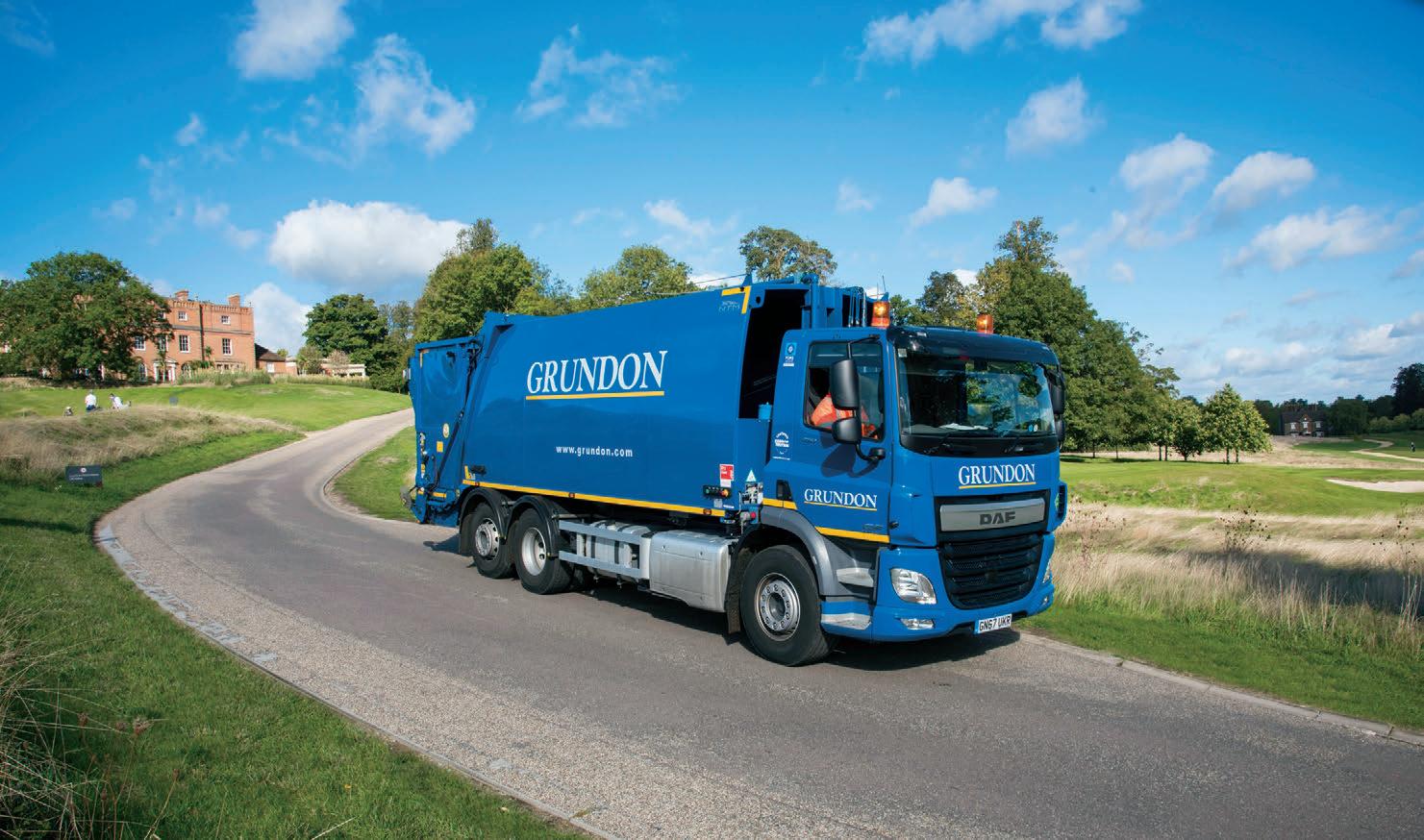
Because food waste is traditionally very heavy, if disposed of in general waste bins it not only makes the bins heavier to move, but also increases the cost of
Taking out the food element reduces the cost of general waste disposal – which is generally five times more expensive than disposing of segregated food waste – and provides a much more sustainable approach. If correctly segregated, food waste can be sent to Anaerobic Digestion facilities where it produces renewable energy and a nutrient-rich biofertiliser.
Crook adds: “We already knew we wanted to tackle food waste as it is likely to make the biggest di erence to our overall recycling rates and costs.
Digestion facilities to tackle overall recycling rates and costs.
“Because we have so many di erent types of food outlets it’s easy to think that it may only be three or four bags of food waste per small unit, but when you add that up with all the other food retailers too, it becomes a lot.”
While the majority of FM respondents said a good waste management service would deliver improved environmental credentials, an almost equal number (23.8
The number of FMs who said they had waste management strategies with clear environmental targets was over 50 per cent for the second year running, although the number who still hadn’t set targets had risen by nearly 10 per cent, showing there is still a need for greater forward planning. Those without a waste management strategy dropped to its lowest ever, at 7.5 per cent.

Yarrow concluded: “Every year the survey shows us that incremental steps are being taken to improve waste management and it’s encouraging to see FMs are asking more questions about transparency and environmental goals.
“We know from the results customers such as Lakeside that good waste management practice can deliver real, tangible results to both the bottom line and to sustainability goals.
“Working together with FMs is the key to success and we continue to give them every possible support to get those recycling statistics higher than ever and introduce new measures which help them to reach those important environmental targets in years to come.”
MAY 2022 40 FOCUS WASTE MANAGEMENT
achieved rebates of over
The number of FMs who said they had waste management strategies with clear environmental targets was over 50 per cent for the second year running...”


















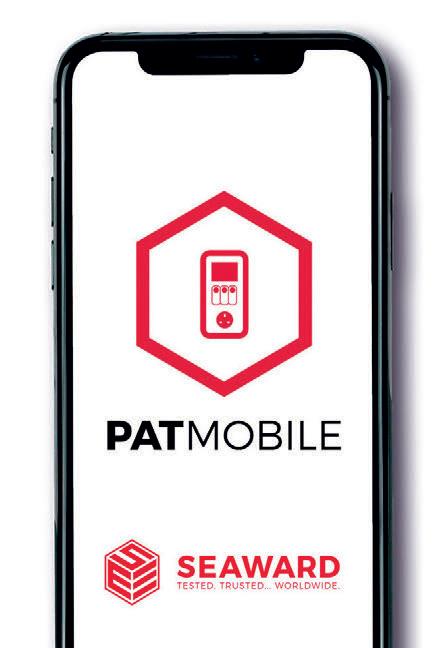


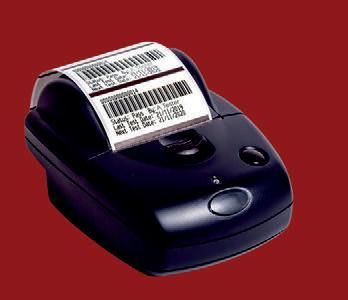







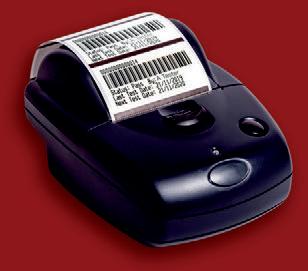






seaward.com Export & Print Test Record Export your test data to CSV and PDF and print labels Test your equipment with a Seaward PAT tester Input your asset information and test results into PATMobile Search ‘PATMobile’ in the app store today or find out more at seaward.com/FMJ • 5th Edition compliant • Easy to use • Export results to CSV and PDF • Print labels via bluetooth • Transfer test data from your phone via email • 1D and 2D barcode scanning for faster retest PATMobile allows you to manually input test results from your PAT tester and create CSV and PDF reports, making recording, reporting and retesting easier. Say goodbye to paper with our FREE PATMobile PAT testing app.
THE MAIN EVENT
Aer a three-year gap, the Facilities Show returns to ExCel this May. We hear from some of the leading exhibitors on their plans for the show and what you can expect to see and do at the world’s leading FM event.

ASSURITY CONSULTING FM1245



Greg Davies, Director of Market Development, Assurity Consulting says: “The focus on workplace, facilities and premises we saw during the pandemic will be crucial as we continue through our recovery, and this will o er both challenges and opportunities for our sector. Having the right information at the right time, to support a business to make informed decisions must be central to FM thinking. That is why we’re delighted to be showcasing Assurity Plus 2.0 property risk management so ware at the Facilities Show 2022. What Davies enjoys about the Facilities Show and other linked events is that they: “provide

that broad ‘one stop’ overview of the profession with suppliers, practitioners and end users all in one place. Through the exhibitions, seminars and networking, it helps give an appreciation of not only where current thinking is, but what may be on the horizon too. As a long-time supporter of, and exhibitor at the Facilities Show, it is great to be back in-person.
“Since the start of 2020, the FM landscape has not changed at all in some ways but been profoundly a ected in others. A myriad of services and solutions have also grown up around the pandemic, in tandem with a variety of new and additional needs being demanded by stakeholders. Combine these with changing legislation and there is much to consider. As well as providing that position snapshot for the industry, the Facilities Show should therefore help with educational seminars determing the direction of travel for FM in the future.”
In terms of the main benefits visitors will get from visiting both the show and the Assurity stand, Davies believes: “Health, safety and wellbeing have and will continue to be high priority, high value activities for organisations and FM. Both employers and employees are looking for
reassurance, so need to trust that the information they are getting.”
CLEANKILL

Paul Bates, Managing Director Cleankill Pest Control says: “Attending the Facilities Show is one of the highlights of the working calendar for the Cleankill Pest Control team. We attend many events during a normal year but this one is the biggest and is a perfect fit for us as we specialise in working with facilities managers – especially those looking a er multiple sites.
“The show gives us a chance to meet some of our current customers and have face-to-face contact with new and potential customers. It’s also an opportunity to showcase and talk about the wide range of services we now o er and our emphasis on green pest control. We’re so pleased that we can meet people face-to-face a er two years without the Show.
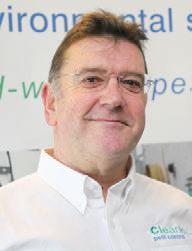
MAY 2022 42
FM2434
Greg Davies
Paul Bates
Some call it the



INTERNET OF THINGS





We call it keeping hospital staff and patients safe




Where smart sensors monitor footfall in real time so our cleaning teams and fleet of robot assistants can prioritise where they clean.
This is the Science of Service This is just the star t















mitie.com/scienceofservice




The exceptional, every day
“Visitors to our stand can see some of the tools we use to keep premises free and talk to them about how Cleankill is di erent from other pest control companies. It’s also a great opportunity for attendees to meet and get to know key members of the team and talk about their current service provider and how we might be able to do things di erently and more cost e ectively.
“Cleankill is growing as brand but we still need to raise awareness of our company in a market that is dominated by a household name. It’s around our 15th year at the Facilities Show and we absolutely love the buzz of the event, the venue and the excellent speakers. The show will continue to be a firm fixture in our marketing calendar.
“And of course, we have the obligatory chocolate mice to sample should anyone need a sugar boost.”
“Elior is probably best known for its catering expertise and that it provides catering services in the business & industry, education, health and care home, defence, stadia and heritage sectors,” comments Ian Russell, FM Sales Manager for Elior.
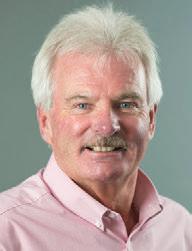
“Catering is our core service but Elior also provides a bespoke range of so FM services such as cleaning, reception, janitorial, concierge, waste management and grounds maintenance and the Facilities Show is the perfect place for us to raise awareness that we o er these additional services. It also allows us to highlight our latest innovations in technology and service delivery.
“Of course, the most significant aspect of

2022 SEMINAR AGENDA

Along with a host of exhibitor stands the show will feature a range of seminar events, covering a wide range of topics, from innovations in FM technology to ways of achieving sustainability targets.
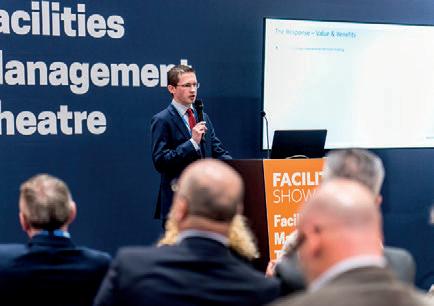
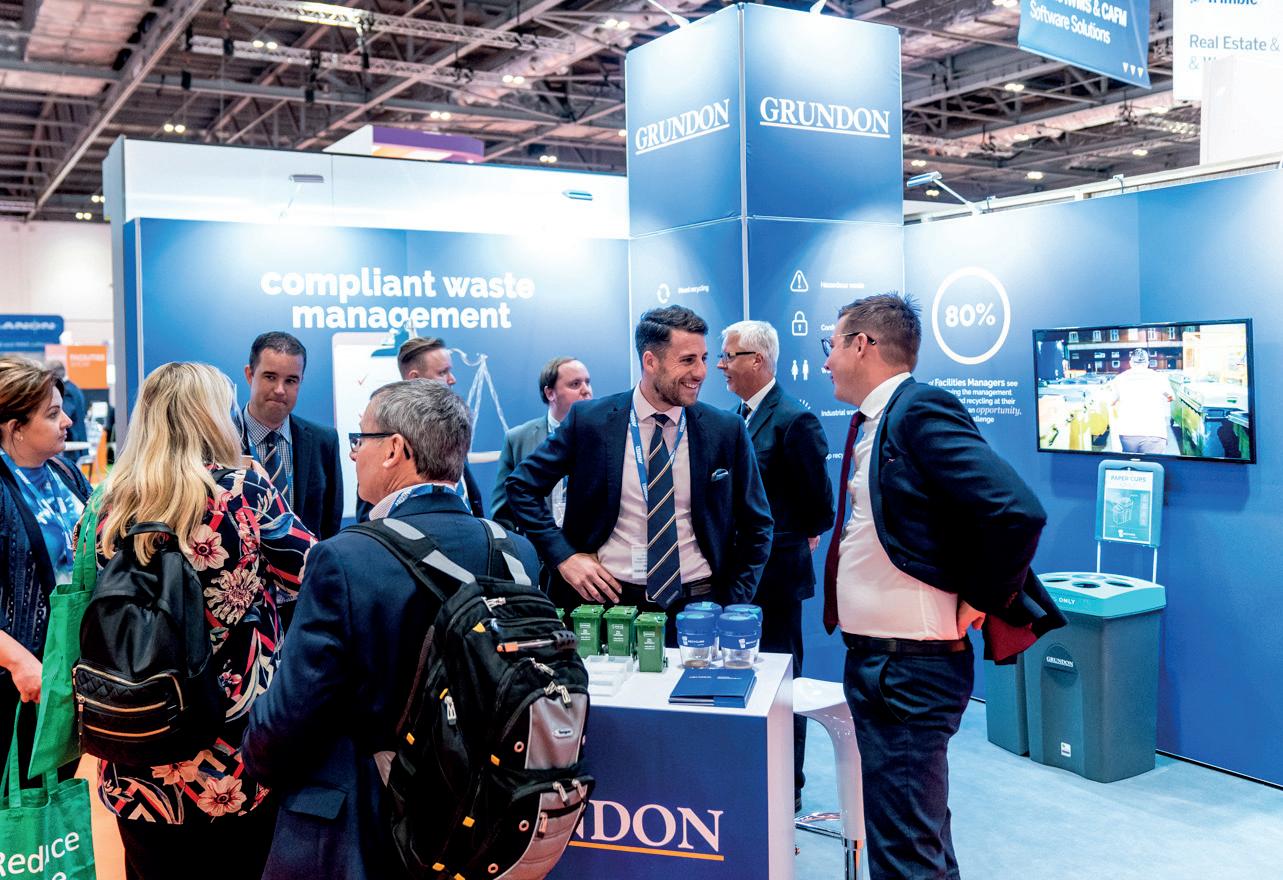
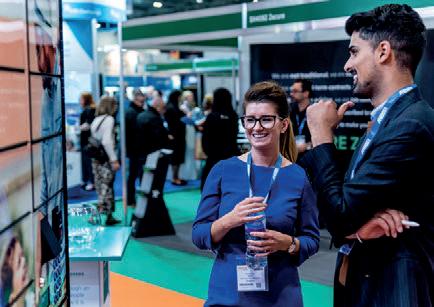



FMJ is pleased to be sponsoring an event - Sustainability in FM and achieving Environmental, Social and Governance, which takes place on Wednesday 18th May between 3:00pm - 3:45pm at the FM Theatre on the Facilities Show floor.
ESG is now a hot topic for anyone working within the built environment, encompassing as it does the many strands of sustainability. Environmental goals, such as achieving net zero remain a priority, but alongside this, the role of facilities management in helping to meet societal aims, from addressing modern slavery to supporting the supply chain is also vital. Wrapped around these areas is the need to achieve compliance, to ensure that FM is not just meeting its ESG obligations but has the processes in place to meet ESG regulations and reporting mandates. FMJ is pleased to bring together a panel of thought leaders in sustainability to discuss the opportunities for FMs to be front and centre of the integration of ESG into their organisations.
MAY 2022 44
Chair: Jo Sutherland, Managing Director Magenta Associates
Panel: James Bradley, COO – Churchill Group Helen Jones, COO for Corporate/ Enterprise clients at Alcumus Lucy Hind, Senior FM Lecturer, Leeds Beckett University and member of FMJ Editorial Steering Committee Owen George, Strategic Development Manager, Grundon Waste Management Ltd
FM2436
ELIOR
Ian Russell























This is the Science
Service This is
the star
call it BIG DATA mitie.com/scienceofservice
our
security feeds and incident management monitoring
The exceptional, every day
of
just
t Some
We call it keeping you safe on your day out Where
live
keeps our security teams one step ahead, so public spaces stay trouble free.
this year’s event is that we will be back at the Facilities Show in person, something that we always took for granted pre the pandemic and a type of engagement that we sorely missed. We are looking forward to discussing what we do face-to-face again and to have informal discussions about what customers are looking for and how we can potentially help them.
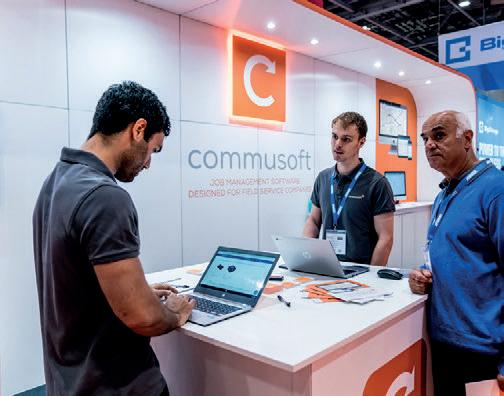
“The Facilities Show is a great blend of exhibitors, networking opportunities and seminars. I try and visit seminars that highlight recent changes in legislation or compliance, particularly in the Government sector, and to learn about new developments in the industry. We always come away from the show feeling more in touch about what really matters to customers and with a deeper understanding of the type of services they are looking for.
“The show provides us with the ideal opportunity not only to raise awareness of the services we o er, beyond catering, but also to communicate that we o er tailormade solutions and have the capability to provide local support, because of our national infrastructure and regional teams, both of which we know are very important to customers.”
FORBO FLOORING SYSTEMS FM1656

Sharron Kapellar, National Framework Manager at Forbo Flooring Systems says:

“The Facilities Show is a great place for our team to network with facilities managers from across the country – something that has really been missed over the last two years. With the show returning, our team cannot wait to get back to speaking to those in the industry face-toface and showing them what we have to o er.
“This year we are exhibiting our Fast Fit collection, a range of adhesive free flooring solutions in plank, tile and sheet formats, where we are hoping visitors to our stand may discover a new way of approaching their flooring refurbishments.
“We will also be highlighting the importance of entrance flooring systems, as they play an essential role in improving safety, reducing cleaning requirements and extending the life of interior flooring.
“Additionally, our friendly and knowledgeable experts will be on hand to discuss and solve any queries visitors have. We hope that for many new customers, the show will provide them with a new point of contact that will help them to meet their current or future requirements.”
FSI - MRI SOFTWARE
leading FM and Property Technology,” says Sally Wotton, Marketing ManagerFSI product range.

“As two leading technology partners, we are coming together to provide a range of solutions that support a vision for a sustainable and thriving workplace, a future without burdens or limits.
“It isn’t just about CAFM and IWMS anymore, but instead it is about providing an extensible ecosystem of FM and Property Technology to revolutionise Real Estate, Workplace, and Operations. And these technology solutions include: Facilities Management Property Management Workplace Management Room & Desk Booking Mobile Workforce
Energy Management
“All of these will be showcased on the stand, and for us, as I’m sure is the same for everyone participating, nothing beats those in-person face-to-face conversations with your clients and colleagues, and the general FM community. The Facilities Show is such an important FM event and having this back in 2022 is a sign that FM is still fundamental for any organisation.
“The Facilities Show always provides a well-rounded experience for attendees. Attendees should therefore try to experience as much of the linked seminars and networking opportunities available to them, as well as visiting the exhibitors for the products and services that are right for them.

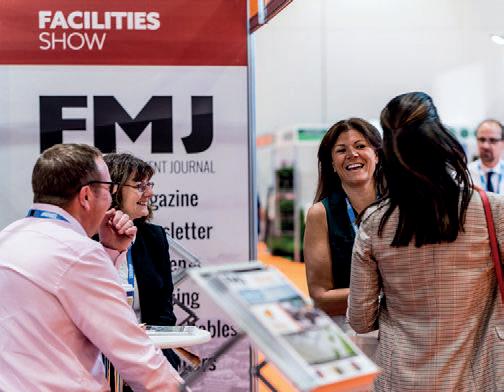

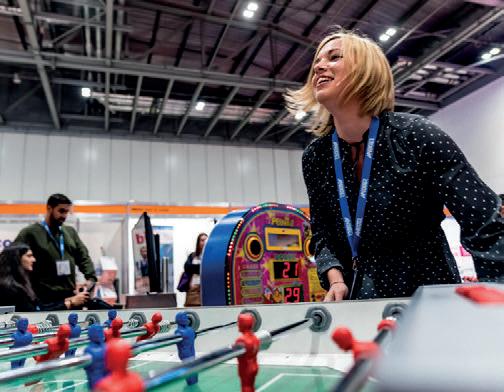
“The main benefits visitors will get from visiting our stand and the show will be to learn about the coming together of FSI and MRI for the provision of the FM and Property Technology they need to move their workplace and organisation forward. And for the show in general, a chance to network with clients, colleagues, and the general FM community. FM has been shown to be of even more importance over the last two years, the Facilities Show helps to elevate the status of FM further.”
NURTURE LANDSCAPES GROUP FM2630
FM 2460
“The Facilities Show is a great platform to show the coming together of FSI and MRI, to provide

“To say that plenty has changed since The Nurture Landscapes Group last appeared at the Facilities Show in 2019 would be an understatement,” comments Paul Bean, Sales Director.
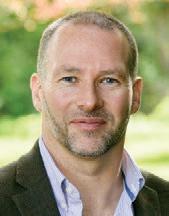
“What has remained consistent however, is our





MAY 2022 46
Paul Bean
Sharon Kapellar
Sally Wotton
Some call it DECARBONISATION
We call it protecting our planet for the next generation

Where our data experts pinpoint where you can make the biggest carbon savings to accelerate your path to net zero.

This is the Science of Service


This is just the star t















mitie.com/scienceofservice




The exceptional, every day

commitment to delivering quality services to each of our customers and the Facilities Show is the ideal place to reinforce our relationships. As a Group, our service o ering has expanded to now include pest control, as a direct result of the changing requirements of our clients. While the Facilities Show will give us a great platform to demonstrate our core o erings of grounds maintenance, plant displays and winter gritting, it will also be an opportunity to illustrate how all areas of the business supplement and strengthen one another.
“This year’s theme of creating smart, e icient, and healthy work environments is something that connects multiple groups, including ourselves. It will, undoubtedly, be the catalyst for inspiration amongst businesses looking to make the FM sector sustainable, and we are excited at the prospect of being involved in those conversations.
“The Facilities Show presents an opportunity for all FM businesses and suppliers like Nurture to learn and share sustainability practices with peers and customers alike. It has always delivered thought-provoking seminars and panel discussions which, in turn, have given us ideas for how we can improve our own operations, and no doubt the same will be the case this year, particularly when it comes to working sustainably and responsibly.
“Having achieved carbon neutral status in accordance with PAS 2060 and demonstrating our commitment to our sta as a Real Living Wage employer, the ESG agenda is a major part of our ethos.
“Being at the Facilities Show is exciting for all members of the team at Nurture and we are looking forward to welcoming visitors to our stand FM2630.”

MONEYPENNY FM2412



Jess Pritchard, Head of the Corporate Sector at leading outsourced communications provider Moneypenny says: “We’ll showcase how we’ve adapted our outsourced switchboard service to support hybrid working with our Teams integration. This has tremendous value for facilities professionals as it gives them the communications infrastructure they need to accommodate remote working. It enables calls to be routed to the right person, wherever they are. It also means we can check Teams’ status and only transfer calls when the person is free, or take a message if they are in another Teams meeting.

“We’ll also major on the more strategic benefits of outsourcing switchboard provision – such as reducing overheads, avoiding the
challenges of recruiting switchboard sta in house, ensuring robust communications provision and guaranteeing consistent and professional service, not to mention helping to make businesses more scalable too.
“Without a doubt the main areas we’re looking forward to from the show has got to be networking with clients and partners and making new friends. The pandemic has really highlighted just how much we all value human connection, so events like the Facilities Show provide a brilliant opportunity to get the industry together to do business and share ideas.
“There’s also lots of value to be had from the events on o er. Part of that comes from gathering information on latest trends and new products, but there’s also tremendous value in listening to our peers and discussing the challenges the industry faces. All of this helps with personal growth, but also with wider innovation in the sector.”
“I hope that visitors to our stand will see how innovation through technology can really add value to their business, and gain some thoughtprovoking ideas on how they could improve switchboard management. Our message is all about future proofing communications and ensuring that systems, and partners, o er the flexibility that businesses really need. The pandemic was a lesson in business agility, so we’ll be showcasing exactly where Moneypenny can help. Plus, because we know just how popular they are, we’ll have plenty of our signature Moneypenny socks to give away too.”
SLINGSBY FM1400


“We’ve seen first-hand how businesses have responded to the e ects of the last few years, and as a result our product range has adapted to meet the needs of our customers,” explains Christian Slingsby, Southern Area Accounts
“As we transition into a post-COVID world, we’ve seen high demand for products that improve air quality and ventilation, an increased focus on workplace health and safety, as well as changing requirements from storage and handling in the expanding world of online selling.
“We’ve been able to meet these changing needs with our wide range of products, from air purifiers and air quality monitors to a wide range of warehouse solutions that include shelving, storage and racking, PPE, signage, order-picking trolleys and powered handling equipment.
“We’re very much looking forward to reconnecting with new and existing customers, a er a challenging couple of years. Customer relationships are extremely important to us, attending exhibitions provides the opportunity to recommend products in a more personalised way. In-person discussions help us understand specific requirements and recommend bespoke solutions to both improve e iciency and suit business needs.
“This year’s Facilities Show will be especially beneficial for both exhibitors and attendees, as many organisations have used the time away to refine their product and business models. We’re very keen to chat with like-minded people within the industry about how they plan to move forward in 2022 and beyond. Whether you plan to speak with us about a set goal, or you’d like to find out more about our products and services, the Slingsby team are on hand to o er advice and provide product demonstrations. We look forward to meeting you at stand FM1400!”
Manager at Slingsby.
MAY 2022 48
Christian Slingsby
Jess Pritchard













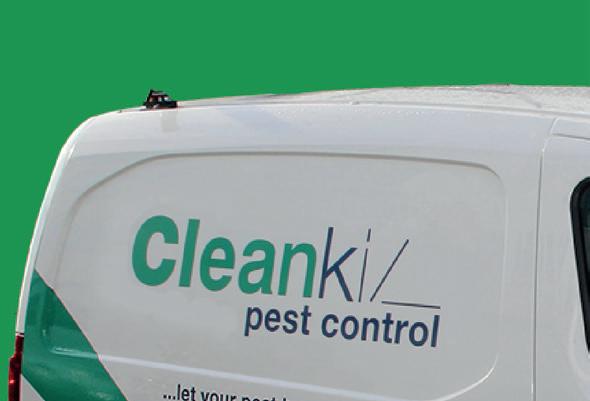














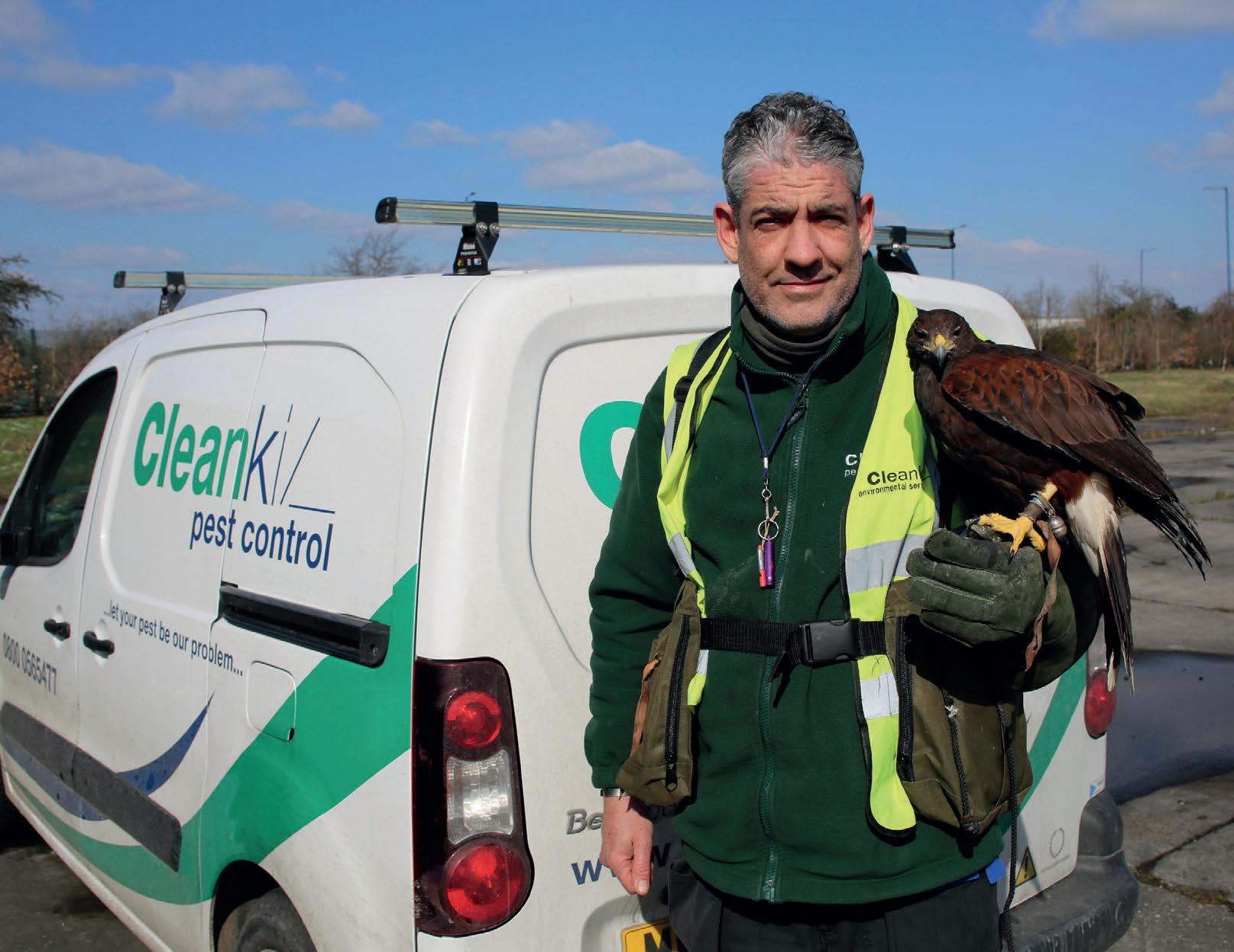
FAST & EFFECTIVE AWARD WINNING PEST CONTROL FREE SURVEY & COST COMPARISON
HIGH ENERGY
Walsh, General Manager – EMEA at CIM, looks into the role a smart building analytics strategy can play in managing high energy using industrial sites
manufacturers are best placed to handle soaring bills and increasingly demanding sustainability commitments.

This reality is further underlined in CIM’s research, which found that less than one-third of facilities managers surveyed (29 per cent) were continually monitoring carbon emissions. These findings were in spite of the fact that 63 per cent of respondents’ sites had been certified to the ISO 50001 standard for energy management. Considering that 62 per cent of respondents also believed they were deficient in their day-to-day collection of key BMS data, a picture is further painted of under-pressure and misdirected facilities teams and enhanced requirements for support with building and data monitoring.
ALARM FATIGUE
The volume of data that BMS and critical equipment can produce is understandably overwhelming, which can lead to the phenomenon of ‘BMS alarm fatigue,’ in which FMs inundated by constant alarms may become less likely to address these alerts. As a result, a further barrier is erected against mitigating skyrocketing energy costs and decarbonising operations. This is seen in CIM’s findings, where 27 per cent of respondents said all BMS alarms go unactioned as they receive too many notifications.
EFFECTIVE UNDERPINNING
The everyday burden of keeping large life sciences and micro-electronics manufacturer sites as e icient as possible o en falls to facilities management teams. But the impact of recent ongoing global crises is hard to ignore, and industry sources are warning that electricity prices may see costs up to 60 per cent more than on the continent.
Many UK tier 1 large manufacturing companies have announced their intention to achieve carbon neutrality, but delivering on this commitment will prove uniquely challenging for leadership and facility management teams in energy-intensive, hi-tech factories. This is especially pressing with decarbonisation targets and the UK’s notoriously high industrial electricity £/kWh in mind, which is set to be impacted further by ongoing geopolitical events.
Regulations around this pressing issue have become increasingly stringent, with the Government’s 2019 pledge of net-zero carbon emissions by 2050 tightened further as a roadmap is built to a greener future. Governmental legislation adopted from the Climate Change Committee’s Sixth Carbon Budget advisory report, which proposed emissions reductions of 75 per cent by 2035, is a good example of this increasingly ambitious, but no less painful, approach to decarbonising operations.
INSUFFICIENT C-SUITE SUPPORT
Facilities managers at the sharp end of these issues
are not receiving the support required to reduce consumption in areas such as HVAC systems, which can account for circa 40 per cent of a site’s overall energy consumption. Indeed, according to recent research commissioned by building analytics specialists CIM and published in their new report, The Energy Blind Spots, only 35 per cent of facilities managers at Tier 1 manufacturers felt that energy e iciency was a high priority to the C-Suite.
Additionally, 54 per cent of FMs felt that HVAC costs are being recognised by senior management, but to really achieve net-zero commitments and improved energy performance while remaining competitive, site leadership teams need to prioritise e iciency programs on HVAC plant and critical equipment.
The importance of addressing HVAC e iciency becomes even greater still when considered alongside additional findings from CIM’s research, where 87 per cent of respondents stated that CAPEX constraints were a major barrier to improving energy performance. This highlights the need to realise OPEX savings through means such as actionable, data-informed building insights.
PERPETUAL FIREFIGHTING
With insu icient support from senior leadership teams, FMs may end up in a cycle of perpetual firefighting, constantly addressing issues arising from building management system (BMS) alarms. Moving these personnel from a reactive to a proactive footing will be key to ensuring energy-intensive
Fortunately, technological innovation is already occurring to address this concern, with building analytics platforms being developed that ingest live building data. By applying machine learning and automated Fault Detection diagnostics these platforms can provide predictive and proactive insights and actions. Alongside verifying that improvements do not degrade over time, the most innovative of these systems are also monitored by HVAC mechatronic and electrical engineers, ensuring workloads are prioritised towards actions that will achieve the strongest outcome and savings.
With these platforms and steps taken, facilities managers can go beyond the previous reactive, or ‘fix-and-forget’ approach that can leave them in a constant loop of running repairs, and unable to best action larger strategic steps to improve overall e iciency and sustainability. Instead, they can now be in a better place to address outside concerns such as advancing decarbonisation targets and rising energy costs. Tackling these OPEX concerns could therefore help turn mountains back into molehills as far as CAPEX constraints on energy-e icient equipment are concerned.
By taking the comparatively minor step of deploying a smart building data strategy, key stakeholders could spark the beginning of a virtuous circle, in which interdependent areas – sustainability, competitiveness, and energy e iciency – inspire ongoing improvement. Consequently, an underpressure sector and its personnel can be more e ectively braced against further disruption in the future.
For more information on CIM’s new report, The Energy Blind Spots, visit https://cim.io/documents/ energy-blind-spots/
MAY 2022 50 FEATURE ENERGY MANAGEMENT
Paul




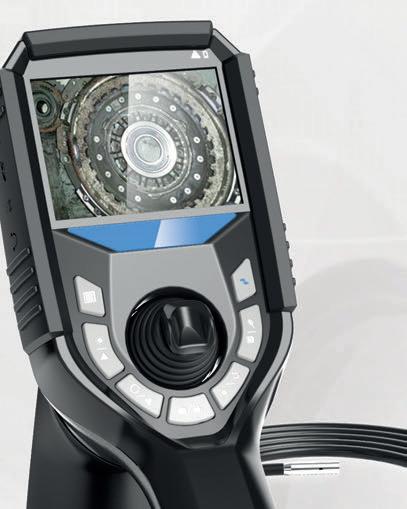
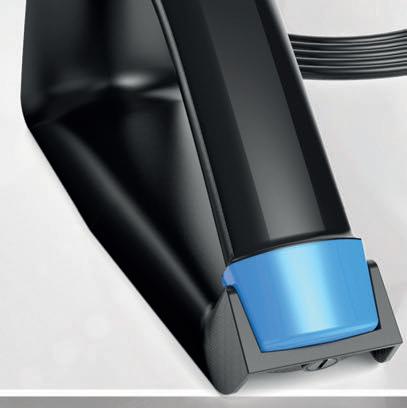

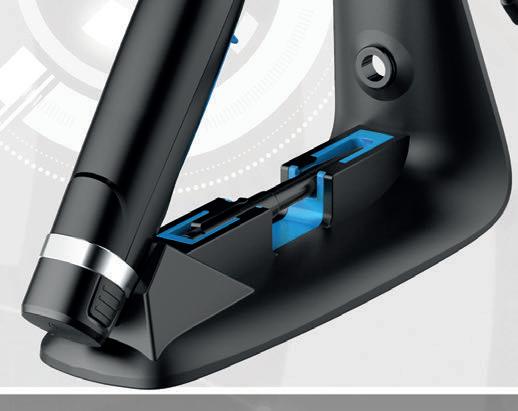











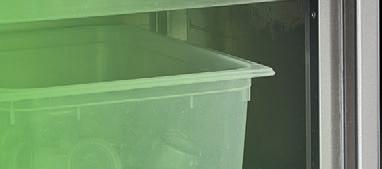






HD Articulating Videoscopes • 360° Joystick control • Image, video and audio capture • Battery or mains powered • 1920 x 1080 OLED Screen Call us now on: 01761 404870 for more information and competitive prices. The new range of high definition videoscopes from Dart Systems. From 2.2mm diameter upwards +44 (0) 1761 404 870 enquiries@dartsystems.co.uk www.dartsystems.co.uk Dart Systems Ltd, Environment House, First Avenue, Westfield Industrial Estate, Radstock BA3 4BS capture upwards. Designed for the hygiene needs of a new world Professional Warewashing Technology FREE DOWNLOAD How to design waste out of the commercial kitchen BioMaster An economically and ecologically sensible long term solution for recycling food waste and scrapsconverts food waste into biomass, for recycling into environmentally friendly renewable energy. To see how Meiko can help you, visit www.meiko-uk.co.uk BioMaster meiko_half_page_fmj_waste.indd 1 14/04/2022 10:18:23
TRANSFORMATIVE ADVICE

The 2022 British Council for O ices


(BCO) Annual Conference, which takes place in Manchester from Tuesday 14th to Thursday 16th June is aptly entitled ‘our time is now’, focusing on the unique opportunity for the workplace sector in rethinking the role of the o ice to deliver positive change.





The session ‘Transforming building occupancy’ will bring together Vernon Blunt, Global Workplace Operations Director at Ericsson, Paul Casey, Director of EMEA Real Estate at IBM and Andy
McBain, Head of Future of Workspace & Design for the NatWest Group to discuss the future role of the o ice in delivering business value. It’s being chaired by Despina Katsikakis, Global Head of Workplace at Cushman & Wakefield, who during a 35-year career, pioneered workplace consultancy services for global corporations and real estate developers. Reflecting on her considerable experience in forecasting and delivering future of work strategies she says: “I worked with Frank Du y at DEGW from 1984 and the
focus then was on how this thing called the desktop PC would change how people worked, and how it would a ect workplace design. Forty years on we’ve come full circle and now we’re asking ‘how is mobile technology changing the way in which we work and what are the implications for buildings?’
“Now we’re addressing the same question by looking at how the intersection between technology and place impacts working practises, where people live and work, how we work and the role of buildings, real
MAY 2022 52 FOCUS INTERVIEW
With over 35 years of innovation and research into the workplace Despina Katsikakis, Global Head of Workplace, Cushman & Wakefield believes now is the time for FMs to play a critical role in the transformation of building occupancy
estate portfolios and facilities management practices.”
O ice building utilisation was between 50 to 60 per cent usage across a typical working day before the pandemic, and while people were working flexibly, the di erence was they all had assigned seats and were expected to be in the o ice all of the time. Cushman & Wakefield take regular analysis of the impact of the pandemic on working patterns via its Experience per Square Foot (XSF) tool and has collected a huge amount of data on people’s experiences working from home.
Explains Katsikakis: “We found that the ability to focus and to collaborate stayed consistent while working from home, which proved you could work remotely and the technology was there and robust enough to do that. However, people’s ability to feel connected to company culture, to their colleagues, to feel inspired, to collaborate in an innovative way, to be mentored and to learn from others started dipping and dipping.
“That was particularly di icult for younger people who didn’t have the networks in place, who weren’t already connected to the business and who didn’t have the physical space at home to work e ectively.
“But the biggest change during the pandemic was that 90 per cent of people felt trusted by their managers to work remotely, compared to 35 to 40 percent pre-pandemic. People also felt they could continue to focus and collaborate at home. The data showed that 78 per cent of people want to have choice and flexibility – they don’t want to have mandates of coming into the o ice, but they do want to come back to the o ice two or three days a week. That way they’re more connected, wellbeing actually increases, their work/ life balance goes up, and they’re more informed and inspired.”

WHY WORKPLACE?
According to Katsikakis, the reason why people want to come to the o ice is to intentionally and meaningfully connect with others, which does challenge the workplace to compete with home and allow occupants to do the things they couldn’t do elsewhere. If people come into the o ice expecting to do what they did before it is not going to work she argues, and if they come in expecting to do what that do at home that won’t work either.
“We need to adapt our behaviour and adapt the space and businesses accordingly. This includes all the social and mentoring opportunities. How you make sure those things will happen comes back
to the intentionality of planning. If people know who will be in the o ice and know where they are going to sit it will be more of a driver to come in, rather than if they show up and no one is there or they are all on zoom calls.
“This is where intentionality is a key factor and it is going to create more pressure on how we manage buildings and teams in order for people to be able to know why they’re coming in and act accordingly. That is where we’re going to see a lot of emphasis and planning and why a lot of our clients are creating pilot environments and bringing in di erent groups of people to test and measure what works and what doesn’t, as a lot of this is about behavioural change.”
REPURPOSED WORKPLACE
The disruption caused by the pandemic has resulted in a massive rethink in the design and layout of the o ice.
According to Katsikakis while around 60 per cent of space in an o ice was previously devoted to individual desks, it is now predicted to be reduced to about 30 per cent for individual workspaces, supplemented by focus rooms, booths and the introduction of other types of quiet areas such as o ice libraries.
Meanwhile, she explains: “Collaborative
space is going to increase from around 30 per cent to about 50 per cent and that will include more virtual tech integration so that you can really embrace the people who are not there, o ering experiences that are much more e ective.
“Social, wellbeing and amenity space that would typically have been about five per cent pre-pandemic we expect to go up to about 20 per cent. If you think about the o ice as a place to connect, to learn and socialise with others, being able to create those intentional opportunities, to make those collisions happen will be really interesting.
“It changes the whole nature of FM if we’re moving from wrenches to smiles. It’s all about curation and a hospitality mindset, by creating and inspiring destinations for people to want to come in and be part of the o ice.”
There has and will be some debate on whether these changes will result in cuts in corporate real estate and Katsikakis believes clients tend to take one of two approaches: “Either using the same amount of space but with a di erent layout and design or reducing the core space and leveraging an ‘ecospace’ of locations which will be home, third spaces and the o ice, so less space but better designed and more curated, alongside touchdown and home.”
One of the discussion points of the BCO debate will be how to meet the expectations of employees which have
MAY 2022 53 FMJ.CO.UK INTERVIEW FOCUS
Collaborative space is going to increase from around 30 per cent to about 50 per cent and that will include more virtual tech integration so that you can really embrace the people who are not there, o ering experiences that are much more e ective.”
A lot of strategies focus on what can be done with a building to support carbon reduction but we need to put the humanity element into ESG and take a community engagement perspective, from growing your own food on campus, sponsoring local restaurants and organising charity days. All of these aspects we will see have much more emphasis in the built environment as we look to the future.”
changed significantly over the past two years and as the challenges of attracting and engaging talent have increased. According to Katsikakis, along with design the allocation of amenities is hugely important, from the provision of great co ee via a barista service to elements like a local pop up restaurant with ethnic food choices, cultural connections and activities you can’t do at home, all of which should be high quality and unique, not just a limp salad bar in the corner.
ESG AIMS
Achieving Environmental, Social and Governance (ESG) is another key theme of the BCO conference discussions. As Knight Frank predicts, “those who create o ices that are more customer-centric, reduce environmental impact and proactively utilise technology and data will win in the brave new world of o ice”.
“How we begin to create an aligned point of view around ESG is very important,” says Katsikakis as it is going to be a critical area of impact both for occupiers and landlords. How those landlords that can support ESG targets

that their occupiers are already aiming for to attract occupiers to their buildings and vice versa is going to be a really impactful area for the conference.
“A lot of strategies focus on what can be done with a building to support carbon reduction but we need to put the humanity element into ESG and take a community engagement perspective, from growing your own food on campus, sponsoring local restaurants and organising charity days. All of these aspects we will see have much more emphasis in the built environment as we look to the future.”
She also predicts more investment on end of route facilities. Occupants are no longer happy to cycle to work and just get o ered a parking space. They want to have showers, laundry and other really good facilities to enable them to arrive and get changed for work. They also want more wellbeing facilities, exercise areas that are really high quality, meditation and prayer areas. This is where the introduction of technology using real time data to manage the building, manage the experience and
the energy, will come into play.
“What I’m finding really interesting is the integration of building apps, booking systems and sensors that can help manage how o en you clean in the building, how much food you order and what type of food you provide to support users’ demands. Workplace managers and occupants are excited to use that tech because they recognise the sustainability component. If the building knows that I like salads and it orders more of that there is less food wastage and it results in a more responsive environment.
“I think this is a very exciting area for the future as it means over the few years we’ll have real time analytics and data to really forecast capacity, services, and adapt them accordingly.”
WORKING TOGETHER
One of the aims of the conference is to bring all those involved with the future attributes of the o ice together to debate the opportunities for the sector to reevaluate and reset. This says Katsikakis means FM and CRE collaborating more than ever before to engage the C-suite in making positive changes for the future.
“CRE and FM have to work together in a completely seamless and integrated way because the value is not saving the cost of real estate or the cost of FM delivery. The value is in creating memorable and impactful experiences. FM is at the forefront of that, so that FM is really where you operationalise the entire corporate real estate strategy, and make it work.
“The reason why that becomes critical for the C-suite is that the objective of every single organisation at the minute is around ‘how do I attract and retain talent? How do I inspire people to come to the o ice to make those connections?’ Our data shows a direct correlation between the level of experience within the o ice to the level of engagement with the company and that goes across the board in terms of demographics.
“For the first time ever, we’re seeing the correlation between experience and engagement and engagement is the number one metric that HR use to look at how they can retain talent. With the FM experience at the sharp end of that interface of the employee with the workplace, it becomes the critical driver for business performance.”
www.bco.org.uk/Conference

MAY 2022 54 FOCUS INTERVIEW
Those You Trust Most, Trust Us.
Whether supporting on-estate equipment or remote working, essential healthcare infrastructure has to run smoothly. That’s why you need more than just a reliable UPS, generator, IPS or emergency lighting system. You need exceptional service from start to finish.
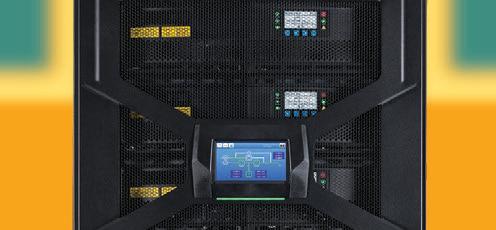



We’ve received best-in-class customer satisfaction scores via Satmetrix® and top 25% employee engagement scores from GLINT. So, you can be sure that you’ll be properly looked after by Kohler professionals who really care about getting it right.




Ask us for a no-nonsense quote backed with deep technical knowledge and a genuine desire to help.


















































Kohler PowerWAVE 9250DPA. Independently certified as the most efficient UPS on the market today. Call 01256 386700, or visit kohler-ups.co.uk NICE and Satmetrix are trademarks or registered trademarks of NICE Ltd. GLINT is a registered trademark of LinkedIn Corporation.
CONVERSION STRATEGY
Converting your Building Management System (BMS) into a Building Energy Management System (BEMS) is very cheap to do and can provide massive energy savings, combined with very good paybacks. Working through the various control functions systematically, ensures that energy use is optimised, and the maximum savings realised.
TIME CONTROL
This ensures that plant only operates when it is needed. A seven-day programme allows

individual days to be programmed, as weekends may be di erent to weekdays, and allows Bank Holidays to be taken into account.
An air conditioning system needs to switch on an hour or two before people arrive, to get the building up to its normal occupancy temperature. This is known as the warm-up period and its length depends on the outside temperature. An optimum start control system monitors the outside temperature and ensures that the warm-up period is the minimum length of time, which minimises energy wastage. Similarly, the
system
‘ON-DEMAND’ HEATING AND COOLING
Plant should only operate when required. On-demand control ensures that heating and cooling only operates when an area calls for it. If the whole building is at or above the set point temperature, then the heating will not be operational. Similarly, the cooling will not operate when the
MAY 2022 56 FOCUS SUSTAINABILITY
Andy Sparrow, Head of Energy and Sustainability at Platinum Facilities explains the energy and cost saving benefits of turning your building BMS into a BEMS
can switch o plant before the end of the occupancy period, so that the building can run on residual heat le within the heating system, thereby reducing run times.
building is cool enough. It is important to avoid simultaneous heating and cooling. Plant should be sized so that units can come on incrementally. We do not want the total heating/ cooling capacity to operate in one hit, when only a proportion would su ice. For instance, when cooling is called for, the first stage will operate for a set period. If this can maintain the set point temperature, then the second stage is not required. However, if the temperature is still too high the second stage will be brought in, followed by the third, fourth etc, as required.
UTILISING THE EXTERNAL CONDITIONS
The di erence between the heating and cooling set points is known as the deadband, which is the temperature range where the system remains idle. Only when the heating or cooling set points are exceeded will the system reactivate. For instance, if the heating set point is 19°C and the cooling set point 23°C, then heating will only operate below 19°C and cooling above 23°C. The system will not operate between 19°C to 23°C.
The heating set point is normally fixed, but the higher the external ambient temperature, the higher the cooling set point can be, and hence the wider the deadband. For instance, if the external ambient temperature is 30 °C then the cooling set point can be increased to 24 °C (and the dead-band increases from 4 to 5 °C).
When the external ambient temperature exceeds 16°C, buildings generally do not require any heating. Hence, the heating system should be locked out, providing it doesn’t also heat the hot water.
When the external ambient temperature drops below 13°C, o ice buildings will generally not require any mechanical cooling. Free cooling should su ice, and the mechanical cooling system should be locked out, providing local hot spots are still cooled.
COMPENSATED FLOW TEMPERATURE
The flow temperature of a LPHW heating system (and cooling systems) can be varied with external ambient temperature. As the external ambient temperature increases so the flow temperature decreases, as the heating requirement is reduced.
The flow temperature of a chilled water system can be varied with the di erence in flow and return water temperature (Delta T). As the return water temperature decreases so the flow temperature can be increased (as the cooling requirement is reduced).
Design Flow temperature: 6°C
Designed Delta T: 6°C
Hence, Return T: 12°C
If the Return T drops, then the cooling demand is lower than design, so the Flow T can be allowed to increase, which makes the chiller run more e iciently.
Delta T Flow Temp
>5°C 6°C
>4°C 7°C
>3°C 8°C
FREE COOLING
When the external ambient temperature is cold enough, the first stage of cooling utilises free cooling, where external air is introduced into the building and the return air extracted to outside. Hence, warm internal air is replaced with cool external air. When the external ambient temperature is cold enough the mechanical cooling will not be required. Free cooling requires a 3 damper system and a mixing box that allows external air to mix with return air, creating the correct supply air temperature.
Another way to use free cooling is to use cool external ambient air to precool the (chilled) water returning to a chiller, thereby reducing the load on the compressors (and the energy consumed). When the ambient temperature falls 1°C below the temperature of the water returning to the chiller, for example the water return temperature is 15°C and the ambient is 14°C, free cooling can be activated. A free cooling system operates by the return water being automatically diverted through the free (dry air) cooler before going to the chiller.
Free cooling is particularly e ective in the UK and can bring significant energy savings, as the ambient temperature is below 15°C for almost 75 per cent of the year.
Typically, with an ambient temperature between 3°C and 5°C below the set point temperature, the compressors will completely switch o and the only energy consumed will be by the small fans on the free cooler. Free coolers can easily be retrofitted to existing chilled water systems.
ANTI-CYCLING
Where heating and cooling systems are operating very close to their set points, they will tend to operate in short bursts as the set point is continuously met. This switching on and o is very ine icient, and hence the heating and cooling plant is run for minimum periods. This tends to cause the set points to be exceeded and reduces the on/ o times.
All heating and cooling equipment in one
area should be grouped and controlled together, to prevent them fighting each other.
CALIBRATION
It is very important to ensure that the sensors of the BEMS are calibrated regularly, as it controls according to its numerous sensor readings. For instance, if the external ambient temperature sensor reads 5° too low (19°C instead of 24°C) the free cooling strategy will draw in ambient air at 24°C, thinking it is 19°C. If the extract air was 23°C, it would be more economical to utilise this when cooling rather than the fresh air. In this instance, the free cooling would actually require greater mechanical cooling.
BUILDING ANALYTICS
In addition to writing energy e icient strategies in the BEMS, a data analytics package can also be added to detect ine iciencies with the system. Having remote access to the BEMS allows you to analyse what the system and plant are doing.
Building Analytics provides a smarter, data driven approach to maintaining buildings. The platform collects and amalgamates large amounts of data from disparate sources and carries out autonomous data analysis, providing stakeholders with real-time alerts and reports on the problems and ine iciencies that exist. The platform is capable of carrying out multiple simultaneous calculations (Rules) in real-time, referencing thousands of points and historic data, reporting on root cause issues.
These are then displayed on a timeline, allowing you to pinpoint when these issues occur, for how long and how frequent. You can quickly identify whether a building requires additional maintenance or has comfort issues, track issues from identification through to close out, track the performance of connected assets over time and identify areas for improvement. This enables you to improve asset performance, reduce downtime and increase operational energy savings.
Reducing energy usage and realising cost savings are hot topics for most businesses today and converting your building BMS into a BEMS can quickly provide significant paybacks. An energy and sustainability expert will guide you through the changes required to maximise heating and cooling e iciency, whilst ensuring that plant and equipment are maintained in the best condition.
MAY 2022 57 FMJ.CO.UK SUSTAINABILITY FOCUS
ERGONOMIC MATTERS
When the world was turned upside-down by COVID, many things fell by the wayside –Digital Screen Equipment (DSE) assessments among them. These workstation assessments are required by law for any member of sta using a screen for an hour or more a day to protect them from the risks to physical health of working on PCs, laptops, tablets and smartphones.
Prolonged sitting and poor workstation layout can be the trigger for musculoskeletal pain and discomfort. If le untreated or unmanaged, they can progress from mild to severe conditions and lead to longer-term physical and mental health problems.

Under The Health and Safety (Display Screen Equipment) Regulations, DSE workstation assessments are required whenever an employee starts, and if their workplace or workstation changes – for example if they shi to homeworking or move from a PC to a laptop, as so many did during the pandemic.
But in many cases, assessment programs have either been makeshi or completely neglected for those
working from home during the pandemic, leaving millions with homeworking set-ups which could damage their health.
IMPACT OF A POOR SETUP
As Managing Director of Osmond Ergonomics, I have devoted much of my career to providing ergonomics solutions to protect workers’ health, and o en to ameliorate damage already done.

I fear we are facing a tsunami of musculoskeletal health issues amongst the population of workers who shi ed rapidly to homeworking during the pandemic. Millions of homeworkers will currently be su ering due to inadequate equipment, lack of space, and poor or non-existent training. And while many employers have supplied chairs or the funds to buy them, that may be a waste of money unless the whole setup is reviewed.
Unfortunately, the ‘temporary’ set ups and makeshi arrangements sta adopted have been allowed to continue, as many employers have allowed their risk assessment schedules to dri . Two years down the line, many of those workers are paying
the price.
I have seen a number of recurring issues, including:
Using laptops without a separate keyboard, mouse and screen raiser, with resultant neck and back pain.
Still using the kitchen or dining table causing hunched shoulders with resultant neck and upper back problems.
Using dressing tables and ‘desks’ with drawers underneath that prevent any reasonable posture being achieved, regardless of how good the chair is.
Now, as people begin to return to the workplaces and many more companies opt for blended or hybrid working arrangements, this is a moment for employers to take action and stem the tide of health problems.
STEPS FOR IMPROVEMENT
The first step is to carry out DSE assessments of all homeworker setups as well as o ice setups, as the basis for a holistic approach to their needs and to meet the statutory requirements.
While you can download a straightforward checklist from the Health and Safety Executive website, a better move is to combine this process with training. Stuart Entwistle, Training Manager at Osmond Ergonomics runs regular DSE assessment training courses for employers.
He says: “It’s vital to guide sta through the checklist and at the same time, provide proper guidance on how sta can optimise their workstation. Otherwise, it is just a tick-box exercise that will address none of the important issues.
“We see many people who have been through that initial DSE process but due to poor training, come back with problems that the DSE assessment is meant to resolve. It isn’t enough to just provide the equipment – we also provide the installation and training that sta need to use it properly.
“There is a massive unmet need at the moment. Sorting out those who have developed back aches, neck and shoulder pain, repetitive strain injury and so on used to be more than half of our business but the demand diminished significantly through the pandemic.
“But, since the beginning of 2022, we have observed more employers starting to address the problems arising due to sta being neglected whilst working at home.”
WORKSTATION EQUIPMENT
While there is the statutory requirement and an employer’s legal duty of care to consider, that is far from the best reason to invest in assessments and proper workstation equipment.
It is much more about wellbeing. If employees are healthy, happy and engaged, they will be more productive and contribute more. The impact of failing to invest is clear - musculoskeletal disorders are the second most common cause of days lost due to work-related ill health, accounting for 8.9 million in 2019/2020, according to the HSE.
Then there is the all-important matter of retention; with the jobs market as it is now, it is more important than ever for businesses to take care of and keep hold of experienced and valued people. The cost and trouble of replacing them is another major consideration.
It is far better to invest upfront in the right equipment than end up paying for it later, both in terms of your business’ productivity and the cost to your employees’ health and wellbeing.
The big return to the o ice marks a watershed moment for companies to properly take responsibility for the needs of hybrid and home workers. If you conduct proper risk assessments and act on the findings, you could still prevent the kind of physical health problems which can blight lives and undermine capability and productivity.
FOCUS HEALTH AND SAFETY
Workstation assessments have been neglected and the e ect on sta health and wellbeing is becoming a problem says Guy Osmond, Managing Director of Osmond Ergonomics
MAY 2022 58










































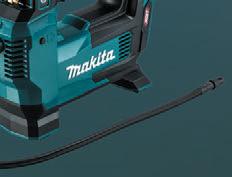




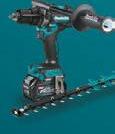



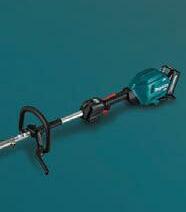













EST000926_A5_Landscape_OUTLINED_CMYK_100%.indd 1 16/03/2021 09:04 CLAIM A FREE PRODUCT CLAIM ONLINE NOW makitauk.com/redemption MR002GZ01 Bluetooth Radio Body Only ML003G 40V XGT Light Body Only MP001GZ 40V XGT Inflaer Body Only Claim a FREE MR002GZ01 or MP001GZ or ML003G with Selected XGT Machines Eligible Products: DK0114G202, DK0114G207, DK0172G201, DA001GD201, FN001GD201, GA005GD202, GA013GD202, GA023GD203, GA029GD202, GA004GD202, GA012GD202, GA022GD202, GA028GD202, HM001GD201, HP001GD202, HP002GD203, HR003GD203, HR004GD203, HR004GD204, HR004GD202, HR005GD201, HR007GD201, HS004GD203, JR001GD202, LS002GD203, LS003GD201, LS004GD201, RS001GD202, RS002GD201, SP001GD201, TD001GD209, TW001GD202, TW004GD203, TW007GD203, TW008GD202, AS001GD201, MP001GD101, VC001GLD21, VC003GLD21, VC002GLD21, VC004GLD21, VC005GLD21, CL001GD225, CL002GD206, HM002GD202, HR006GD202, UB001GD201, UH004GD202, UH005GD202, UH006GD202, UH007GD202, UH013GD201, UH014GD201, UR002GD201, UR003GD201, UR006GD201, UR008GD201, UX01GD201, DG001GD201. Claims can be registered on-line from 1st April 2022 and must be registered within 28 days of purchase for qualifying models. Qualifying models must be purchased by 30th September 2022 to qualify and registered within 28 days. FMJ.indd 1 04/04/2022 16:03
WORLD’S FIRST CARBON NEUTRAL HAND DRYERS LAUNCHED BY UK FIRM
British brand, Dryflow, has launched ten 100% carbon neutral electric hand dryers, as o icially verified by ClimatePartner.
The verification process saw each dryer meticulously analysed to measure the full extent of its lifetime’s emissions, from ‘cradle to grave’. This ensures everything, from the manufacture, transport, and end-of-life recyclability, to the day-to-day usage, is generating minimal emissions, and the co2 that is created is e ectively o set through recognisable projects.
The Dryflow range of dryers has been developed exclusively in partnership with Intelligent Facility Solutions, which has specialised in supplying sustainable hand dryers and washroom accessories to the commercial and educational sectors for the past 10 years. This is just another boost in the major cultural shi from disposable
paper towels to hand dryers, as organisations increasingly come to realise that energy-e icient dryers already provide 95% more carbon savings than paper alternatives - not to mention cost and mess reduction.
Andy Cameron, founder of Intelligent Facility Solutions, comments: “It has meant the world to us to work closely with Dryflow to launch the first-ever range of carbon-neutral hand dryers. Over the years, we have worked with thousands of organisations to improve their sustainable credentials by upgrading to energy-e icient units, and we’re delighted that we can now pass on even more carbon savings to our customers.
“ClimatePartner is recognised the world over for its contribution to climate action, and its stamp of approval is just another step in our mission to be a carbon-neutral company in our own right.”
Intelligent Facility Solutions has been dedicated to providing optimal sustainable washroom solutions since the company was founded in She ield in 2012.


As such, the business has recently banned airfreight to significantly reduce its carbon footprint and o ers long warranties and lifetime guarantees to keep commercial hand dryers in use for as long as possible.
www.intelligenthanddryers.com
It also runs its ‘Infinity Life’ project, which sees the firm reclaiming old hand dryers, to repair whole or use their parts, in order to donate reconditioned units to charity or put them back into circulation - and most importantly, keep them out of landfill.
The full range of Dryflow carbon-neutral hand dryers, verified by ClimatePartner and available exclusively through Intelligent Facility Solutions, includes Bulletdri, D-Flow, Dryflow Elite Mark II, G-Force Mark II, Jetforce Junior, JetDri Mark II, Turboforce Junior, Turboforce, Ecowave and Viper. All dryers are available in a variety of designs and finishes, and include features such as HEPA filters, Quiet Mark approval, and fast dry times.
KEVIN IRONS JOINS ARENA’S INDUSTRIAL & COMMERCIAL STRUCTURES DIVISION
Arena Group, an industry leader in the supply of temporary architecture and infrastructure, has appointed Kevin Irons as Sales Manager of its specialist Industrial and Commercial Venues division, April 2022.
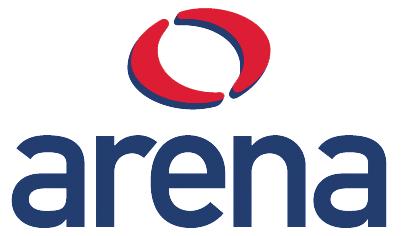

Kevin’s role will serve a growing demand in the civil engineering and construction, retail, leisure, and film & TV production industries for semi-permanent infrastructure.
With a career beginning in construction, he was instrumental in delivering major projects including multi-storey car parks, factories, warehouses, o ices and schools. A move into temporary structures in 2020 saw Kevin involved in projects that included port warehouses, wedding venues, sports halls, semi-permanent venues for welfare, canteens, locker areas for the likes of DHL, as well as medical facilities required during the pandemic.
Building on a string of successful projects, spanning a number of years including bespoke
TV studios, archaeological excavation sites and dedicated retail outlets, the division will focus on delivering flexible and customisable venue solutions across a range of applications.
Kevin states: “I’m thrilled to join this growth area of Arena’s global business. This is an expanding sector and I am looking forward to increasing Arena’s portfolio, based on great delivery of recent projects for clients, including Fockers and Balfour Beatty in construction, along with more creative venues for broadcasters.”


The division o ers clients a fully project managed service including design, installation, and Principal Contractor responsibilities on site, as well as a full maintenance package and a er sales support.

MONTH IN FM TO ADVERTISE IN MONTH IN FM PLEASE CONTACT DANNY.GRANGE@KPMMEDIA.CO.UK OR CALL 01322 476811 MAY 2022 60
www.arenagroup.com IMV@arenagroup.com 01480 468 888
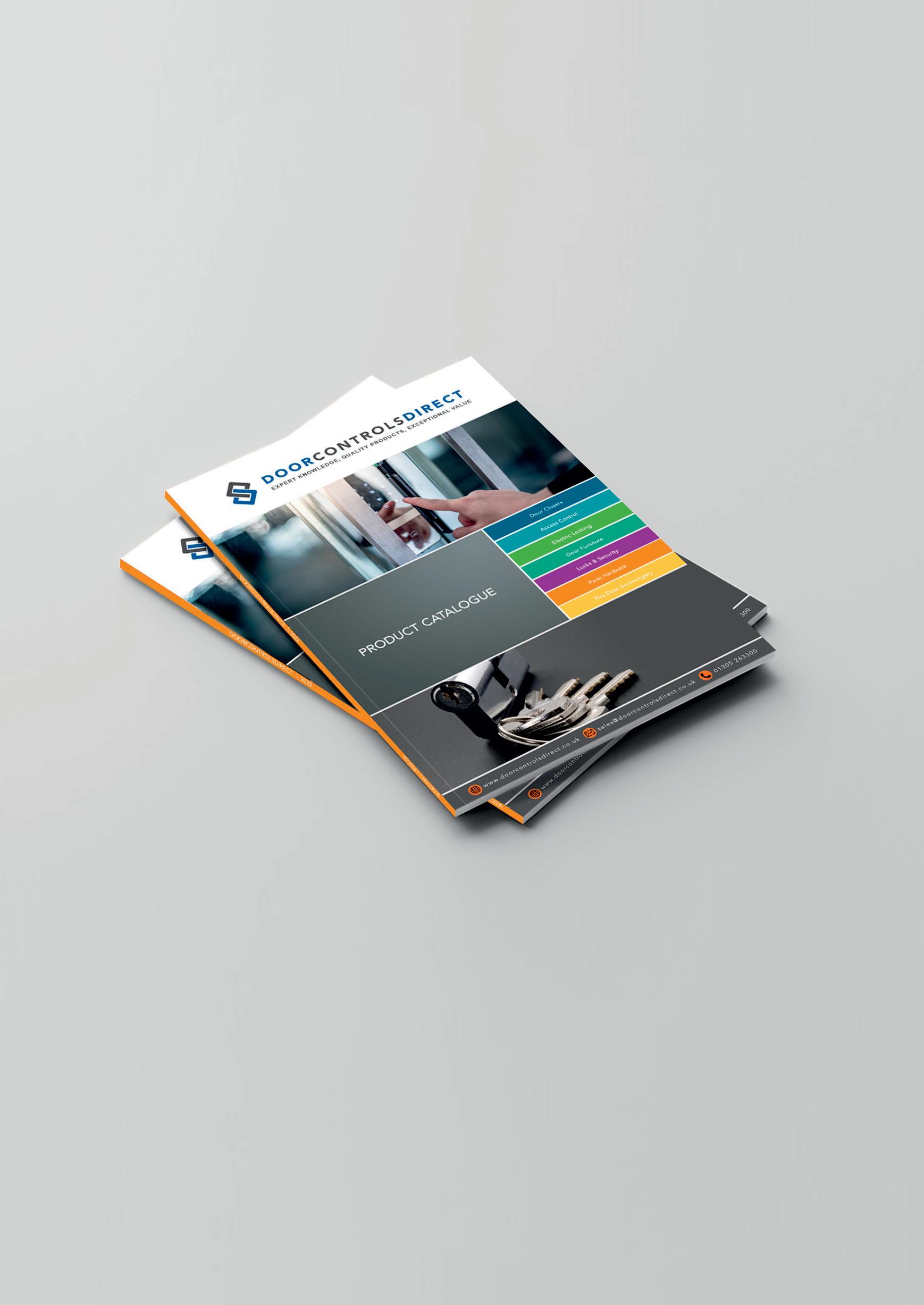
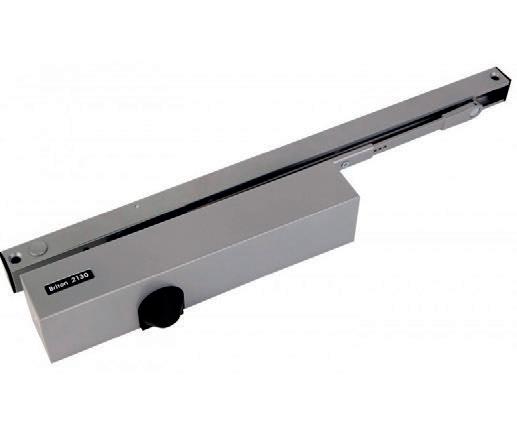



EXPERT KNOWLEDGE, QUALITY PRODUCTS, EXCEPTIONAL VALUE DOOR CONTROLS DIRECT COMING SOON OUR NEW PRODUCT CATALOGUE Pre-order your copy of our new product catalogue. Discover our extensive range of products available at your fingertips. Visit www.doorcontrolsdirect.co.uk to find out more or call 01305 263300
SNICKERS WORKWEAR LITEWORK TROUSERS –FOR COOL COMFORT THIS SUMMER
Long-lasting, innovative new fabrics for comfort, sustainability and longevity.
While Fabric, Functionality and Fit are hallmarks of Snickers Workwear, it’s the innovation and sustainable fabric technology in the design of the new LITEWork Work Trousers that really set them apart from other brands.

They’re great for working hard in the warmer months. Delivering superior flexibility and cooling comfort, these stretchable, lightweight work trousers provide e icient moisture transport, ventilation and sun protection.
They also come with CORDURA® reinforcements for extra durability and they feature a 4-way stretch fabrics, the patented Snickers Workwear KneeGuard® system and detatchable holster pockets if you need them.
As well as being street-smart they’re packed with functionality and are specially designed for the fast-paced professional who’s always on the go and delivering top class work on site.
www.snickersworkwear.co.uk sales@hultaforsgroup.co.uk 01484 854788
NEW MODULAR RETRACTABLE BARRIER SYSTEM
LAUNCHED BY SETON
A new retractable barrier system, named EasyExtend, has been launched into the market, o ering unique features and benefits for use in industrial and outdoor spaces.

Developed by the health and safety solutions provider Seton, the new and rugged unit is designed to cordon o areas in warehouses, factories, distribution centres and construction sites.
EasyExtend can span 10 metres meaning a more e icient use of resources. It can be used with standard tra ic cones, with its dedicated post and base system, or can be fixed directly onto walls or other surfaces.
The barrier can be used in three di erent ways. The modular post and base system gives the choice of using single or dual-level tapes, allowing the user to create a more imposing boundary if they choose to.
Once erected, the base portion features an integrated weight for stability. For extra sturdiness the user can tfill the base with an extra 12 litres of water or sand.
An adapter can also fix the tape cassette, or clip tape ends, to the top of any standard tra ic cone. This lets cones be used in place of posts, if needed.
The same barrier can cordon between fixed objects or walls, rather than needing the posts.

The EasyExtend also uniquely stores all the components of the barrier inside the base.
www.seton.co.uk/easyextend
ED WELLS EXPANDS ROLE TO REPRESENT BOTH COBA FLOORING AND C.A.T.
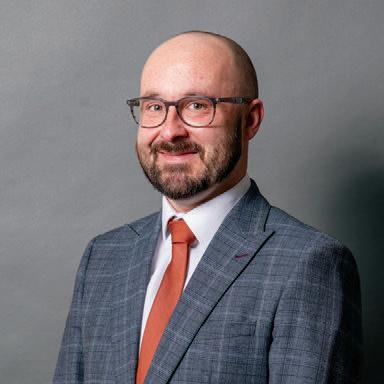
Following the acquisition of C.A.T. (Carpet Accessory Trims Ltd) by the COBA Group, Ed Wells now brings his industry experience to a wider group of customers
In December 2021, Ed Wells joined the COBA Flooring Account Management team to provide a newly expanded range of flooring products and accessories to businesses in his area.
Ed has several years’ experience representing C.A.T. and bringing its specialist designer trims to the construction sector in the UK and overseas. By adding COBA Flooring’s range of entrance matting systems to his portfolio, Ed can better serve his customers with a wider set of high-quality solutions, most of which are made here in the UK.
A recent project that demonstrates the practicality of bringing these two flooring brands together is the Birmingham Rep Theatre, which saw the installation of C.A.T.’s BN7 Satin Brass Nosings in addition to a bespoke Plan.a aluminium entrance mat constructed by COBA Flooring.
Similarly, Ed has been cooperating with both the architects and flooring contractors on the Shakespeare Theatre project in Prescot.
Ed covers the West Midlands, East Midlands, Northwest, Yorkshire & Humber, as well as the Northeast. He also manages the PE, MK, LU and SG postcodes in the East of England.
www.thecatweb.com
VIEGA RECEIVES SEAL OF APPROVAL FROM WATES GROUP
Viega has been awarded Wates Approved Innovation Partner status for its Megapress press connection technology.
The first initiative of its kind, the Wates Innovation Network (WIN) portal is an intelligent and interactive marketplace for advanced technologies, created by the Wates Group to help businesses ‘build back better’. By connecting companies and suppliers directly, it aims to create a network of innovative providers that can accelerate the transition to net zero, by showcasing smarter solutions for building design and construction.
In order to achieve Approved Product status, Viega’s Megapress technology underwent a vigorous approval process, which included pitching the solution’s benefits to a panel of Wates ‘Green Judges’. The scoring criteria focused on reliability, credibility, compliance, return on investment, impact on building users, scalability, savings and maintenance, with Megapress performing well across all of the key metrics.
Viega’s Megapress press connection technology has been specifically designed to connect thick-walled steel pipes, in diameters of 3/8 to 4 inches. Cold press technology holds a number of sustainable and practical advantages over comparable hot works methods, such as welding, which can pose a number of health and safety concerns to the installer, building users, and owners.
Another key advantage of Megapress, is the speed and reliability of installation that it o ers. When compared with welding, installations that use Megapress technology can be completed up to 80% faster, resulting in significant financial savings.
www.wates.co.uk/articles/innovation-partners/viega-megapress/




MONTH IN FM TO ADVERTISE IN MONTH IN FM PLEASE CONTACT DANNY.GRANGE@KPMMEDIA.CO.UK OR CALL 01322 476811 MAY 2022 62
www.cobaflooring.com ed.wells@cat-accs.com +44 (0)7923 253 399





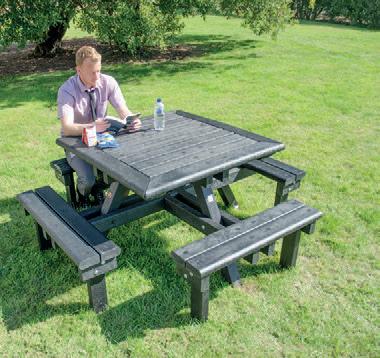
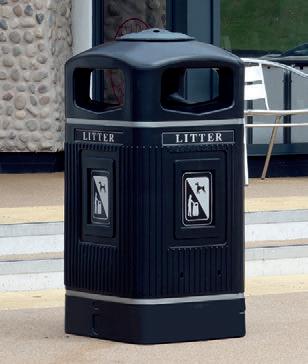







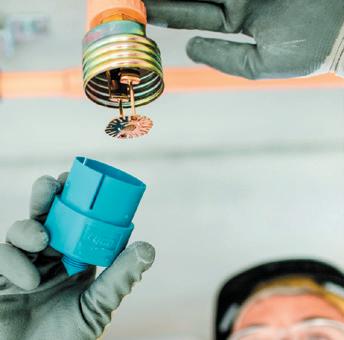
www.glasdon.com BEHIND EVERY SUCCESSFUL BUILDING… ptsg.co.uk | 01977 668771 | info@ptsg.co.uk | @ptsg_ltd …IS A PTSG SPECIALIST With 2,300 specialists working within five business divisions across 47 UK o ces, PTSG is the nation’s leading provider of specialist services to the construction and FM sectors. At the Hilton Brighton Metropole, built in 1890, we delivered a full refurbishment to the sprinkler system. We are proud to be a vital part of some truly outstanding buildings.. Photographer: Hassocks5489 Everyone wants to get what they paid for. Facilities Management Journal is independently verified by ABC, because we want our advertisers to know they’re getting the exposure they’ve been promised. ABC. See it. Believe it. Trust it. To advertise call Danny Grange on 07867 418994 BE WISE WHEN YOU ADVERTISE www.abc.org.uk
RIDGID STRUTSLAYR – THE NEW STANDARD IN CUTTING STRUT CHANNELS

Strut channels are used in a wide variety of applications like Plumbing, HVAC, Fire Protection, Electrical and Solar for structural support of pipes, ventilation/air-conditioning/ sprinkler systems as well as cable trays and solar panels. Before installing, each strut channel needs to be cut and deburred. This activity can be a very time-consuming task when it is done with traditional cutting tools like an angle grinder, cold cutting and recip saw. Depending on local regulations and job site conditions, the user may also need a hot work permit because of excessive spark generation during cutting, which can lead to downtime if the permit is not obtained in time, according to the plan.
For addressing all these pain points and o ering the user the fastest and safest cutting experience of Strut Channels, RIDGID has introduced the StrutSlayR Strut Shear Head. StrutSlayR is attached to a RIDGID Standard 32 kN Pressing Tool and delivers high quality, straight and burr-free cuts in 5 seconds or less. StrutSlayR o ers a shearing operation, where the material gets displaced, rather than directly cut;
because of the shearing operation, there are no grinding or sawing sparks and there is no hot work permit needed.
Features and specifications
Portability. StrutSlayR Head weighs only 5.4 kg and is supplied in a sturdy and compact blowmolded case for easy and safe transportation to any jobsite.
Size & wall-thickness. StrutSlayR features fieldreplaceable dies and it is supplied with either a 41x41 or 21x41 shearing die, covering the most


important two strut channels sizes. StrutSlayR can be used for cutting Strut Channels with wallthickness up to 2.5 mm. A minimum amount of 2000 cuts can be expected from each new die set.
Compatibility. StrutSlayR is compatible with the RIDGID Standard Series 32kN Press Tools, such as the RIDGID RP 350 and RP 351 Standard Pressing Tools. Approximately 140 cuts can be expected from a single full battery charge on e.g. RP 350 with StrutSlayR Head mounted.
Flexibility. StrutSlayR is highly versatile. It can be easily used on a workbench, on a RIDGID TRISTAND, on the ground or even on a platform. Accuracy. A built-in measuring guide is displayed on the StrutSlayR to accurately measure the size of the strut that needs to be cut. The integrated Strut Support prohibits deformation of the Strut channel and provides a straight cut every time.
Safety. As there are no grinding or sawing sparks involved during the cut, there’s no need for a hot work permit on the job site.
FMS CAN TAP INTO SUSTAINABLE HYDRATION SOLUTIONS VIA WHA MEMBERS
The hydration trade body, The Water Dispenser & Hydration Association (the WHA) is urging facilities and estates managers to ensure that, when procuring water dispensers, the shortlisted suppliers are members of the WHA.
The WHA’s general manager, Phillipa Atkinson-Clow, said: “As many o ice workers are getting back to the workplace, now is a good time for FMs to assess hydration needs. Whatever the requirement, the answer will be found via a member of the WHA. Hydration isn’t enough; it must be healthy, eco-friendly hydration.”
It is no longer acceptable endorse the use of single use bottles and in meeting sustainability goals, installing well-chosen water dispenser systems is a win-win.
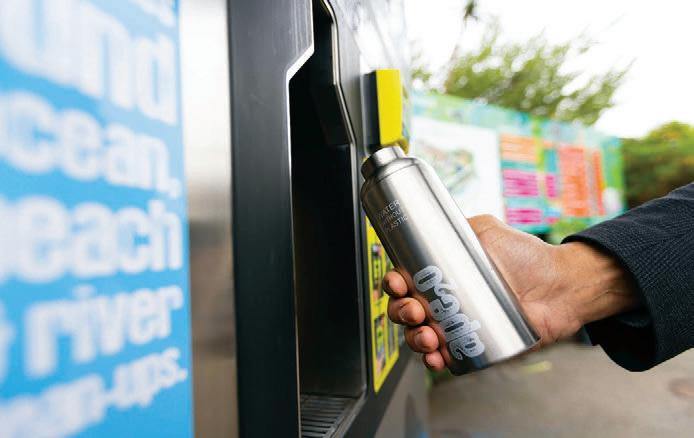
Insisting on WHA accreditation on tender documents means that FMs benefit from the expertise of those who are trained to make the correct
recommendations and to install dispensers correctly.
Water dispensers are available to suit a variety of needs. Where there is access to plumbing, mains-fed coolers may provide the best option. If there is no access to mains water, a bottled water cooler is best
and as containers are reused up to 40 times, they are environmentally friendly. Workplace kitchens for use by sta may benefit from integrated tap system. In public spaces, on-the-go water needs can be met with hydration stations such as those supplied by several WHA members installing free-standing machines o ering water refills at no or low cost. For home or hybrid workers, some companies install residential dispense systems to keep sta healthy.
WHA members carefully assess each type of need.
Jon Wicks, the WHA’s chairman, added: “Sustainability is at the heart of everything our industry does. Our strapline – ‘quality, trust, standards’ - represents all the elements FMs would wish to see. Delivering hydration sustainably is easy and cost-e ective if you choose a WHA member.”
Find a WHA member here. (https://twha.co.uk/ find-a-member/) https://twha.co.uk
MONTH IN FM TO ADVERTISE IN MONTH IN FM PLEASE CONTACT DANNY.GRANGE@KPMMEDIA.CO.UK OR CALL 01322 476811 MAY 2022 64
www.ridgid.eu/gb/en/press-tools www.youtube.com/watch?v=8VKrJFDrCHQ
On-the-go water refill stations o ered by WHA members
BRADFORD BASED FUEL STORAGE SOLUTIONS CELEBRATES 20TH ANNIVERSARY MILESTONE
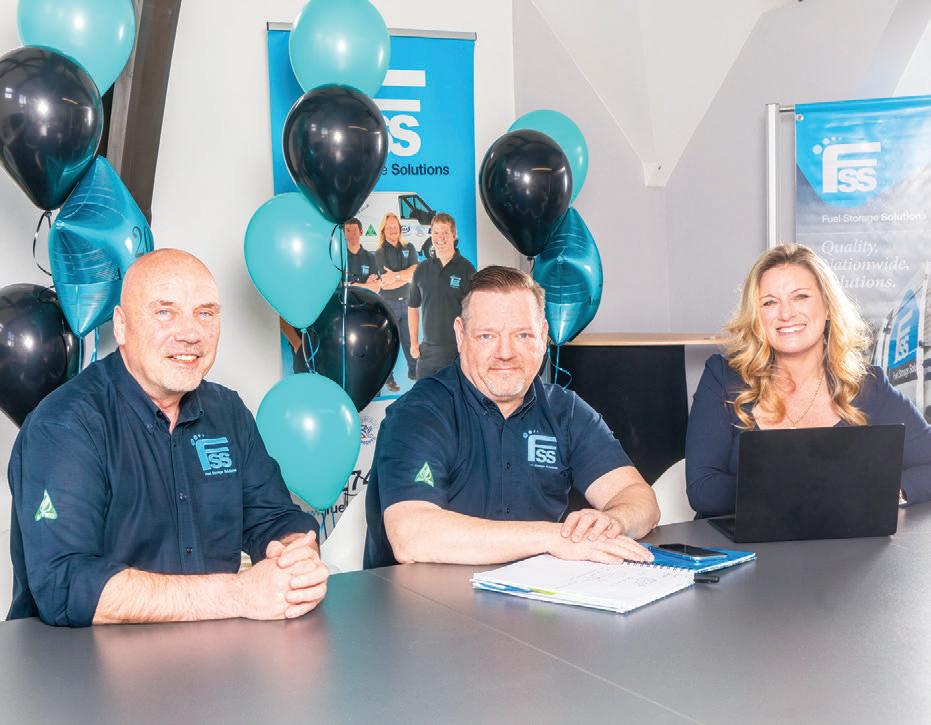
On 1st April 2002 husband and wife team Jonathan and Katharine Barnett realised their business dream by launching Fuel Storage Solutions (FSS) from their spare bedroom in Rastrick, Brighouse. Twenty years on FSS has grown into a £4.5m turnover operation employing 38 people. The company is headquartered in a former Methodist chapel in Thornton village which was fully restored and converted by the Barnetts to providing the platform for further growth aimed at achieving £10m turnover in the next 5 years.
Marking the occasion of the 20th Anniversary of FSS the Directors hosted a get together for the team which included members of their own family, previous employees, advisors and friends of the business. The sense of family, family values and teamwork are central to the daily operating principles of FSS.
FSS is an award- winning OFTEC registered provider of complete commercial and industrial fuel storage solutions, from supply to maintenance of tanks for oil, diesel and petrol, plus associated systems including pads, bunds, pipework and environmental controls for the safe storage of all fuel types.

Prior to starting FSS Jonathan worked as a Contracts Manager for a company that pressure tested and safety checked underground tanks for Shell, BP, Esso and Total retail sites, and Katharine was a Chartered Tax Advisor for Price Waterhouse Coopers in Leeds.
The first 18 months of the new venture were challenging; tenacity and patience paid o in 2003 when Jonathan managed to pick up a single visit to a site for a bank, then securing the contract and setting FSS on the path for growth. Testament to their expertise and their customer service ethic, FSS still looks a er that site as well as all the bank’s UK sites.
With a highly trained in-house Engineering Team, a dedicated Projects Division and a Compliance and Technical Services Division, FSS o ers innovative solutions to all sizes of works. Six of the UK’s largest Facilities Management companies are serviced by FSS, whilst other market sectors serviced range from Undertakers to the RAF, Banking to Distribution & Logistics, Food Prep to Pharma and public sector organisations including the Police, Ambulance Services and The Environment Agency. Important contracts for the Armed Forces and the NHS are also serviced.
The business has ambitious plans for future growth through the development of innovative products and methods to add value to clients including scaling up pipework installations for the transfer of fuel and other products using their patented APIApipe™ cold compression system.
FSS is currently developing their green initiative through the positive reduction of the firm’s carbon footprint. They are consistent donors of charitable funds to initiatives that align with the strong family ethos and values that pervade the business. They obtained the Bronze Armed Forces Covenant in 2020 and the Silver award in 2021 in recognition of the number of veterans that that they employ.


Katharine Barnett articulates the significance of the 20th anniversary milestone and an opportunity to say thank you to talented and dedicated colleagues.
“I cannot believe where the time has gone. Our journey has been bumpy and fun, scary and exciting but at the centre of it all and supporting us have
been all our colleagues. Every single person who has been part of the FSS family has contributed something that has taken us to the next level, taught us how to do (or not do) things, improved the company that we are, contributed to our growth and le an indelible mark.
“The people in the business are what make Fuel Storage Solutions the force that it is. They shape us, they drive us, and their loyalty and dedication push us to places we never thought we would go.
“On our 20th anniversary we thank you all, past and present, for accompanying us on this journey. We thank you for building a company that o ers us all a stable environment and, in doing so, creating a secure place that empowers all, is nurturing, where people are supported to grow and advance, and which provides everyone with a glowing future.
“I have a sense of immense pride and excitement as we start the next chapter at Fuel Storage Solutions. Thank you!”
MONTH IN FM MAY 2022 65 FMJ.CO.UK
www.fuelstoragesolutions.co.uk KB@fuelstoragesolutions.co.uk 01274 009104
(Le to right) Vince McCarry - Operations Director, Jonathan Barnett – Managing Director and Katharine Barnett – Finance Director (Vince McCarry joined FSS as Operations Manager in March 2017 and was made Operations Director in August 2020. Jonathan and Katharine are co-founders of Fuel Storage Solutions)
BE MORE SUSTAINABLE IN YOUR WORKPLACE
A greener o ice isn’t just a trend but a long-term change toward greater sustainability in the workplace. Many companies and authorities are already voluntarily choosing o ice designs that are environmentally friendly and save resources. Modern workplace solution expert DURABLE now o ers an ecologically sustainable range of desk accessories, made from 80% recycled materials. DURABLE’s production focuses on recycling in the sense of a responsible circular economy.
The NEW blue angel range is high-quality with a classic design that is intended to be used for many
years to come. This range is designed to recycle and repurpose existing plastic material and create new premium products for the workplace. From letter trays to magazine racks, catalogue stands, note boxes, pen holders, and desk mats, you're sure to find a product to suit you.

In addition to the recycled material, the durability of the new desk accessories also means greater sustainability. DURABLE uses a particularly highquality plastic that is tough and holds its shape well. The classic modern design of the products is a good fit for any interior. The sleek lines and functional design elements, like the wastebasket handles, are inspired by timelessly beautiful Scandinavian design classics. With this range, DURABLE once again clearly demonstrates its multiple-award-winning design expertise. The products are available in a choice of black, blue, and grey.
If we all make one small contribution, one step to lessening our environmental impact, and then promote that activity and encourage our colleagues, friends, and associates to do similar then we can make a positive change.
Shop sustainably with Durable UK without giving up style with this eye-catching, premium range that looks fantastic in any home or workplace setting.
www.durable-uk.com www.durable-uk.com/product-highlights/focused-products/blue-angel.html

2N FLAGSHIP INTERCOM WINS PRESTIGIOUS RED DOT DESIGN AWARD

The 2N® IP Style, 2N Telekomunikace’s flagship intercom for premium residential projects and o ice buildings, has won a Red Dot Design Award, one of the most prestigious awards available for product design. The decision was made by a panel of 50 design experts from all over the world who assessed each product individually.
The 2N® IP Style incorporates cutting-edge functionality in the form a full HD camera with wide dynamic range (WDR) and revolutionary WaveKey mobile access technology, all supercharged by the AXIS ARTPEC-7 processor, and was also developed to be the most stylish video intercom on the market.
The minimalistic design of the 2N® IP Style is built around two main elements: first, the horizontal bar at the top which shelters ‘invisible’ speakers and the best camera on the intercom market; and second, below it, a thin, 480 cm2 glass touchscreen. The touchscreen is unprecedented in the intercom market both for its size and for being completely without buttons. The glass is also IP65 and IK08 certified for durability and tested to endure heavy rain, a dusty environment or vandalism.
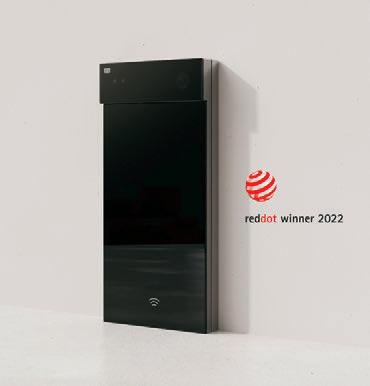
This is the second landmark award win for the 2N® IP Style, a er the intercom won a CE Pro BEST (Best Electronics Systems Technologies) Award at the CEDIA Expo in Indianapolis.
MAKITA PROVIDES THE CORDLESS POWER FOR CLEANING TASKS

Power tools manufacturer Makita UK has expanded its leading XGT 40VMax range with the launch of two new battery powered L-Class vacuum cleaners. Thanks to Makita’s unique XGT 40VMax cordless technology, the VC001GL (8-litre) and VC003GL (15-litre) o er cleaning professionals and FMs a selection of powerful cleaning solutions to make light work of any task.
With XGT 40VMax technology at their core, the VC001GL and VC003GL vacuum cleaners deliver impressive output that is equivalent to corded alternatives. The improved cooling e iciency of their design and inclusion of Makita’s brushless motor mean the VC001GL and VC003GL deliver the increased power and battery run times needed for professional use.
What’s more, both machines can house two XGT 40VMax batteries. This means that when the first battery runs out of charge, the second one automatically kicks in to keep the machines running for longer. To improve productivity further, the VC001GL and VC003GL have large tank capacities of 8litres and 15litres respectively, preventing the need to regularly down tools to empty the dust bag.
With numerous power options available, including ‘high power’ and ‘quiet’ modes, users can easily select the most appropriate setting for the application. The VC001GL and VC003GL can also be used for both wet and dry vacuum cleaning, providing professionals with a solution for every job. For wet vacuuming, the machines benefit from IPX-4 water resistance rating.
www.makitauk.com


MONTH IN FM TO ADVERTISE IN MONTH IN FM PLEASE CONTACT DANNY.GRANGE@KPMMEDIA.CO.UK OR CALL 01322 476811 MAY 2022 66
www.2N.cz
CHAS ANNOUNCES SINGLE COMPLIANCE SOLUTION TO MANAGE MULTIPLE SUPPLY-CHAIN RISKS





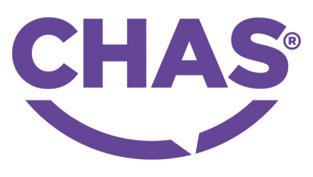

CHAS, the trusted name in supply chain risk management, has introduced CHAS Elite. This comprehensive compliance solution enables buyers and suppliers to demonstrate their regulatory compliance around health and safety, environmental issues, modern slavery, diversity, equality and inclusion, in a single product.
As supply chains become increasingly global and complex, the risk of compliance breaches is also on the rise. With CHAS Elite, buyers and suppliers can be assured that they are meeting the highest standards for health and safety, environmental protection, and social responsibility, with assessment against an increased range of associated risk categories. With an intuitive interface and easy-to-use tools, CHAS Elite makes it easy for organisations to identify and manage risks across their supply chain.
What's more, CHAS Elite is constantly updated with the latest changes in regulations, enabling organisations to identify potential risks early on and take steps to mitigate them before they become damaging or disruptive.

CHAS Managing Director, Ian McKinnon comments:

“We believe that CHAS Elite has the potential to transform how businesses approach supply chain risk management, enabling buyers and suppliers to demonstrate their compliance across a wider range of environmental, social and corporate governance regulations in a single platform.
“By providing a comprehensive view of supplier performance, CHAS Elite is helping organisations to drive continuous improvement and ensure that their supply chains are compliant, e icient and reliable, whilst also enabling our community of more than 32,000 contractors to show they take their risk management responsibilities seriously.”
CHAS Elite builds on CHAS’s 25-year history of making Great Britain safer. Since CHAS’s launch,
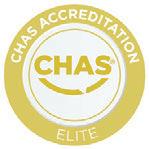
www.chas.co.uk
workplace fatalities have halved, and workplace accident rates have fallen by an estimated 220%. CHAS has also driven continual progress in supply chain management e iciency thanks to a commitment to promoting industry collaboration, including working with key industry bodies to develop standards, minimise duplication and reduce costs.
Ian McKinnon continues: “CHAS is once again setting the standard for supply chain risk management with a solution that helps businesses to identify risks early and take action to mitigate them, preventing disruptions and protecting their bottom line. Contact us today to join the many other industry-leading businesses taking advantage of CHAS’s free client services or find out how to become one of our trusted contractors to grow your business and your reputation.”
MONTH IN FM MAY 2022 67 FMJ.CO.UK
PYROGUARD LAUNCHES NEW TECHNICAL BROCHURE

Pyroguard, part of the Technical Fire Safety Group, has announced the publication of its all-new Technical Brochure, designed to serve as a comprehensive, one-stop guide to the manufacturer’s wide range of fire safety glass solutions.
The last twelve months have featured the exciting launch of several new products and systems - including Pyroguard Firesafe, Pyroguard Marine and Pyroguard Balustrades. As such, the new edition of the Technical Brochure has been updated to reflect all the latest technical, test and product data. With redesigned, easy-to-read product datasheets, customers can now clearly view the individual product’s reference code, a cross-section diagram indicating product composition and a list of its technical features, multi-functional capabilities and physical characteristics. The availability of this extensive information will enable customers to make more accurate specifications that meet stringent technical requirements.
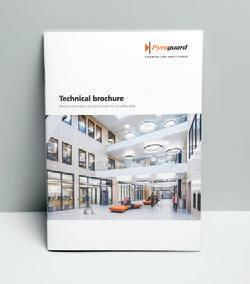
Given the emphasis on value and readability, Pyroguard’s latest Technical Brochure also benefits from a hyperlinked content menu, providing readers with quick and e icient access to the datasheet that they wish to view.

The brochure is available in English, French, Dutch and Spanish by request from the company’s website.
As the world’s leading independent provider of fire safety glass for timber, steel and aluminium applications, Pyroguard and its range of solutions have been helping architects, specifiers and installers to achieve safe and beautiful living and working spaces for over 30 years.
www.pyroguard.eu
HERAS LAUNCHES NEW AND UPGRADED SECURITY PRODUCTS

Heras has announced the launch of the new Delta sliding gate and a significant change to its flagship B700 turnstile as part of a plan to strengthen its core product range of permanent perimeter protection and entrance control solutions in the UK.
Heras, Europe’s leading end-to-end supplier of permanent and mobile perimeter protection solutions is targeting sales of both Delta and B700 to sites such as warehousing hubs, data centres, food processing and distribution centres, healthcare facilities, and manufacturing plants that need secure access points to their sites.
Delta sliding gates
Delta comes in two models and has opening widths ranging from 3 m to 9.5 m for single gates or 6 m to 19 m for the double-gate option. Its gate heights range from 1.8 m to 2.5 m, and it is one of the fastest sliding gates on the market at a rate of up to 0.5 m per second for each gate, providing a possible speed of 1 m per second on double gates.
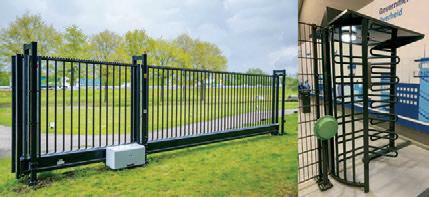
B700 turnstile
Key features of B700 include its canopy – which acts as a physical and visual deterrent at perimeter breach points – and its availability as a single 120° rotor spacing with a straight or trombone arm in a variety of finishes. Also, its operation and control features include a robust steel electro-mechanical head mechanism that has a number of security locking options.
www.heras.co.uk
IMPROVING MANAGEMENT CONTROL AND RECYCLING FOOD WASTE
What is the most sustainable food waste handling system?
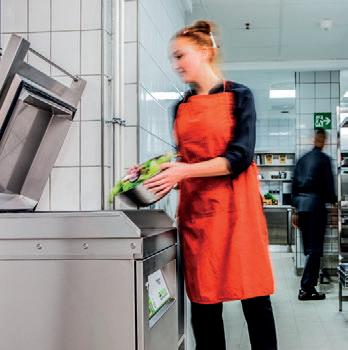
The BioMaster biomass system ticks all boxes:
1. Manufacturer Meiko is a foundation, not shareholder driven. Goals are longterm. Profit equals R&D and training.
2. Meiko was the first European foodservice manufacturer to commit to carbon neutrality (for our main O enburg factory) by 2025.
3. BioMaster shows our determination to improve sustainability. It is engineered to be ergonomic, dependable, long-lasting, and easily maintained; BioMaster could have a 30-year life!
4. It minimises water/energy use, saves labour, cuts double handling, and boosts hygiene. Fits seamlessly into kitchens and workflow.
5. UK government likes biomass because it provides long-term sustainability and energy in return.
6. BioMaster processes all typical food waste, kitchen oils and grease, liquids, prep waste and even fish skins and used flowers.
BioMaster sets the standard for our sustainable future.
www.meiko-uk.co.uk

HOW SWEDISH COMPANIES ARE PLANNING THEIR RETURN TO THE OFFICE

One of the questions on employees’ minds right now is how will my employer manage my return to the o ice? Companies in Sweden have now started this discussion. Flowscape, one of the leading smart o ice companies in Scandinavia, has interviewed their enterprise customers and here are some of their findings.
“If the future entails more remote working, it implies that the occupancy of desks will decrease, leaving parts of the o ice under-utilised. Three of the respondents were thinking about reducing their o ice space. But the focus seems to be more on optimising than just reducing o ice space. One respondent relied on sensors to obtain data on how their o ice space is being used to be sure they make the right decisions based on real utilisation. Some respondents also expect to see a trend towards shorter term-o ice leases.” - Flowscape Solutions.
www.flowscapesolutions.com
MONTH IN FM TO ADVERTISE IN MONTH IN FM PLEASE CONTACT DANNY.GRANGE@KPMMEDIA.CO.UK OR CALL 01322 476811 MAY 2022 68
KÄRCHER PROFESSIONAL PUTS PRODUCTIVITY AND EFFICIENCY CENTRE STAGE





As businesses look to optimise cleaning policies and procedures, productivity and e iciency targets will be top of the list. To support businesses of all sizes, Kärcher Professional end-to-end solutions enable facilities managers to meet and exceed targets by understanding and answering the individual needs of each cleaning operator and deliver tangible business benefits. Simply purchasing new machines will not provide results if the sta are not trained on how best to use them, where they should be used, and when they should be used.

To help facilities managers extract the most from their machines Kärcher has focused on three main areas: reliability, cost-e ectiveness, and service. Combined, these three elements ensure that Kärcher is the go-to supplier for facilities managers looking to boost productivity, increase cleaning e iciency, and maximise overall cleaning performance.
Kärcher’s range of robust, durable, and reliable machines have been designed to run 24/7 to support facilities managers in every stage of their clean whilst meeting the demands of heavy use. Ensuring that machines are kept functioning is crucial to reducing downtime. Real time reporting
and diagnostics can be run on Kärcher machines across multiple sites, so facilities managers always have a clear understanding of the status of their fleet.
Kärcher’s triage service is another high-level o ering that keeps operations running smoothly. Manned by trained engineers, the helpdesk can o en diagnose any issues remotely so if there are easy fixes, they can guide customers to carry out the fix themselves.
If an in-person visit is required, Kärcher’s engineers will already have an idea of the issue, resulting in a faster fix which saves time and money. Kärcher has the widest selection of spare parts, curated from multiple insights, and its inventory is housed at nationwide locations meaning Kärcher can get the parts to businesses quickly to minimise disruption. With an 85% first time fix rate, Kärcher’s machines and support services always have customer needs in mind. Kärcher’s engineers are not targeted on the number of parts sold but on the speed of the fix, so they will not sell unnecessary spare parts and operate at the highest level.
To help bring down the costs but maximise performance, Kärcher has used its industry leading technology to develop productive, user-friendly
machines. Functions such as easy!operation, enable cleaners to swi ly get to grips with di erent equipment. The machines can be set to distinctive cleaning modes enabling multiple sta members to use the same item to achieve the same level of clean. Alongside this, the Kärcher Intelligent Key (KIK) system enables facilities managers to lock machines into unique set-ups, perfect for use on uneven or unusual cleaning spaces.
For businesses without the means to purchase a fleet of cleaning machines outright, Kärcher’s unique Kärcher Hire service enables users to gain access its market-leading machines. The team at Kärcher Hire works with cleaning providers to understand individual needs to ensure deployment of the right equipment to deliver Kärcher’s superior cleaning power and quality. 90% of the machines available through Kärcher Hire are less than five years old, ensuring facilities managers get access to the latest in cleaning technology.
Further supporting facilities managers to ensure they get the most out of their machines, the Kärcher Academy is on hand to train sta to utilise the machines to their full potential. The Kärcher Academy delivers market-leading training courses, held both in person at its Banbury facility and virtually, to o er sta hands-on training as part of a continual learning process that will boost productivity and cleaning e iciency.
Whatever the individual cleaning needs may be, Kärcher has the scale to provide an unparalleled level of support with the ability to deliver over 21,500 service call outs every year along with innovative cleaning technology enabling facilities managers to deliver the best results.
When cleaning matters, Kärcher Professional delivers.
MONTH IN FM MAY 2022 69 FMJ.CO.UK
https://www.kaercher.com/uk/professional.html 01295 752 082
EYE-CATCHING ECOARC RECYCLING STATION
Leafield Environmental, the UK’s award-winning designer and manufacturer of litter and recycling bins have launched a new external recycling bin, the ‘EcoArc’ o ering an eye-catching and compact unit to encourage people to recycle ‘on-thego’. The EcoArc was initially designed for a retail forecourt environment, but is also suitable for shopping centres, leisure centres, high-streets, parks, beaches and schools.
The EcoArc recycling bin can be used in groups as part of a recycling station, side by side or back-to-back. The slimline curved design has a dimpled hood surface for anti-fly poster and rainwater drainage. The unit features space for two optional A2 poster frames on each side and an optional A4 signage kit to promote key messages.
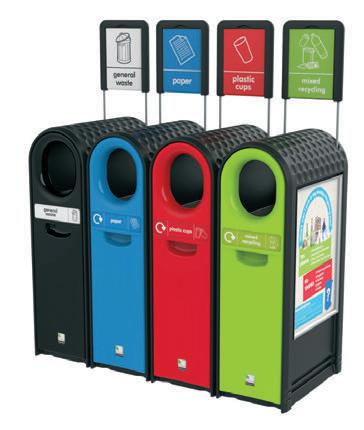
The standard black base is made from 100% recycled material (subject to availability) and can feature optional traditional banding. The unit can hold up to 80-litres of waste with an optional steel or plastic liner.
The double-sided oval aperture can accommodate a 4-litre washer bottle. The moulded double skin pull-out door has been designed for added strength and durability and has an integral moulded handle for ease of opening on one side. The door has a smooth surface allowing an optional recycling label to be applied to identify the type of waste collected. The standard pull-out door and recycling label will be in WRAP compliant colours.
www.leafield-environmental.com


WATERBLADE IS NOW BEING SPECIFIED FOR PROJECTS INVOLVING NEW TAPS AS WELL AS BEING RETRO-FITTED
Our prompt response to any enquiries, ‘Can I fit a Waterblade to an Armitage Shanks Avon 21?’ for example, have helped immensely.
We believe Waterblade provides the best handwashing with the lowest flow. The Water and Waterheating savings are significant and it pays for its self in under six months.
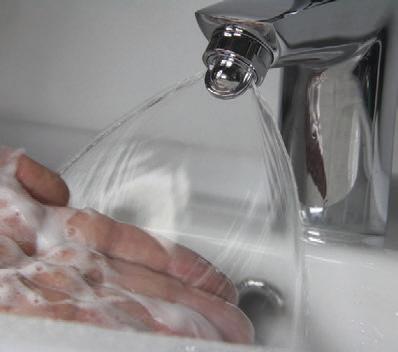
It is easy to try one out for your own project or building.
Simply request a free sample, fit it in minutes confirming compatibility and functionality.
You can then show it to stakeholders and verify the savings of a whole building rollout.
www.thewaterblade.com
nigel@thewaterblade.com
WASTE MANAGEMENT
Leading impartial waste and sustainability comparison platform, WasteQuoteSupermarket, appoints Chris Gee, former Head of So ware at business services switching provider, Verastar, to reinvent how businesses access and compare their second-largest utility expense a er energy.

PLATFORM SET TO
DISRUPT THE B2B COMPARISON MARKET
New CTO, Gee, will apply decades of experience in defining strong technical growth strategies to develop the WasteQuoteSupermarket platform, enabling FM managers to access the very best waste, recycling and carbon reduction deals.

The pioneering data-driven platform partners with waste service providers to provide instant comparisons on business waste services including trade, commercial and industrial services, recycling, shredding, skips, bulky waste, hazardous, WEEE, clinical waste, and washroom services. It directly matches the two parties together through the company’s bespoke AI virtual waste expert, a key USP that will shortly be able to showcase a full array of deals to improve resource e iciency and provide measurable solutions to form part of a business’s ESG-friendly policies.
www.wastequotesupermarket.com
2N UPGRADES ANSWERING UNIT INTO A SURVEILLANCE DEVICE AND HOME AUTOMATION CONTROL PANEL
2N, the global market leader in internet-enabled intercoms and access control systems, has updated the firmware of the 2N® Indoor View, the company’s answering unit for high-end residential projects, to turn it both into a surveillance device and a control panel for complex home automation systems. The upgrade is designed to meet the changing requirements of people living in luxury properties all over the world.
2N’s new firmware is a response to that demand, enhancing the 2N® Indoor View in three ways:
1. Up to four IP cameras can now be connected to the answering unit: These IP cameras do not even need to be connected to the intercom – they only need to be in the same local network as the answering unit.

2. Photos are taken from each intercom call – including missed calls. The 2N® Indoor View now automatically captures snapshots from each call and adds them to the call log. The unit takes more than one picture in case the person at the door has turned sideways or had their hand in front of the camera at the key moment.
3. The unit can act as the home automation control panel: HTTP commands can now be sent from the 2N® Indoor View, meaning that it is possible to control home automation functions – such as turning on the lights, opening the blinds and calling the li .

https://www.2n.com/en_GB/

MONTH IN FM TO ADVERTISE IN MONTH IN FM PLEASE CONTACT
OR CALL 01322 476811 MAY 2022 70
DANNY.GRANGE@KPMMEDIA.CO.UK
COMPASS PROPELS
SOCIAL
VALUE AGENDA WITH NEW HIRE
Compass Group UK & Ireland has appointed Laura Neville as Head of Social Value.

With a focus on employees, clients and communities, Neville will develop and deliver social value, in line with the National TOMS social value framework. She will support the company’s ‘Our Climate Promise’, social mobility and health and wellbeing strategies, as well as measuring the impact of initiatives to inform future programmes and best practice. Neville will also guide Compass’ clients to be at the forefront in understanding social value and what it can bring to their organisation, achieving their goals, aligning strategies and implementation.
Neville has a background in procurement and led the social value agenda for Compass’ procurement division, Foodbuy, from 2018. In 2020, she became Compass Group PLC’s Global Responsible Sourcing Lead and has now returned to the UK&I division to lead the social value agenda.
SENIOR APPOINTMENT AT INCENTIVE QAS TO SUPPORT GROWTH STRATEGY


Bryan Haley has been appointed to the role of Business Development Manager at Incentive QAS to further support the ongoing development of the commercial cleaning specialist following its growth over recent years.

Haley will be supporting the commercial team with all new business development opportunities, as well as the delivery of the Incentive QAS sales strategy. He will assist with all lead generation, and act as bid manager for all new business opportunities. The role also includes ownership of the company CRM system and Incentive QAS tender platforms.
Haley joins Incentive QAS from GSF, where he has gained 13 years of industry experience in a variety of roles. In the last few years, he headed up business development on a national level prior to his move.

BIDVEST NOONAN APPOINTS MD FOR ITS LONDON SECURITY BUSINESS


Liz Cummins has been appointed to the role of Managing Director for Bidvest Noonan’s London Security Solutions business unit.
The business unit was launched in February of this year following a period of robust growth, which saw its security and front of house businesses cement leadership positions in London.




As MD, Cummins will lead the growth and development of the new business unit and join Bidvest Noonan’s executive team. Cummins has a history of success delivering security and front of house services in London and over 10 years of senior leadership experience in the facilities services industry.
Cummins said: “I’m delighted to join Bidvest Noonan and to lead our new London Security Solutions business unit. I joined Bidvest Noonan because I recognised that it is a business that puts people first. Our teams and clients are at the core of all our decisions. In this industry, people make all the di erence. I’m looking forward to empowering our people to do their best work and achieve their professional objectives. Together, we will challenge conventions, design innovative solutions and work hard to deliver the best service and value to our clients.”
FACILITIES MANAGEMENT JOURNAL JOBS
www.buildrec.com info@buildrec.com Ifyouarelookingtogrowyourfacilitiesteamacrosssoftservices,engineeringorfacilities management,ourFMrecruitmentteamhavearapidlyexpandingnetworkofjobseekersavailablefor temporary,permanentorcontractvacancies. YOUR FACILITIES SECTOR RECRUITMENT PARTNER Formoreinformationabouthowwecanhelpyourorganisation,pleasevisitbuildrec.comorcontactthe FacilitiesManagementteamon02031764793 TOTAL FACILITIES MANAGEMENT | ENGINEERING | MAINTENANCE Weunderstandtheimportanceoffacilitiesmanagementandthosethatworkwithin it.That’swhyweplacesuchemphasisonconnectingleadingFMprofessionalswith topemployers. MAY 2022 71 FMJ.CO.UK FM CAREERS - PEOPLE
INCLUSIVE VALUES
Steve Butler, CEO of Punter Southall Aspire and author of Inclusive Culture: Leading Change Across Organisations and Industries o ers some personal advice on creating a diverse and inclusive workplace

The business argument for greater diversity and inclusion in the workplace is simply this: the more ways in which you can look at a problem, the better chance you have of solving it. Added to that is the fact that every business should reflect the clients and customers it serves if it really wants to understand and connect with them.
Making sure that the business I manage is indeed reflective of society hasn’t always been easy. It has meant radically adjusting the lens through which I see the world. At times, I have struggled to find the right words to use with sta from minority groups. I have had to find ways to encourage my teams to change the way they work and persuade people in my business that the e ort is worth it.
FEMALE REPRESENTATION
Our most significant strategic issue was the underrepresentation of female employees in the leadership structure to avoid the risk of groupthink. To address this, we replaced the existing executive committee of eight senior male managers with seven operational committees that included representatives from across the business. This led to more diverse, multigenerational teams contributing to the
leadership and business strategy, and participation from women at strategy-level committee meetings increased from 0 per cent to 38 per cent. Women taking part in the new style of management meetings say that having their voices heard and valued has opened a door. Many have fed back that being involved in these meetings has increased their confidence and participating in decision-making has broadened their horizons.
down reserve and sets the tone for the meeting; then, when you reach the business section, people are much more transparent and responsive, and the meeting is far more productive. It also creates better understanding of what other pressures people in the team are dealing with in their lives.
This can reduce disagreements and tensions, heading potential ri s o at the pass. Knowing what issues they are facing also gives insights into how to manage individuals in that team. It has improved team communication and increased openness and understanding. Critically, it has broken down the macho approach that’s so common in finance businesses, where sales and profit are the beginning, middle and end of meetings.
MENTORING
FACILITIES
Salary: £32k - 38k per year
Location: Middlesbrough https://bit.ly/3vtZtfV
ESTATES MANAGER
Salary: £45k - 52k per year +
Location: Torpoint https://bit.ly/3KuZAfo
Salary: £50k - 55k per year
Location: London https://bit.ly/3kmXV0H
Lindsay Butterworth, Associate Director, Strategic Planning commented: “I was thrilled when Steve established the Operating Committees, taking a leap forward in gender diversity within the business. Since becoming part of the operating committee, I’ve gained a greater insight into the business, allowing me to contribute confidently to the business strategy and decision-making. Already, I’m seeing huge benefits to the company of allowing a broader involvement and diversity in the management structure.”
Added Sarah Tolson, Director of Marketing: “Becoming part of the Operating Committee has broadened my understanding of the business and the challenges faced by colleagues in di erent roles; I can take this back to my team. On a personal level, I enjoy taking the meetings and feel my point of view is always valued.”
PERSONAL INSIGHTS
The style of management meetings has changed too. They begin with a sign in where each attendee takes a minute or two to update the others on what’s happening in their life, particularly their personal development and wellbeing. Although there was some hesitance at first, everyone has fully embraced the approach, not least because it signals that our priority as a business is the welfare of our people. Starting the meeting with a personal reflection breaks
We have embraced reverse mentoring: when the mentee is the older or more senior person in the pair, and the mentor is the younger or more junior person. Reverse mentoring can be challenging, and some of the first few meetings can be uncomfortable or even awkward. The senior manager may struggle with taking advice from someone who is in a more junior role in the organisation; a more junior employee may not feel comfortable with being transparent about their concerns and priorities or with challenging the thinking of someone who could hinder their career. The most important factor that will shape these meetings in the positive manner intended is mutual respect. Having respect for one another is a hallmark of a mentoring relationship, no matter who the mentee or mentor are. Respect for one another will show up in how the pair speak to one another, listen to one another, treat one another, and treat their relationship. With respect, comes trust. When mentees and mentors believe the best in someone and know they are open to giving or receiving feedback, open to learning from or teaching something to their partner, and acting with the best intentions, they build trust in them. This trust may not come easily, but it is essential for a mentoring relationship to work.
Making these changes has not been easy and there is still plenty of work to do, but actions have been generally positive, well-received, and importantly progressive. By taking a focused approach to lead and manage diversity and inclusion within the business, the outcome has been far reaching.
FACILITIES MANAGEMENT JOURNAL JOBS
LATEST JOBS ON FMJ
MANAGER
SENIOR FACILITIES MANAGER
jobs.fmj.co.uk Over 250 jobs live on site FM CAREERS
RECRUITMENT MAY 2022 72
-
ENERGISING SKILLS
term savings.
Liam Doughty, from Gateshead, previously worked in FM before starting a new role as an Energy Technician within Gateshead Council. Doughty did not have any previous background within the energy industry, so he took up the Junior Energy Management apprenticeship opportunity, a move that he is now reaping the benefits from. Doughty said: “The qualification has provided me with a massive opportunity allowing me to not only progress with my knowledge and skills in the energy industry but help me move forward in my career. The training has provided me with a foundation to start within the energy industry, allowing me to then further my education in this field.”
EVOLVING TECHNOLOGIES
Maintaining a tight grasp on energy e iciency is crucial for organisations in both the short-term and long-term. There is the significant challenge of the UK’s netzero carbon by 2050 target looming on the horizon, and if we are to achieve this then we must continue to address the well-documented statistic that buildings account for over 40 per cent of the global energy consumption with commercial premises accounting for more than half of that figure.
EMPLOYMENT PROSPECTS
It’s also perhaps not surprising that the pandemic has had a disproportionate e ect on young people and their employment opportunities with global youth employment dropping by 8.7 per cent last year. On top of this, many people of varying ages have experienced
serious disruption to their training or education while embarking on a new career, stymying their progression and fostering feelings of uncertainty over future prospects.
However, while there is still some way to go, there are now signs that the economic recovery is gathering pace and organisations are once again looking towards the future and bringing through the next generation of skilled workers. The introduction of higher apprenticeships has boosted take-up amongst qualified individuals who recognise the ever-expanding range of opportunities to learn vital occupational skills and acquire industry recognised qualifications that will put them firmly on the path towards a fulfilling and rewarding career.
For employers, taking on an apprentice should be viewed as an investment
in the future of the organisation – an ideal opportunity to address skills gaps, upskill the workforce and prepare for the challenges and opportunities that may lie ahead. Investing in a workforce helps to retain talent and apprentices gain the all-important skills and knowledge needed to drive businesses forward, taking on the values of the company and contributing to the development of a confident, dynamic workforce with future-ready skills. Businesses that have previously taken on apprentices recognise the value they can o er and the swi return on investment that can be achieved.
APPRENTICESHIP PROGRAMME
Modern legislation and environmental targets have made good building management a priority and Group Horizon’s Junior Energy Manager apprenticeship programme has been designed to help organisations meet sustainability commitments by reducing energy consumption and reducing costs, as well as contributing towards the UK’s target of net zero carbon by 2050. Due to the rise of the cost of energy the UK will become one of the most competitive market places for energy management skills over the next five to seven years. With a major shortage of trained energy managers, this apprenticeship will help to address the need for basic in-house energy management skills which can benefit organisations and lead to long

Next generation of Building Controls Engineers will also be key drivers in evolving technologies. As the world strives to reduce its carbon footprint, the importance of e icient building management continues to grow, and one of the results of this is that the technology that goes into buildings, such as Building Energy Management Systems (BEMS), whether new-build or retrofit, is becoming more advanced than ever. Consequently, there is now a huge demand for trained and qualified engineers to install this technology.
For anyone looking to embark on a career as a BEMS Controls Engineer, Group Horizon now o ers a three-year technical training programme. The BEMS Controls Engineer Apprenticeship has been designed to address an industry-wide shortage of BEMS Controls Engineers and includes a series of classroom and/or online sessions covering the technical theory which is included in the BCIA technical course modules BCM00 – BCM15.
Zach Stanley, an apprentice with Kendra Energy, said: “The hours of learning are in my hands and I can control it. I am able to attend site with another engineer each day and learn a di erent skill or di erent part of the system and it is amazing that I am able to have a job and learn at the same time.”
There is clearly plenty of momentum behind the apprenticeship movement and whether you are looking to take on an apprentice or to start an apprenticeship yourself, there are plenty of opportunities to get involved.

FM CAREERS - TRAINING MAY 2022 73
FACILITIES MANAGEMENT JOURNAL JOBS
Peter
Behan, Director
of Group Horizon, discusses
the importance of o ering training and apprenticeships to help meet demand for skilled engineers
BESA praises upgraded senior technician apprenticeship

The Building Engineering Services Association (BESA) believes a newly updated and better financed Level 4 apprenticeship for senior technicians will play an influential role in raising professional standards across the building services sector.

The Minister for Apprenticeships and the Institute for Apprenticeships and Technical Education (IFATE) have unveiled the revised building services engineering qualification with each apprentice supported by an increased level of £13,000 in government funding.
Willmott Dixon marks employability initiative milestone
Willmott Dixon’s focus on supporting local upskilling has reached a major milestone with Birmingham Year 8 pupil Miki Lin becoming the 1,000th person to complete its enrichment programme to equip young people with key skills to succeed in the workplace.
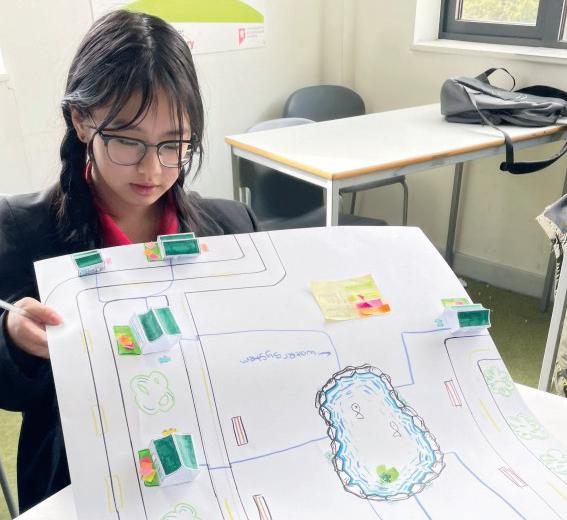
Since the enrichment programme was established in 2016, the company has delivered it across 25 schools, with students benefiting from more than 600,000 hours of learning provided by Willmott Dixon people.
The six-week programme, aimed at pupils between Years 7 and 10, enables them to get involved in a wide range of construction and employability-related activities. It allows young people like Miki to receive first-hand insight from the Willmott Dixon team about a range of operational, design, digital and customer-focused roles.
Workplace not a ‘safe space’ to reveal mental health issues
One in six UK employees feel worried that raising mental health concerns with their company could put them at risk of losing their job, and 86 per cent believe that their workplace is not a safe space for employees to be open about mental health, a new report into employee mental health and remote working has found.
Over the last 12 months, two in three employees have experienced worse mental health at work, compared to the previous year. As remote and hybrid working environments continue to be adopted by more UK businesses, evidence suggests that companies have struggled to adapt their mental health support processes. One in three employees feel less able to raise mental health concerns during remote meetings, o en causing any issues to go unnoticed.
Full report available here: https://bit.ly/3kkKjmy
Home and hybrid working increases productivity, suggests new CIPD research
The number of employers who report that an increase in homeworking has increased their organisation’s productivity or e iciency has jumped significantly over the last year, according to new research from the CIPD.

When asked in December 2020, a third (33 per cent) of employers said homeworking had increased their organisation’s productivity or e iciency.
Under a fi h (18 per cent) of employers say it has decreased productivity, compared to 23 per cent who previously said the rise in homeworking had decreased
productivity.
However, despite the reported productivity improvements associated with home and hybrid working, there is a potential mismatch emerging between the way organisations want their employees to work and how their people want to work. One in four (25 per cent) employers want their employees to be in the o ice/ on site all the time, while 39 per cent of employees would like to work from home all or most of the time going forward.
One reason for this mismatch is likely to be
EMCOR UK accelerates Real Living Wage deployment
because a majority (63 per cent) of employees who can work in a hybrid way still haven’t been asked about their future working preferences.
Claire McCartney, Senior Policy Adviser for Resourcing and Inclusion at the CIPD, commented: “Everyone should have the chance to benefit from more choice about when, where and how they work. This can lead to increased wellbeing and engagement, and enhanced performance, all of which can lead to the productivity gains many employers are reporting.”
From 1 April 2022, all EMCOR UK employees are earning the Real Living Wage or above to help ease the impact of the recent increase in the cost of living. Accredited as a Living Wage Foundation Recognised Service Provider in May 2021 EMCOR committed to pay the Real Living Wage to its employees that worked in facilities leased to and occupied by the company; to promote the adoption of the Real Living Wage to existing and potential customers and supply chain partners; and to submit a separately costed Living Wage bid where possible.
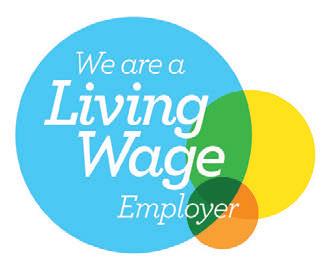
Its ultimate aim was to pay all its 4,170 employees the Real Living Wage or above within two years of becoming a Recognised Service Provider, but over the last year a number of internal strategies accelerated the implementation of the Real Living Wage for all employees, transitioned existing customer accounts to the Real Living Wage and included Real Living Wage options in all its tenders.
Keith Chanter, CEO of EMCOR UK, said: “We are extremely proud that we are now paying all our employees the Real Living Wage or above and that we have achieved this within a year of becoming a Living Wage Foundation Recognised Service Provider. This really is an outstanding achievement which supports our ambition to create a better world at work and to help our employees live more comfortably, especially at a time when the cost of living has significantly increased.”
FM CAREERS - NEWS FACILITIES MANAGEMENT JOURNAL JOBS
MAY 2022 74
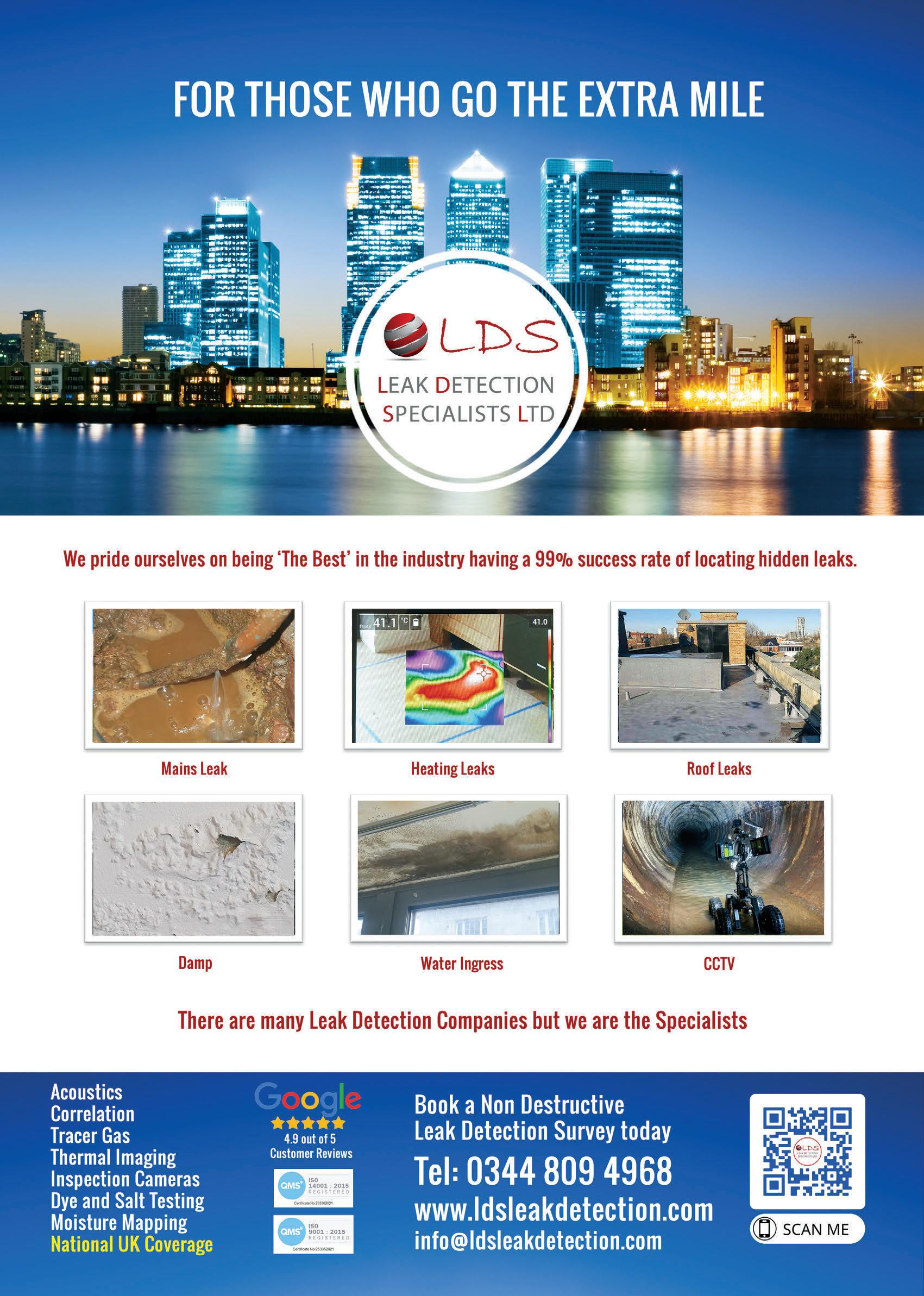
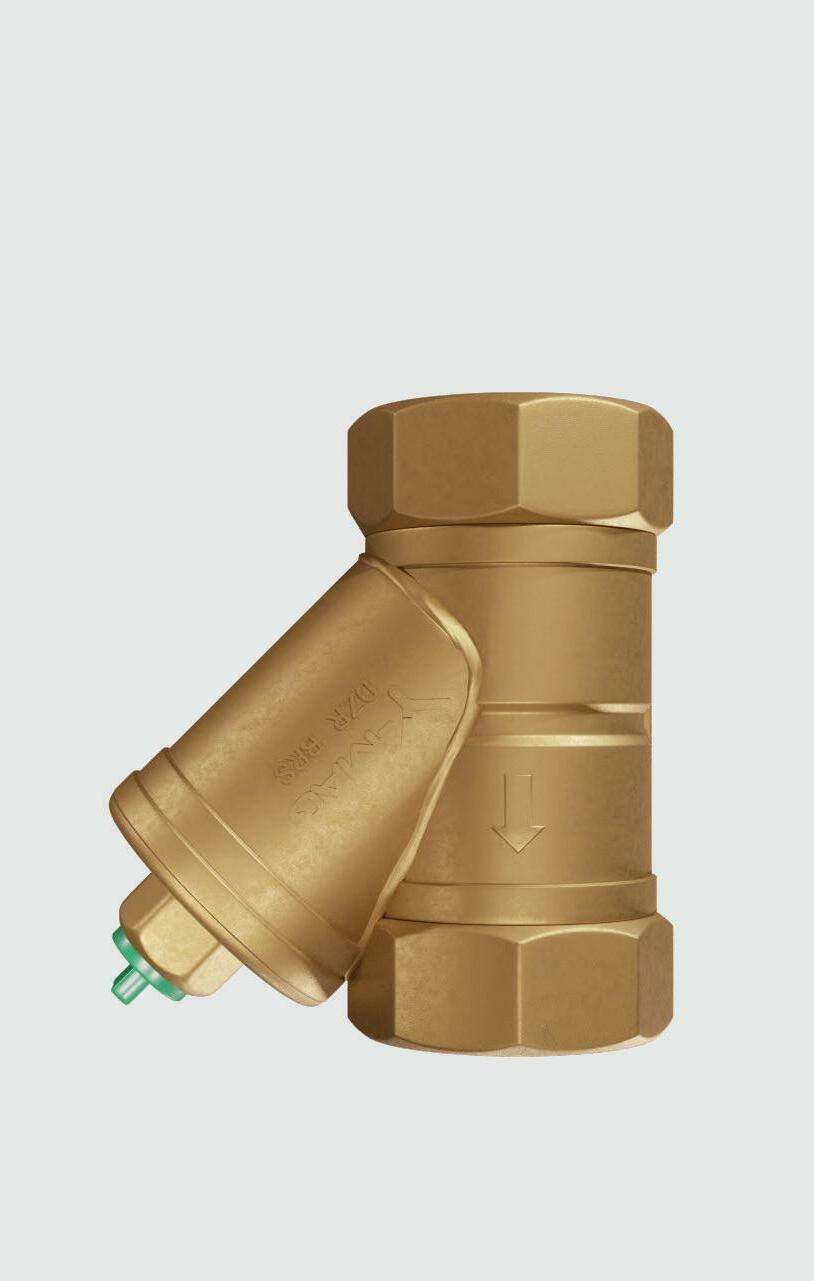

MAGNETIC FILTER AVAILABLE FEBRUARY 2022 HIGH CO2 AND ENERGY USE HIGH CO2 AND ENERGY USE DECREASED PERFORMANCE DECREASED PERFORMANCE ENHANCED PUMP PROTECTION ENHANCED PUMP PROTECTION ENHANCED PUMP PROTECTION IMPROVED WATER QUALITY IMPROVED WATER QUALITY IMPROVED WATER QUALITY SIMPLE MAINTENANCE SIMPLE MAINTENANCE SIMPLE MAINTENANCE IMPROVED PERFORMANCE IMPROVED PERFORMANCE LOWER CO2 USE LOWER CO2 USE LOWER CO2 USE LOWER ENERGY USE LOWER ENERGY USE LOWER ENERGY USE DECREASED PERFORMANCE THERMAL DISCOMFORT THERMAL DISCOMFORT SYSTEM DAMAGE SYSTEM DAMAGE POOR WATER QUALITY POOR WATER QUALITY Y-MAG INTERVENTION


































































































































































































 BY KÄRCHER PROFESSIONAL*
BY KÄRCHER PROFESSIONAL*







 GUY BATTLE, CEO, SOCIAL VALUE PORTAL
GUY BATTLE, CEO, SOCIAL VALUE PORTAL



















 JAMES BRADLEY, COO AT CHURCHILL GROUP
JAMES BRADLEY, COO AT CHURCHILL GROUP












































































































































































































































































































































































































































































































































































